India is the birthplace of numerous cultures and religions making it one of the most important tourist destinations in the world.
1. The Red Fort, Delhi
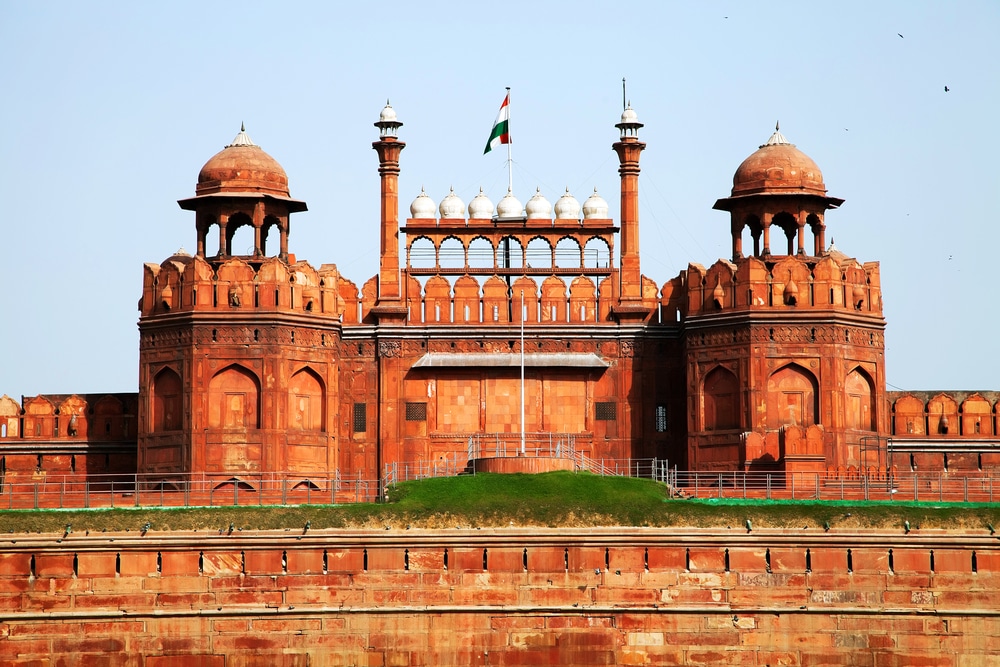
The Red Fort was known as the capital of the Mughal Empire in India. Its construction is attributed to Shah Jahan who also built the famous Taj Mahal in Agra, and was also known by the name Quila Mubarak and remained the residence of the Mughal Imperial family for nearly 20 decades.
2. The Taj Mahal, Agra
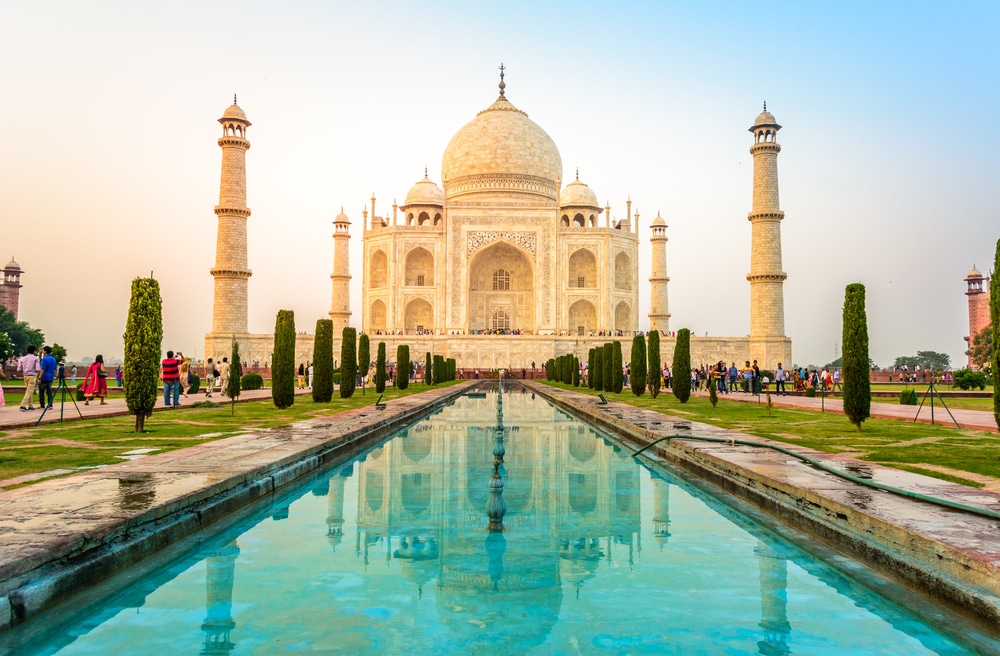
The name Taj Mahal translates to the ‘Crown Palace’ and is one of the most famous and marvellous buildings in India. Located in the city of Agra, the Taj Mahal is actually a mausoleum built to house the remains of Mumtaz Mahal, the wife of Mughal Emperor Shah Jahan.
3. Pangong Lake, Ladakh
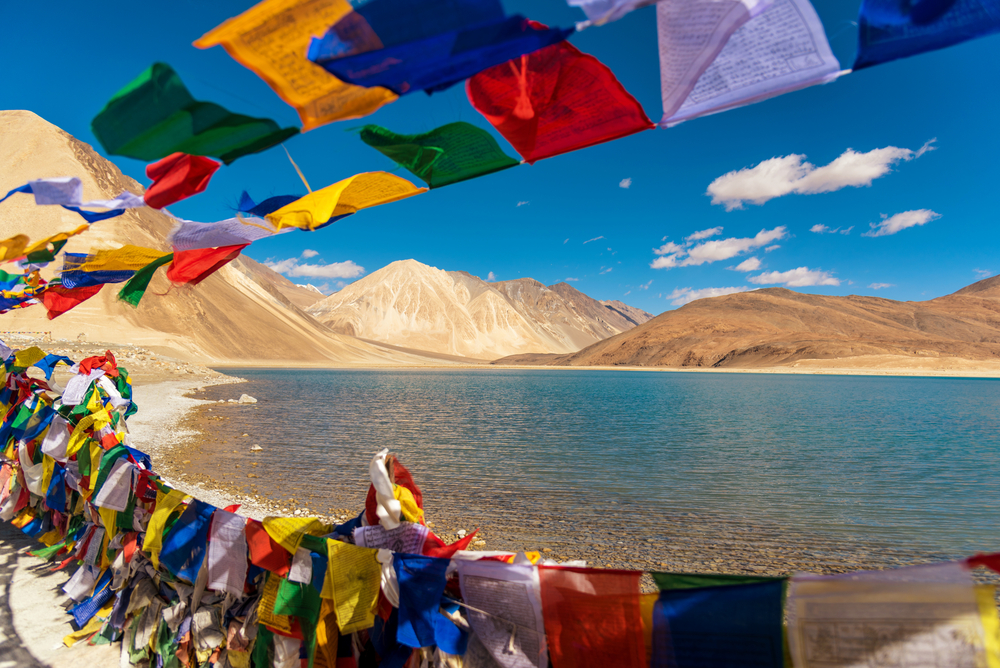
With its location between India and Tibet, Pangong Lake is an enchanting saltwater lake located in the Himalayas in Ladakh. The lake can be reached via a 4-5 hours drive from Leh via the scenic Changla Pass.
4. Valley of Flowers, Nainital
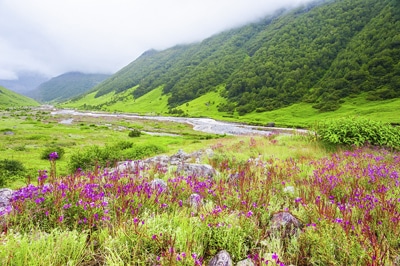
As evident by its name, the Valley of Flowers is known for its vast diversity of alpine flowering shrubs located in the western Himalayas. The place is a part of the larger Nanda Devi Biosphere Reserve in Nainital, Uttarakhand.
5. Jaisalmer Fort, Jaisalmer
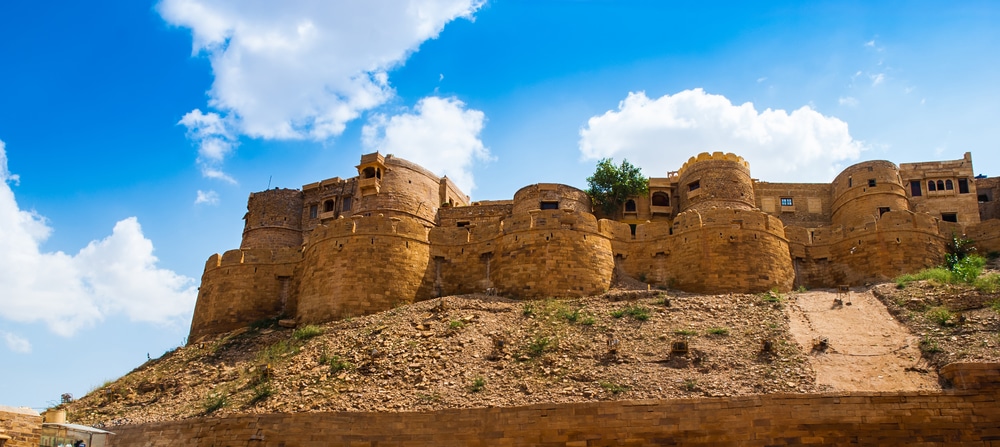
Located amidst the golden sands of the Thar Desert, the Jaisalmer Fort was built by the Bhati Rajput King Rawal Jaisal. It remained an important trade centre during the medieval era before the popularity of maritime trade centres such as Bombay and Calcutta.
6. Ruins of Hampi, Karnataka
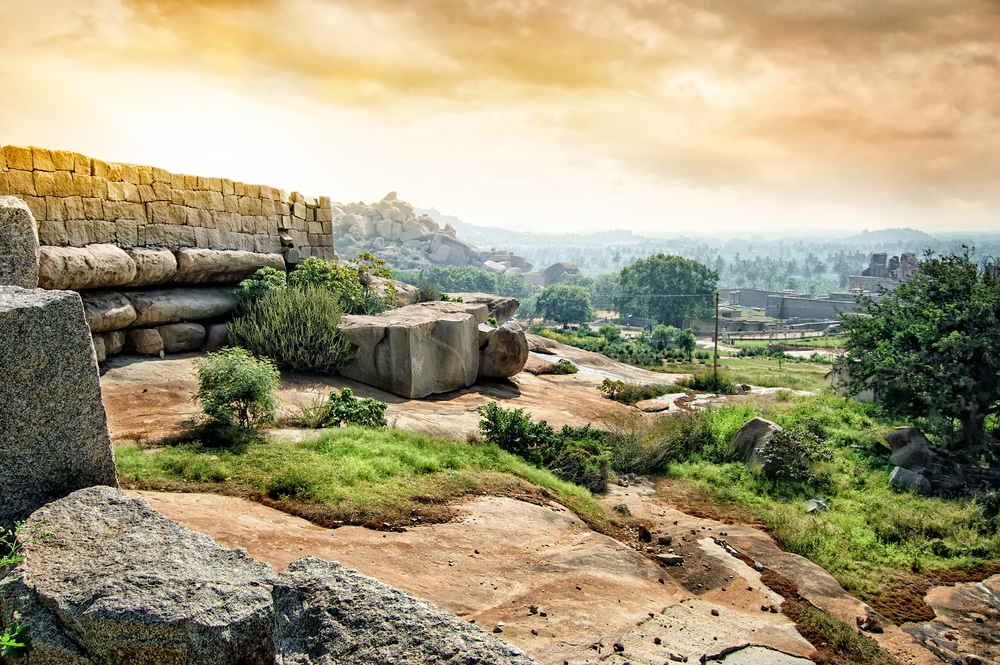
Hampi was the capital of the erstwhile Vijayanagar Empire and was known to be one of the richest cities of its time. Located on the shores of the Tungabhadra River in Karnataka, Hampi is also a UNESCO World Heritage Site famous for its stone carved structures, built in marvellous Dravidian style architecture, temples and monuments.
7. Ghats at Varanasi, Uttar Pradesh
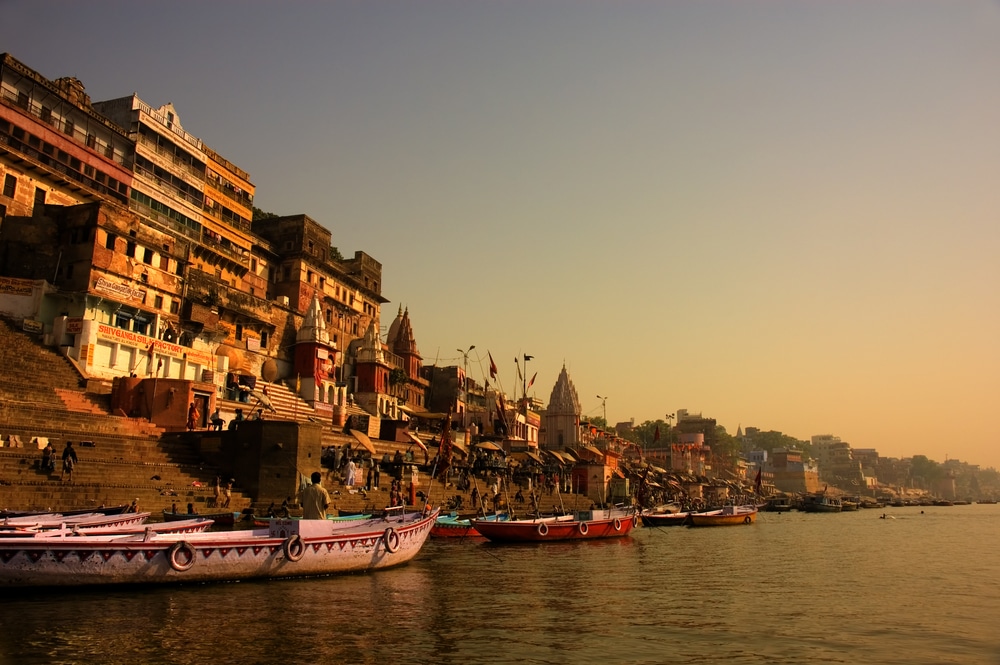
Also known by the names Kashi and Benares, Varanasi is said to have been continuously inhabited since the 11th century BC and is known to be the spiritual capital of India. The city is also known for its Ghats located on the banks of the Ganges River and was mostly built during the 18th century.
8. Backwaters, Kerala
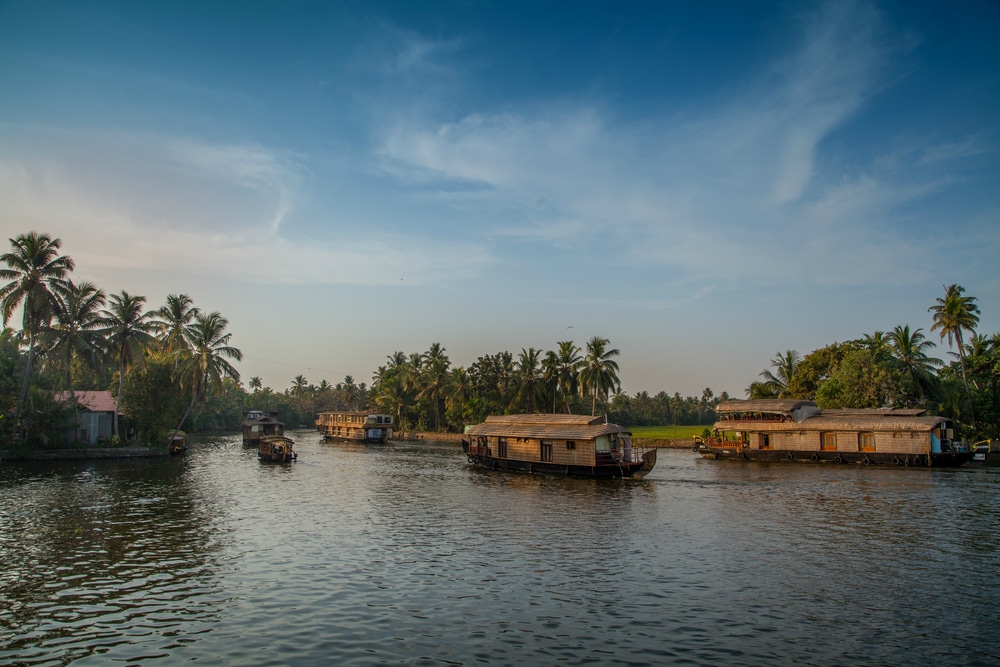
The Backwaters of Kerala are essentially a group of 5 lagoons that are linked by natural and manmade canals. These waterways were mainly used for trade during the older times and are known for their scenic beauty and a rich variety of flora, fauna, avifauna and marine life.
9. Old Goa, Goa
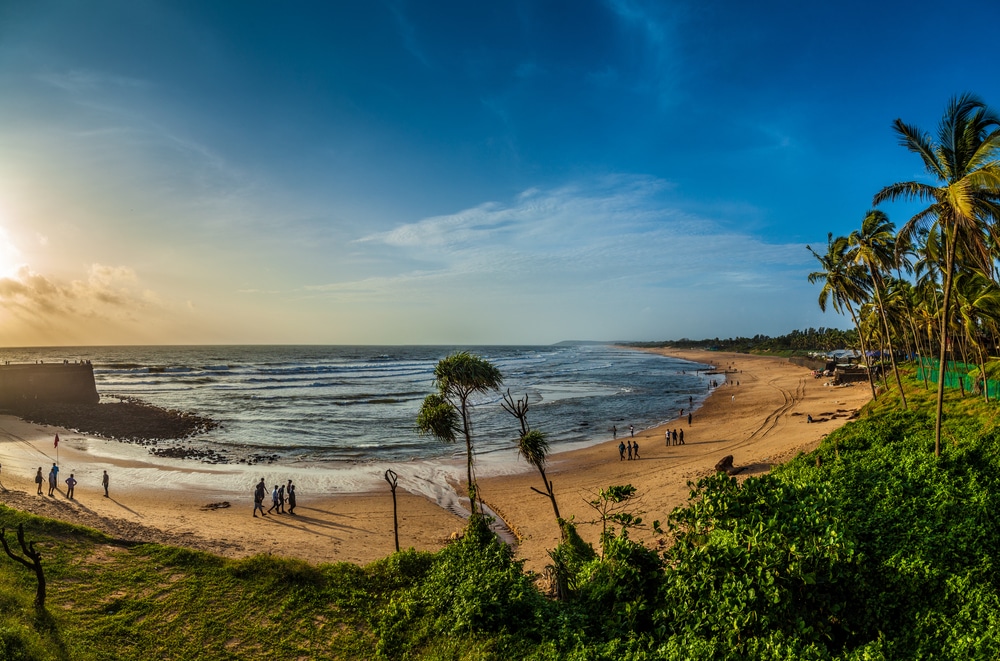
Located in the Northern Goa district of Goa, Old Goa refers to the historic town that served as the seat of the Portuguese in India till the 18th century. The city is also a UNESCO World Heritage Site due to its unique Baroque-style architecture and various churches.
10. Umaid Bhavan Palace, Jodhpur
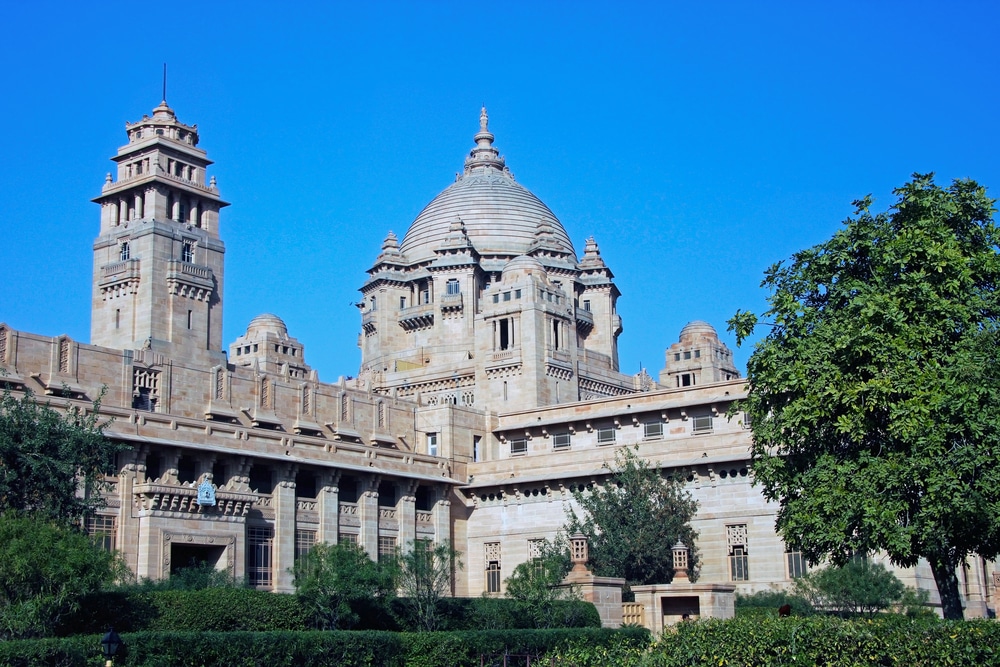
A marvellous example of the Indo-European architecture, the Umaid Bhavan was built during the 1920s and is known as one of the largest private residences in the world. The palace was criticized for its expensive architecture but also helped the citizens of Jodhpur to sustain their living during a 3-year famine.
11. Jama Masjid, Delhi
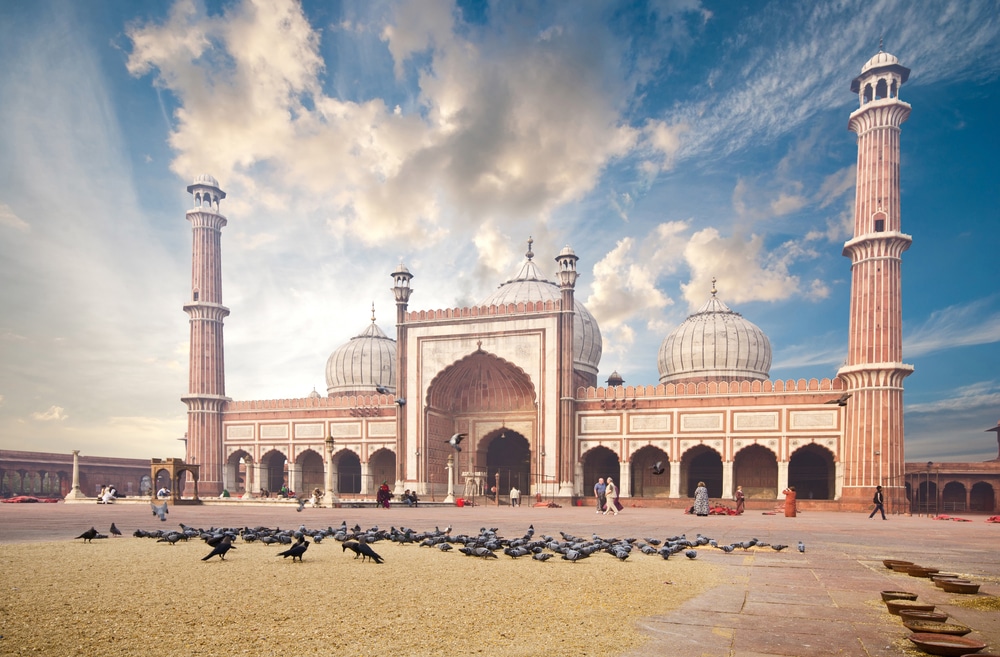
Known formally as ‘Masjid-i-Jahan-Numa’, the Jama Masjid was built by the Mughal Emperor Shah Jahan in the mid-17th century. The mosque is built in a majestic Indo-Islamic style mainly in Red Sandstone and marble.
12. Akshardham Temple, Delhi
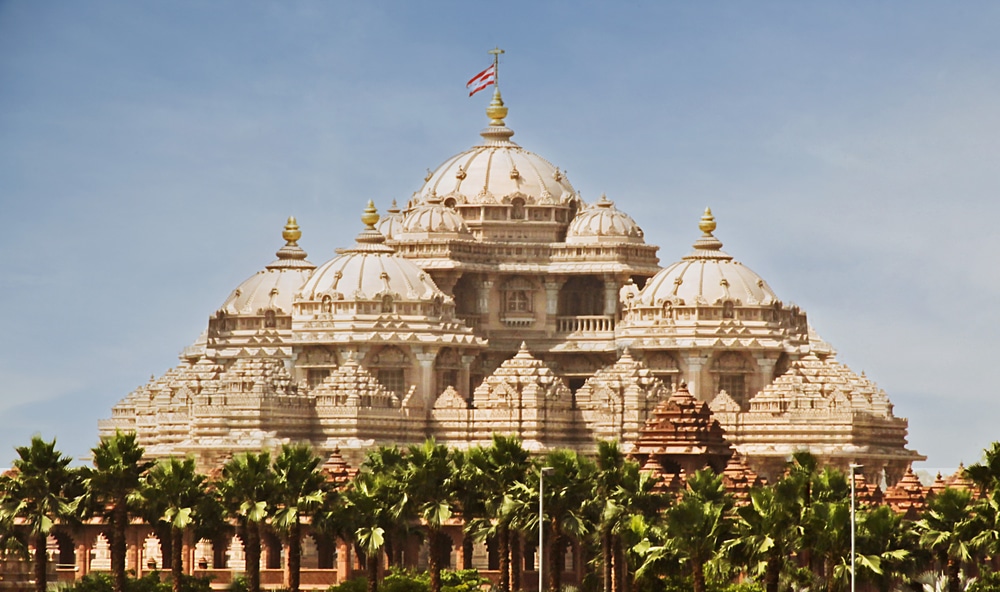
Inaugurated in 2005, the Akshardham temple in Delhi is known as one of the major Hindu temples in India. The structure of the temple is made from sculpted sandstone and took almost 7000 artisans to complete. The entire complex is decorated with sculpted pillars, and sculptures depicting deities, sadhus and animals along with scenes from Hindu mythology.
13. Old Bombay, Mumbai
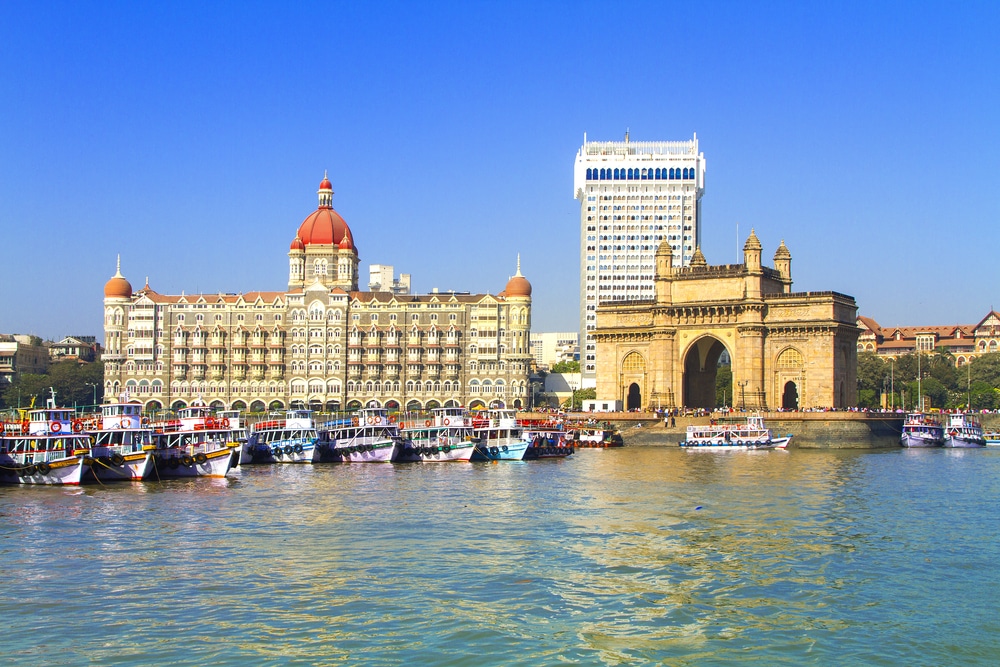
Since then the city was developed as a major port town in India after the construction of the Suez Canal. The old town is known for its historic architecture and various tourist attractions in Mumbai.
14. Ajanta and Ellora Caves, Aurangabad
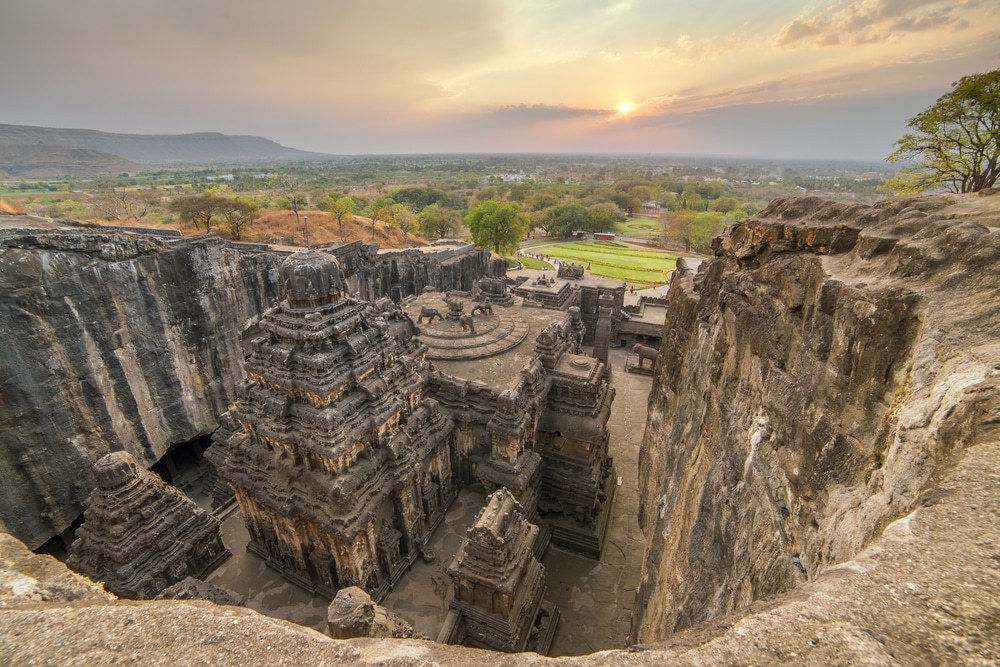
Ajanta and Ellora Caves in Aurangabad are rock-cut Buddhist caves that date back as far as the 2nd century BC to 800 AD. The Ajanta Caves mainly consist of rock-cut monuments dedicated to ancient Buddhist traditions, while the Ellora Cave contains Hindu, Buddhist and Jain monuments built during the Rashtrakuta Empire.
15. The Golden Temple, Amritsar
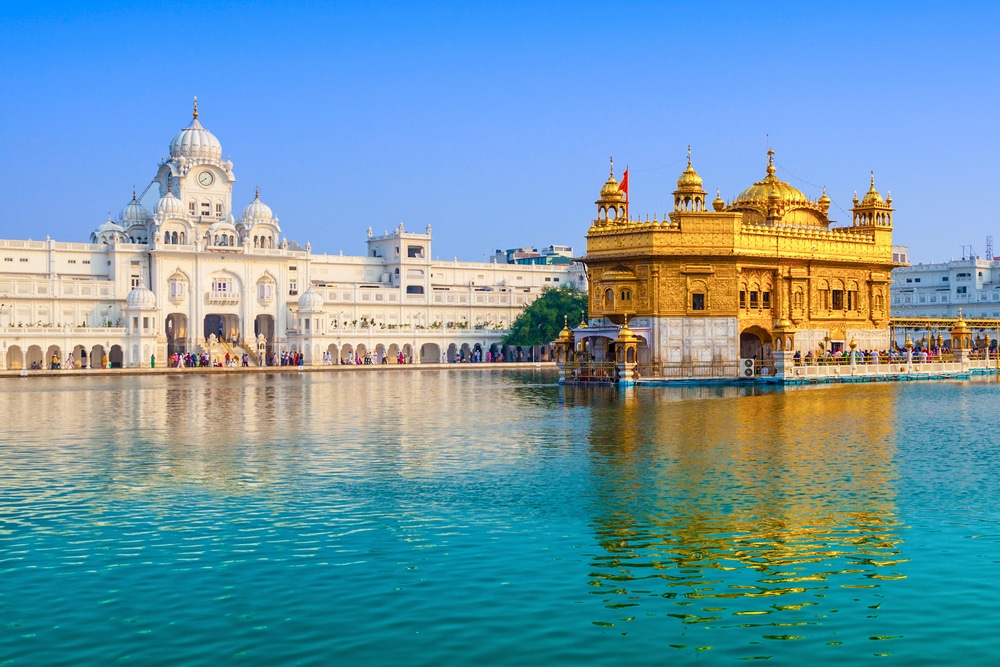
Located in the pilgrim town of Amritsar in the State of Punjab, Harmandir Sahib is known for its gilded façade and exquisite architecture that is one of a kind among all other religious places in India.
16. Charminar, Hyderabad
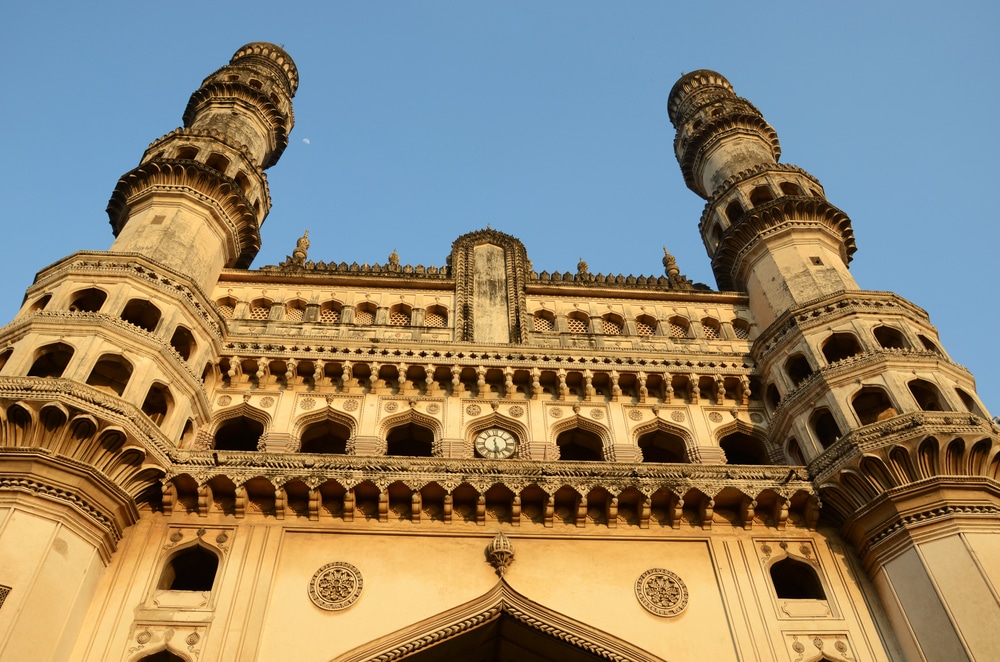
The Charminar or 4 Minarets is a historical monument that was built by the Qutub Shahi Dynasty during the late 16th century. Muhammad Quli Qutub Shah who was the ruler of Golkonda built the monument to commemorate the founding of the city of Hyderabad an important trade route. The structure is known for the signature 4 minarets, which are built in a marvellous Indo-Islamic style.
17. Amber Fort, Jaipur
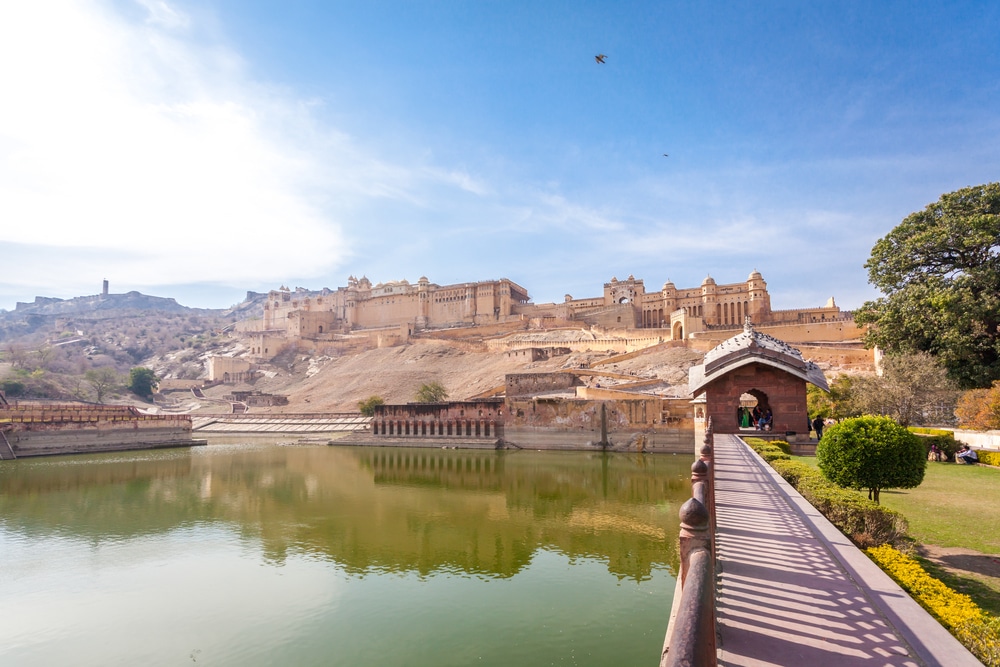
The medieval town of Amer was the former capital of the Kachwaha Rajputs, with the fort serving as their seat till the 18th century. The Amber Fort is not only one of the most majestic monuments in India but its scenic location and preservation make it a major tourist attraction in Jaipur.
18. Rashtrapati Bhavan, Delhi
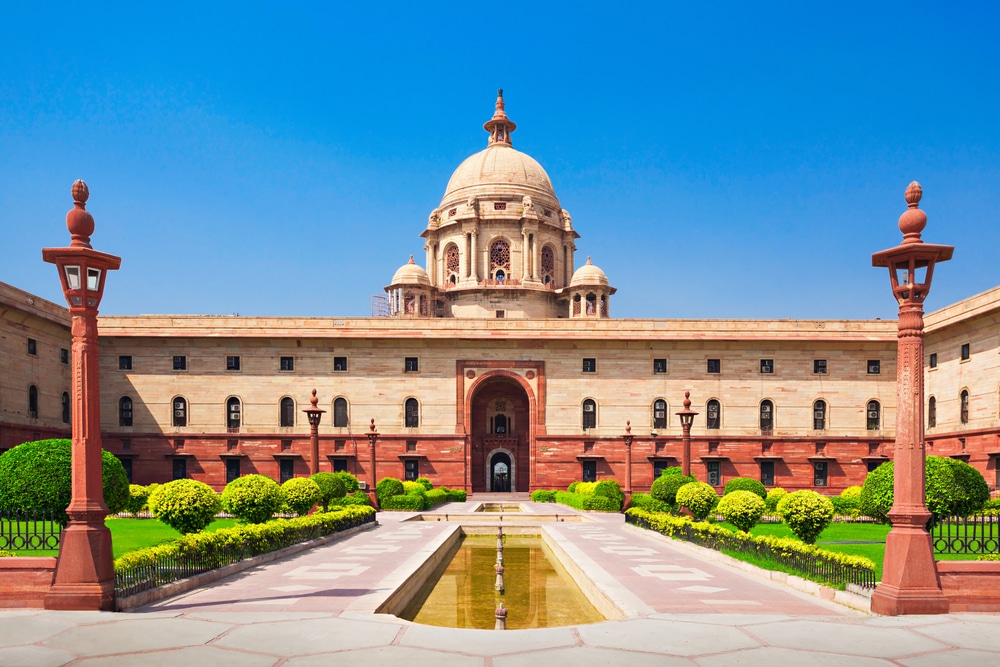
Known during the British Raj as the Viceroy’s House, Rashtrapati Bhavan is known as the seat and residence of the President of India.
19. Mahabodhi Temple, Bodh Gaya
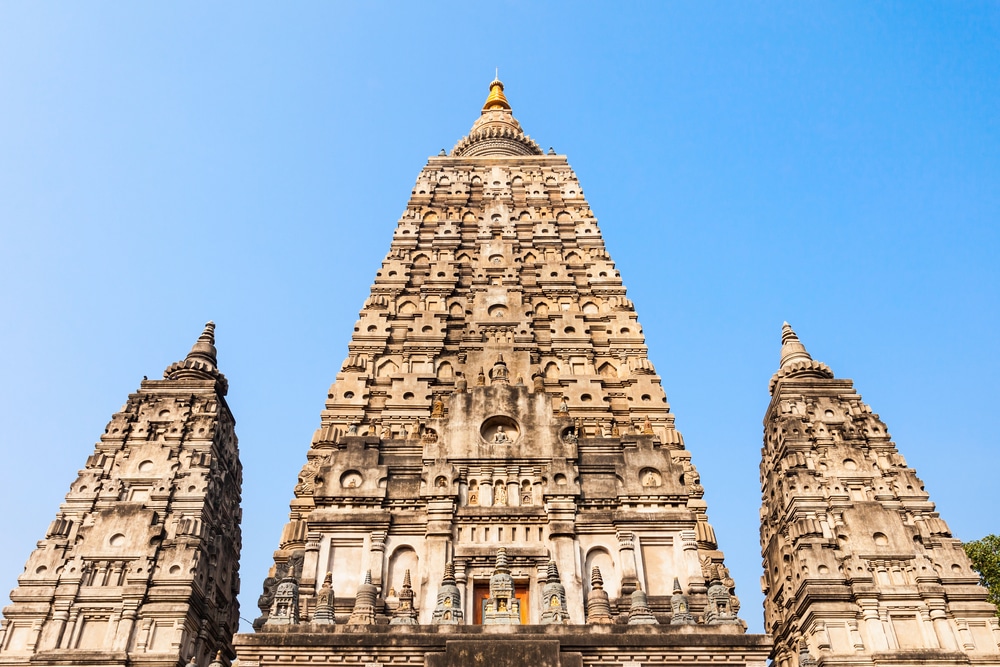
The Mahabodhi Temple is one of the major pilgrim sites for the Buddhists as it is the place where Lord Buddha received enlightenment. The temple is located at a distance of 96 kilometres from Patna and is also the site of the Bodhi Tree, the exact spot where Siddhartha Gautama meditated in around 589 BC.
20. Meenakshi Amman Temple, Madurai
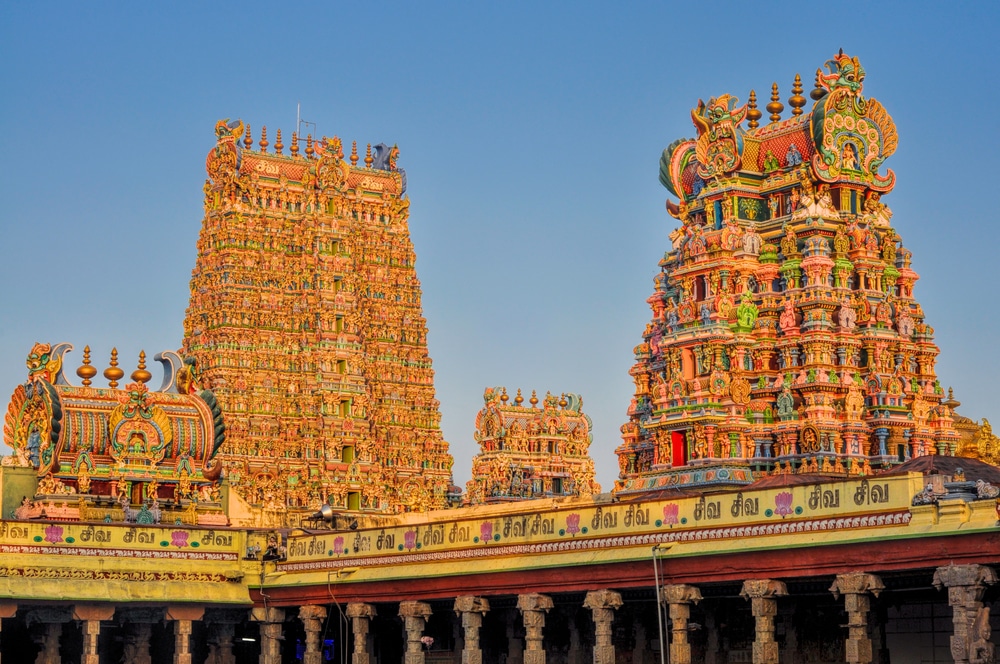
Dedicated to the Hindu deities Parvati and Lord Shiva, Meenakshi Amman Temple in Madurai is a typical Dravidian-style temple, with a prominent Gopuram that reaches almost 50 meters high. The current structure was built during the 17th century, although the temple has existed since ancient times.
21. Khajuraho Temples, Chattarpur
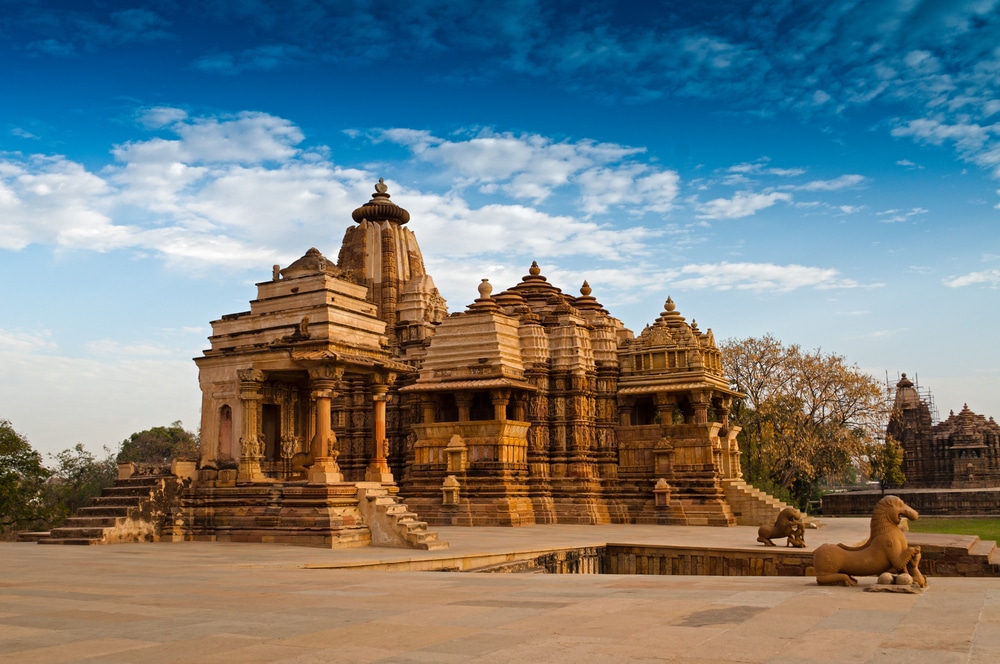
Located at around 175 kilometres from Jhansi, the Khajuraho Group of Temples is a UNESCO World Heritage Site built around the 1st century AD by the Chandela Rajputs.
22. Elephanta Caves, Mumbai
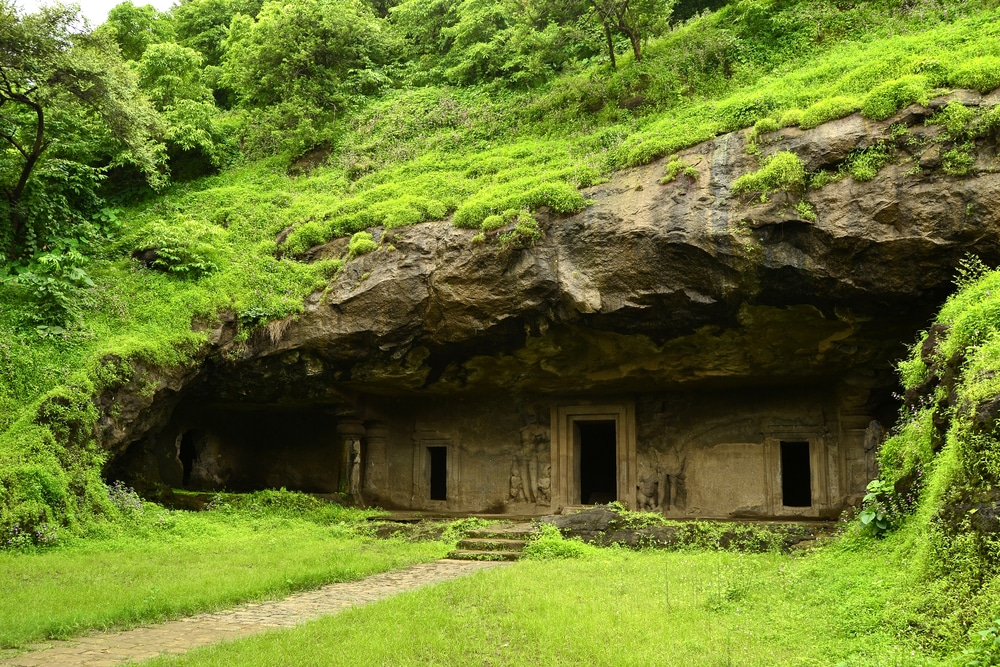
The Elephanta Caves are located on Elephanta Island, at a short distance of 11 kilometres from the Apollo pier in Mumbai. A UNESCO World Heritage Site, the Caves are famous for their ancient rock-cut temples dedicated to the Hindu and Buddhist traditions.
23. City Palace, Udaipur
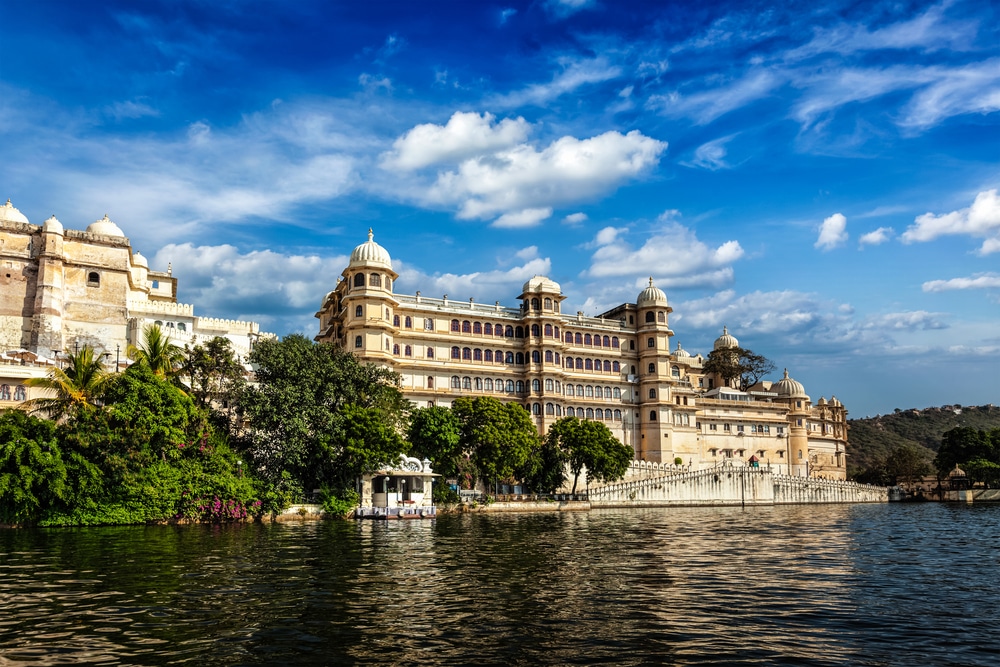
The construction of the City Palace was started in 1559 by Maharana Udai Singh and was improved by his successors for the next 300 years. The palace is one of the most visited monuments in India and is known for its opulent Hindu Rajput Architecture.
24. Havelock Island, Andamans
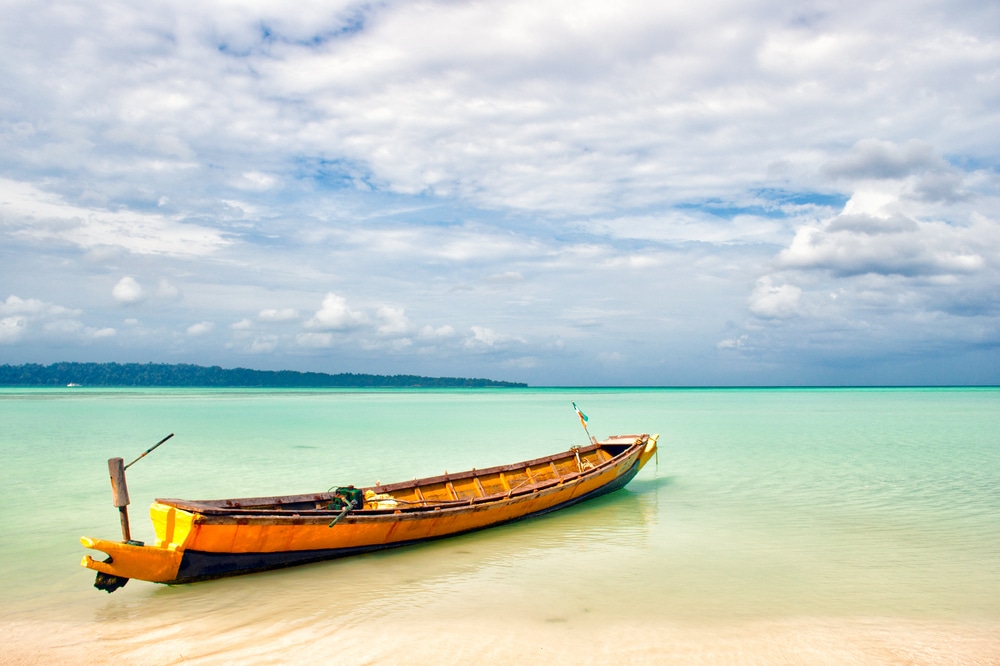
Havelock Islands are located in the Andamans at a short distance of 57 kilometres from Port Blair. The island is one of the largest in the Andamans and is known for its exquisite beaches and white sands.
25. Tirupati, Chittoor
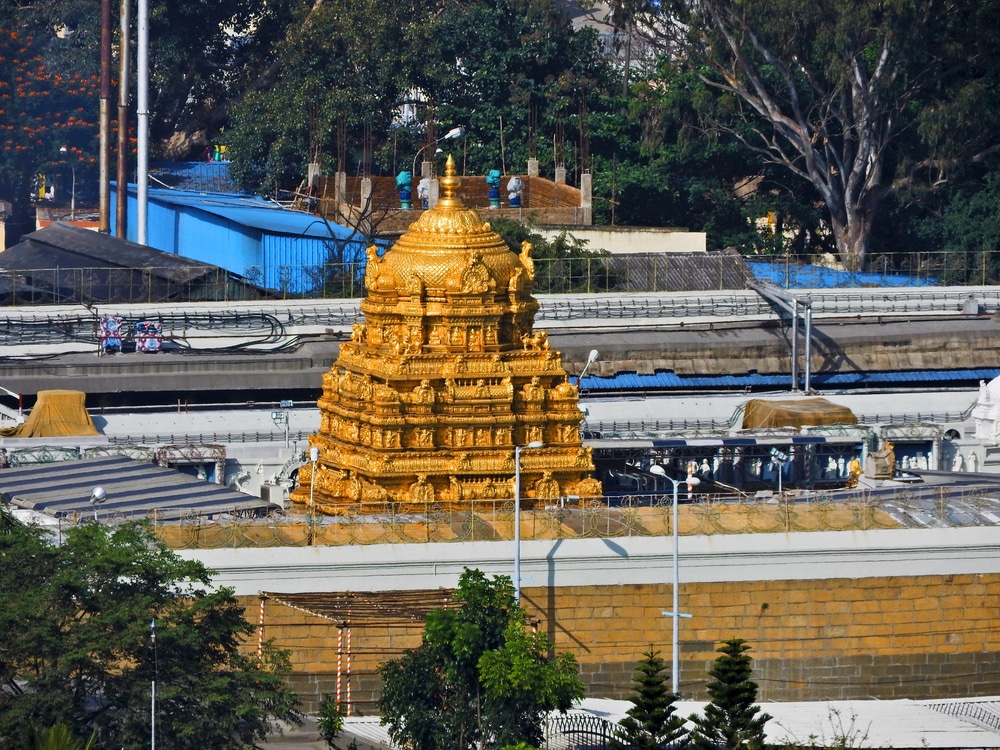
Dedicated to Lord Venkateshwara, a form of the Hindu deity Lord Vishnu, Tirupati is regarded as the richest Hindu temple in the world and is known for its remarkable Dravidian architecture. The temple is also located atop Tirumala hill at an elevation of 853 meters above sea level.
26. Tawang Monastery, Tawang
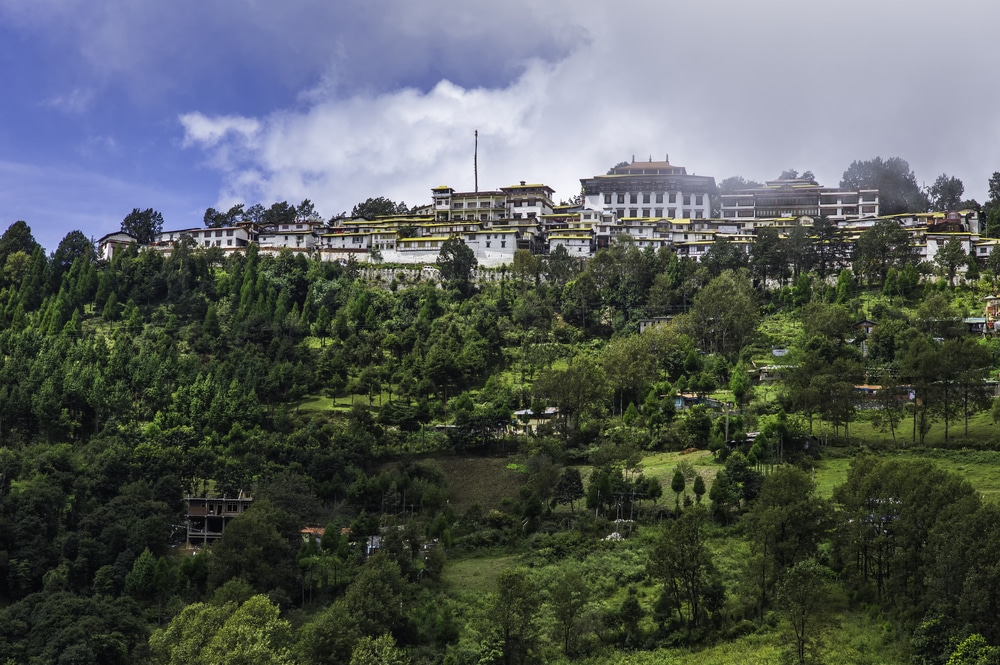
Known as the largest monastery in India, Tawang Monastery was founded in the 17th century, under the orders of the 5th Dalai Lama of the Tibetan Buddhist sect.
27. Kaziranga National Park, Assam
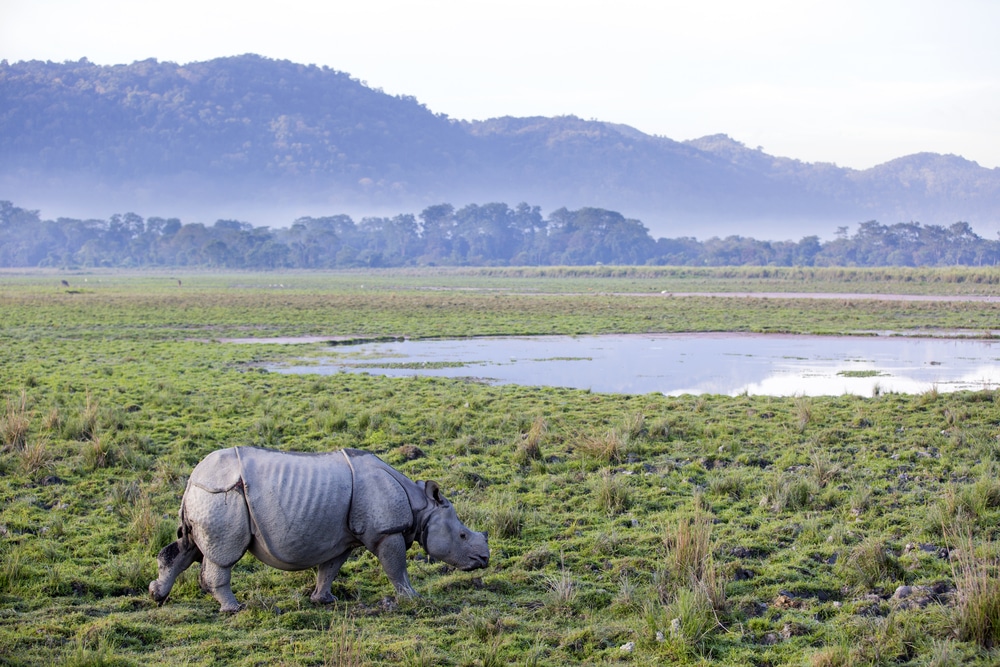
The Kaziranga National Park is a UNESCO World Heritage Site and is known to be one of the last few strongholds of the one-horned rhinoceros. It is spread around an area of 430 sq. kilometres and is known for its varied terrain and vegetation that houses many wildlife species.
28. Kesaria Stupa, Kesaria
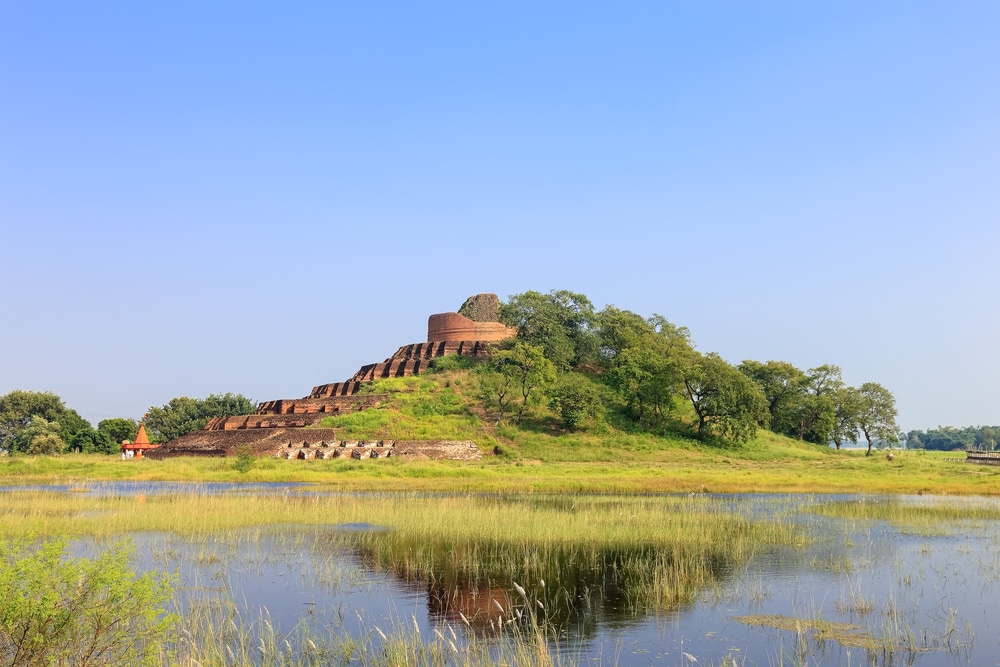
Located in Bihar, Kesaria Stupa is one the largest Buddhist stupas in the world. It was built around the 2nd and 7th century AD and stands more than 300 feet in height. The stupa was also known to be visited by Lord Buddha and is also mentioned in the writings of Chinese traveller Heiun Tsang signifies its historical importance.
29. Palitana Temples, Bhavnagar
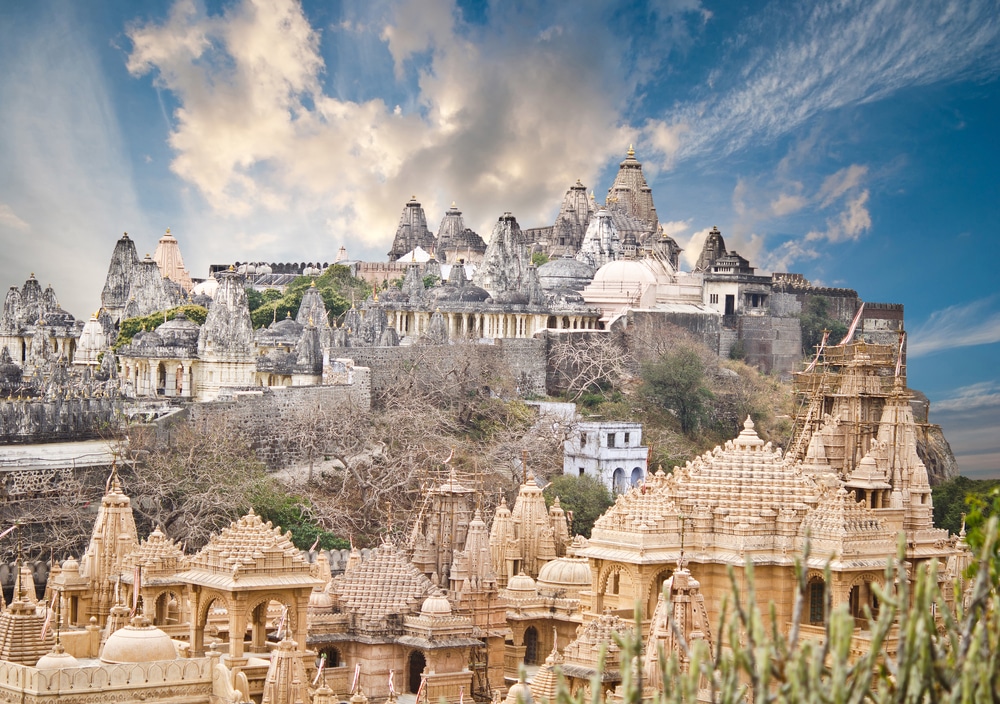
The Jain temples of Palitana are located in the Bhavnagar district of Gujarat and are known for their marvellous rock-sculpted exteriors. The group of temples is known to be one of the holiest pilgrimage sites for the Jain community and is located at an elevation of 603 meters, accessible by climbing around 4000 steps.
30. City Palace, Jaipur
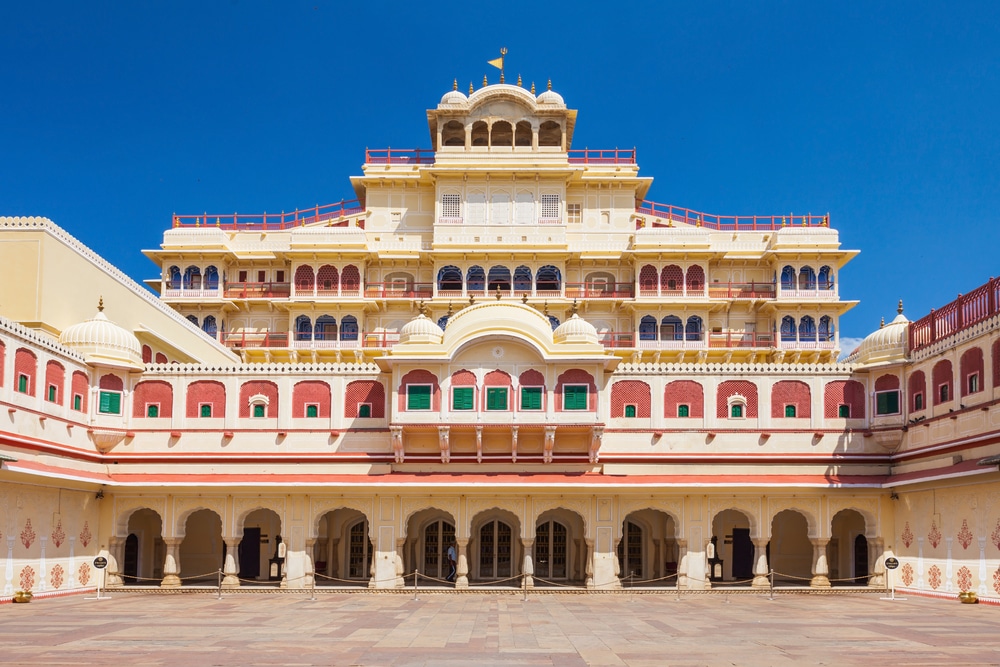
The city of Jaipur was established as the new capital of the Kachwaha Rajputs and the City palace is located in the heart of the walled city. Constructed during the 18th century, the palace is a remarkable example of Rajput architecture and combines traditional Hindu architecture with European elements.
31. Sun Temple, Konark
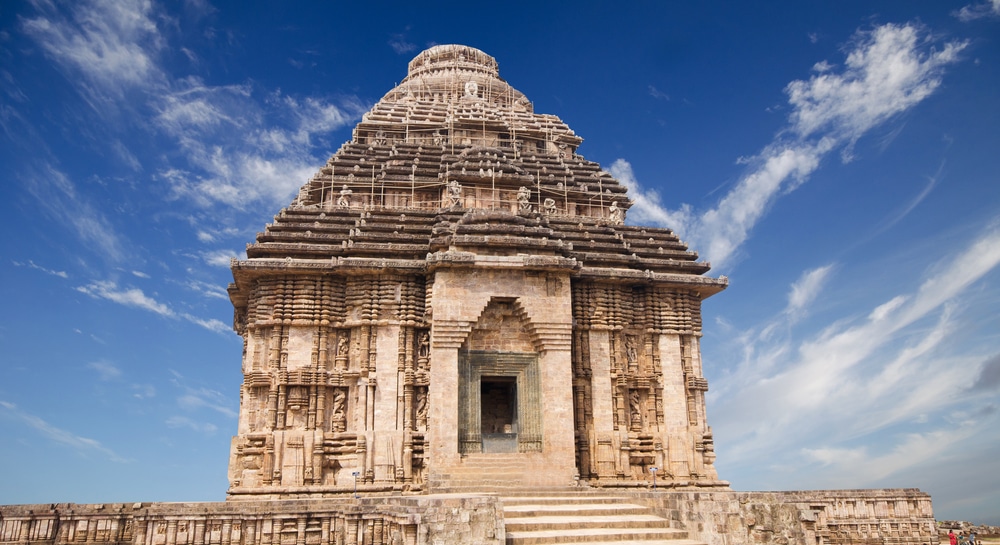
Sun temple of Konark was built during the 13th century by the kings of the Eastern Ganga Dynasty. Known for its remarkable architecture and antiquity, the temple is built by carving large boulders of rock and resembles a large stone chariot.
32. Rani Ki Vav, Patan
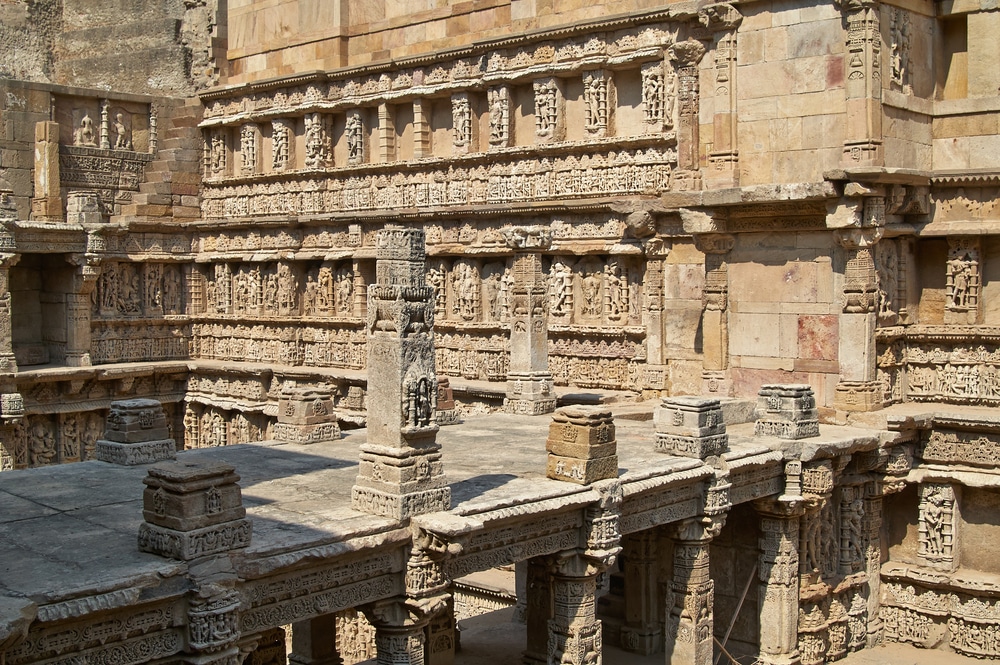
Constructed by the king of the Solanki Dynasty in Gujarat, Rani Ki Vav in Patan is a stone stepwell that is known for its intricate carvings and architecture. The construction of the place dates back to the 11th century AD and is one of the largest step-wells in India.
33. Chaturbhuj Temple, Orchha
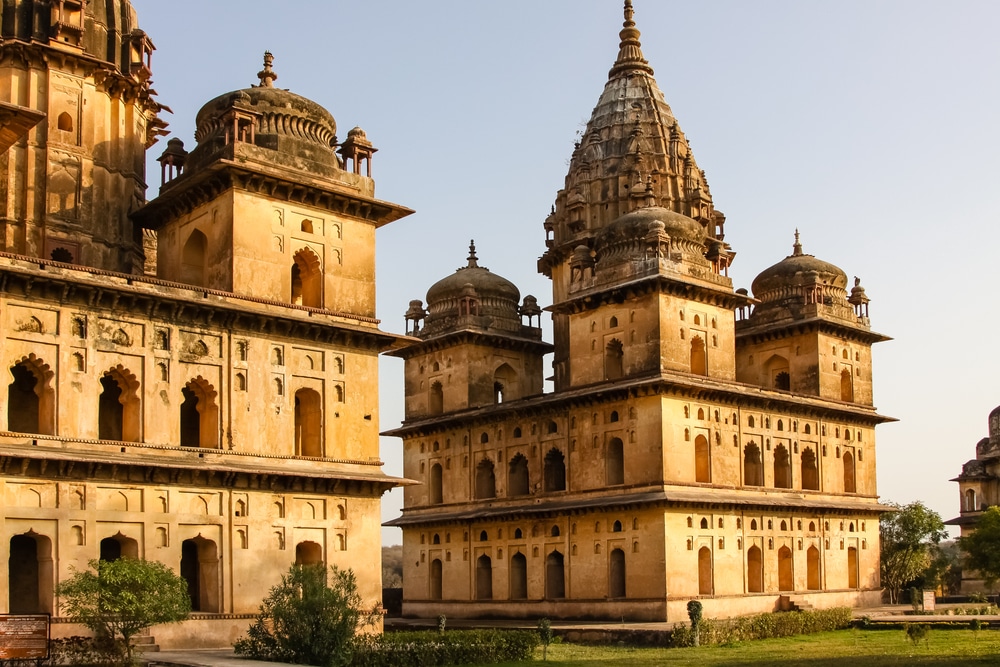
The temple is dedicated to Lord Vishnu and was constructed by the Bundela Rajputs of Madhya Pradesh around the 16th century AD. Chaturbhuj temple of Orchha is known for its remarkable architecture with tall spires, which give them an imposing look.
34. Cellular Jail, Port Blair
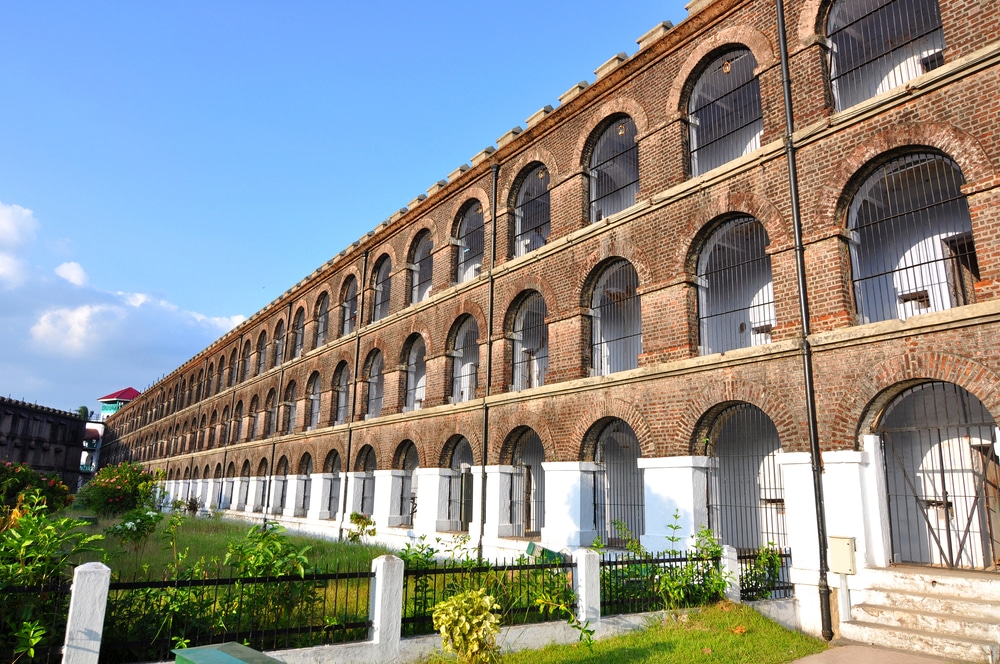
The Cellular Jail or Kala Pani is a historic Jail that was used to incarcerate political prisoners during British Rule in India. The construction of the prison complex dates back to the late 19th century as a response to the revolt of 1857.
35. Borra Caves, Vishakhapatnam
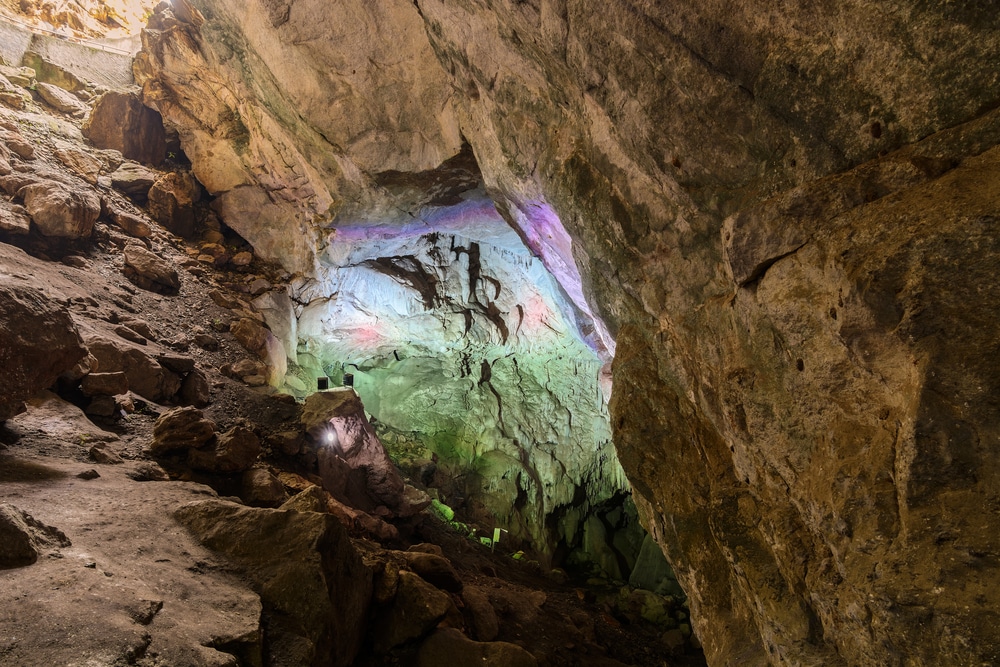
The Borra Caves in Vishakhapatnam are arguably the deepest cave in India that goes to a depth of 80 meters. The caves are covered with stalagmites and stalactites due to the limestone content in the walls. The caves are also a revered Hindu pilgrimage spot due to the presence of several stalagmite lingams, the representation of Lord Shiva.
36. The Ridge, Shimla
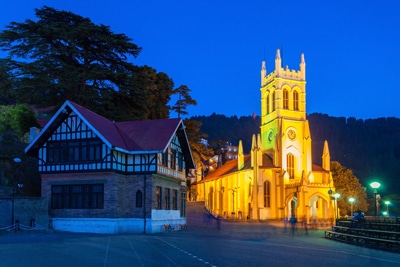
If you are on your visit to the enchanting city of Shimla, then you must visit ‘The Ridge’. The place is a large open area, located in the centre of Shimla and is the heart of all its commercial and tourist activities and connects several places of interest in Shimla.
37. Tso Moriri Lake, Ladakh
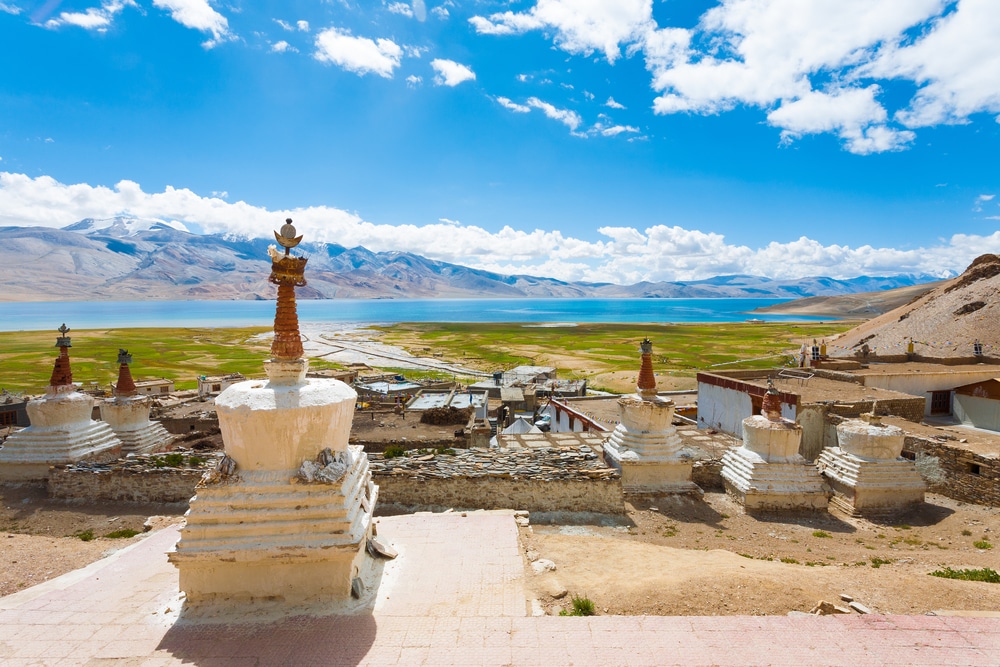
The Tso Moriri is another enchanting glacial lake, located in the high mountain escapades of Ladakh at a height of 4522 meters above sea level. The place is known for its pristine blue waters and views of the surrounding Himalayas.
38. Mysore Palace, Mysore
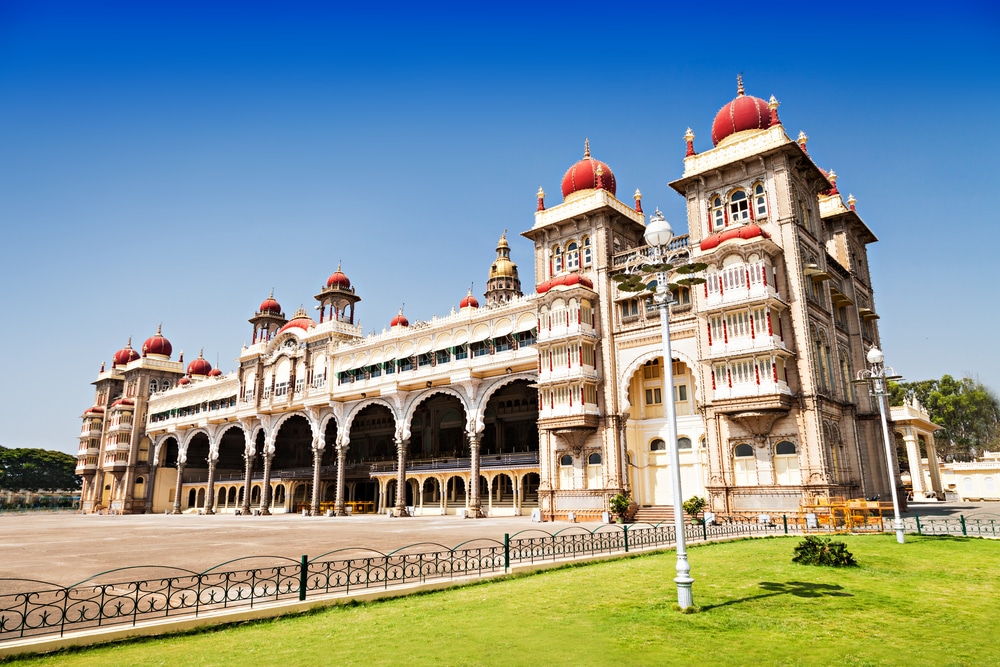
The Mysore Palace was built between 1897 and 1912, by the Wodeyar Kings of Mysore and is known for its remarkable architectural design, receiving more than 6 million visitors each year. The design of the palace beautifully combines elements from Hindu, Mughal and Gothic architecture decorated with ornamental designs.
39. Bangalore Palace and Grounds, Bangalore
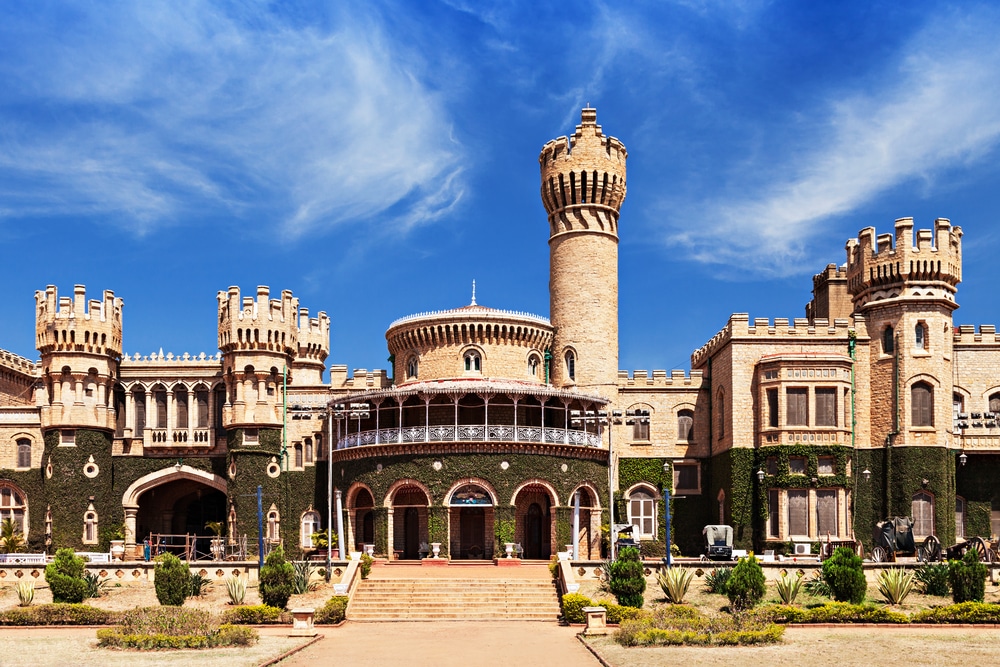
One of the few buildings in India to be built in Tudor Style, the Bangalore Palace was constructed by the Maharaja of Mysore during the early 20th century and is one of the must-visit places in Bangalore.
40. Gwalior Fort, Gwalior
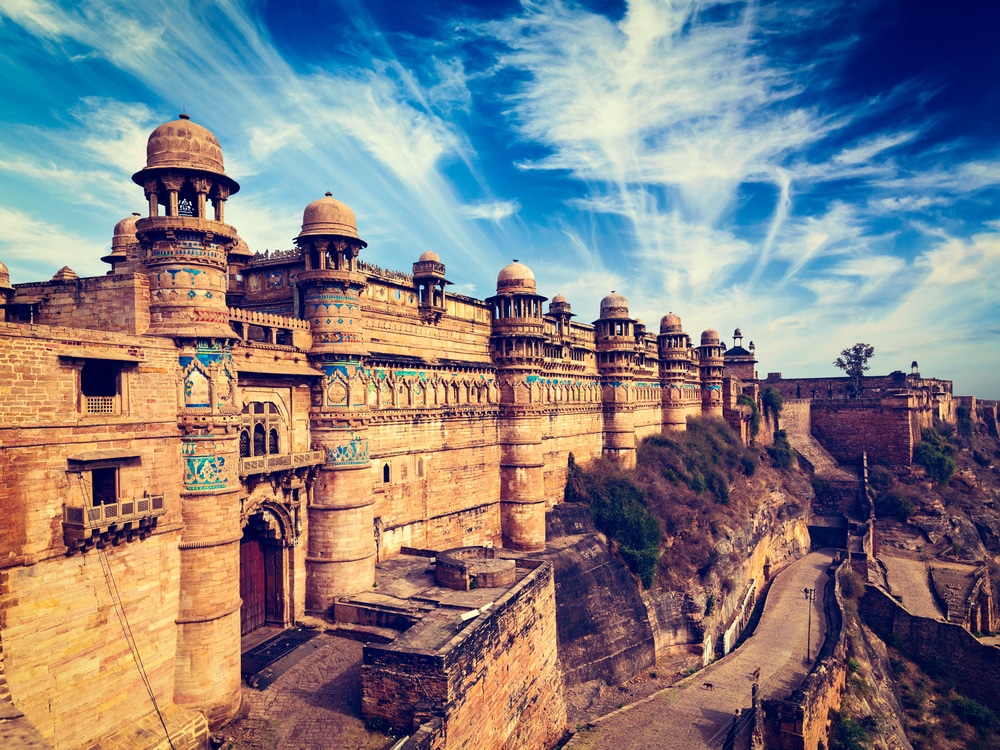
Although the fort has seen a large number of various dynasties and empires, it was said to have been constructed by Suraj Sen Kachwaha during the 5th century. Gwalior Fort in Gwalior comprises two main palaces and several temples that are dedicated to Hindu, Buddhist and Jain traditions.
41. Bhimbetka Rock Shelters, Raisen
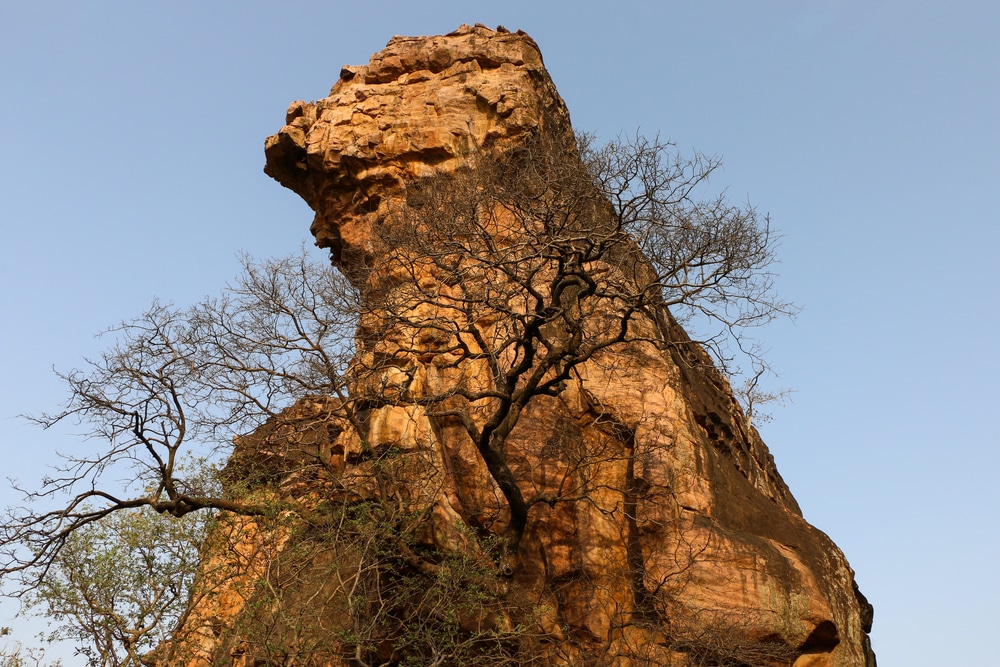
A UNESCO World Heritage Site, the Bhimbetka Rock Shelters are known to be one of the oldest archaeological sites in the world.
42. Victoria Terminus (Chattrapati Shivaji Terminus), Mumbai
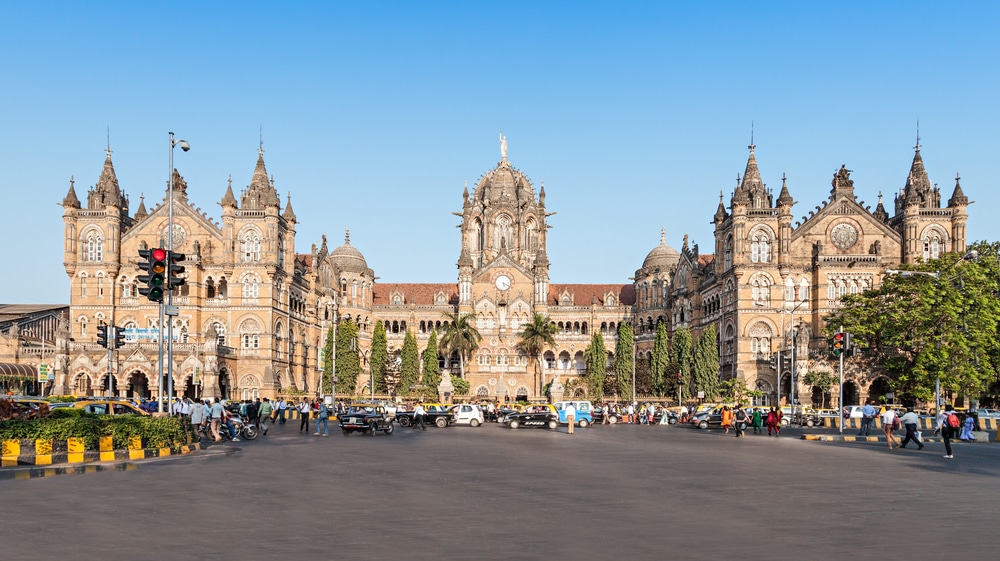
One of the finest examples of Indo-Gothic Revival architecture, Victoria Terminus or Chattrapati Shivaji Terminus is one of the busiest railway stations in India. The construction was completed in 1888 and the design of the building is attributed to Fredrick William Stevens.
43. Jagannath Temple, Puri
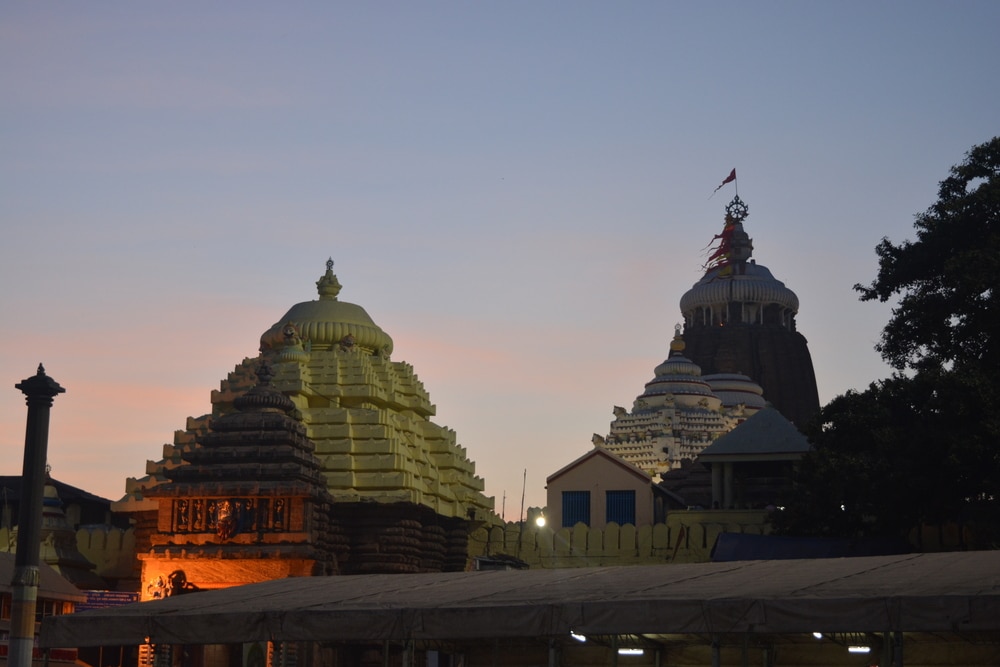
The site of the temple has been used for worship since ancient times, but the existing structure was built by the Kings of the Eastern Ganga Dynasty during the 12th century AD. Jagannath Temple in Puri is known as a major Hindu pilgrimage site and is also a part of the Char Dham pilgrimage in Hindu traditions.
44. Lingaraja Temple Complex, Khurda
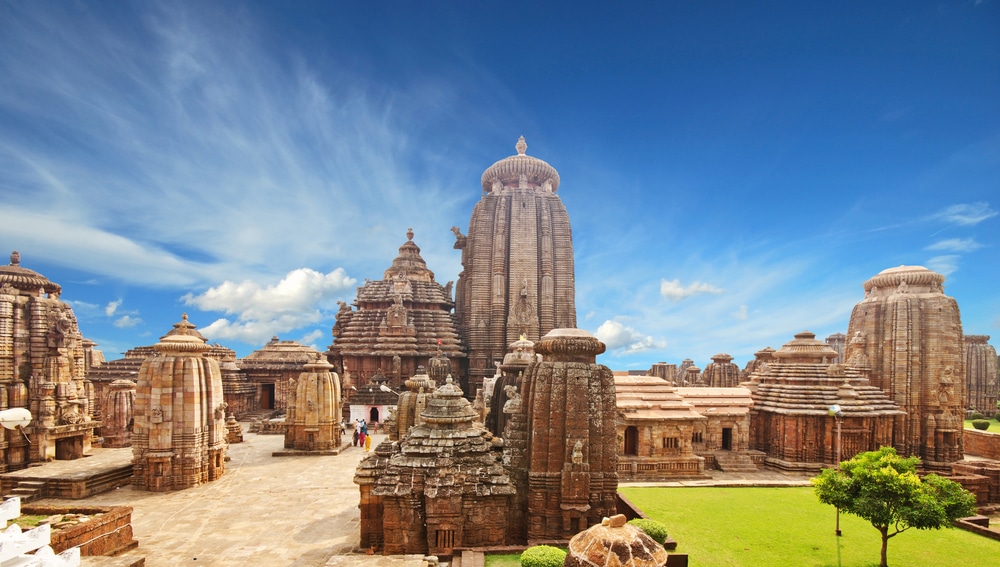
Dedicated to Lord Shiva, the Lingaraja Temple is one of the largest Hindu temples in Bhubaneswar and was built during the 11th century. The temple is also one of the few remaining specimens of the Kalinga style architecture and was built by the rulers of the Ganga dynasty.
45. Udayagiri Caves, Bhopal
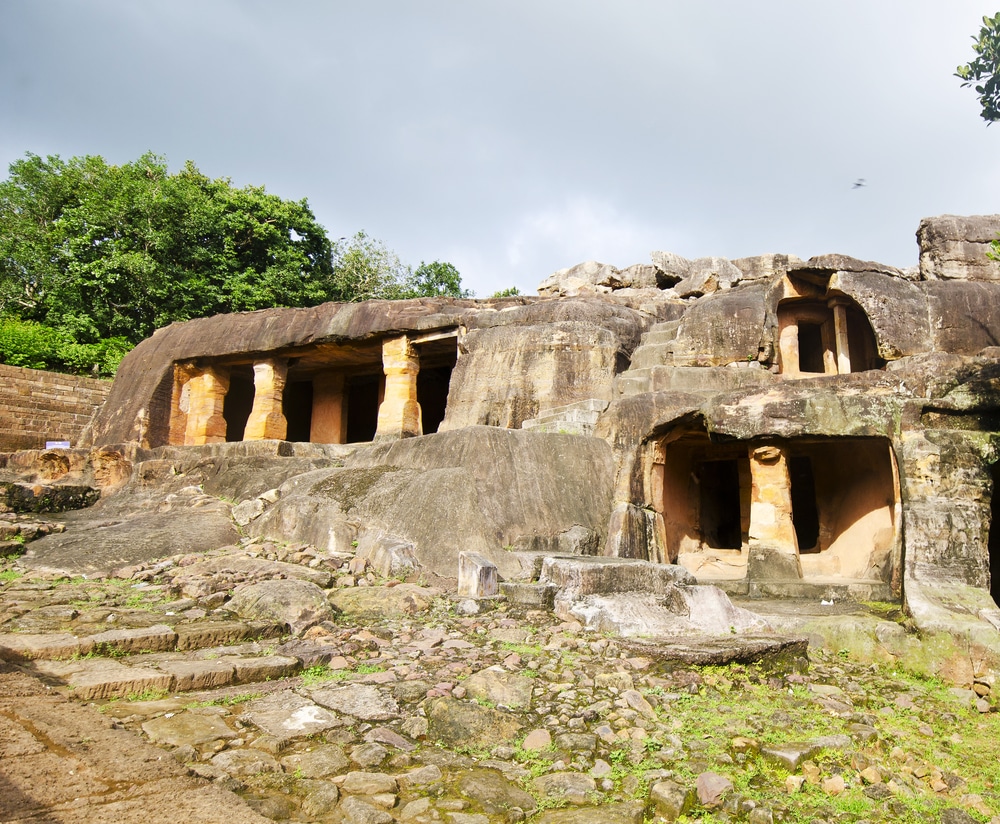
The Udayagiri Caves are known to be some of the oldest Hindu structures in India and were said to have been constructed by the Gupta Empire around the 5th century AD. The caves are one of the most visited tourist destinations in Bhopal.
46. Qila Mubarak, Bhatinda
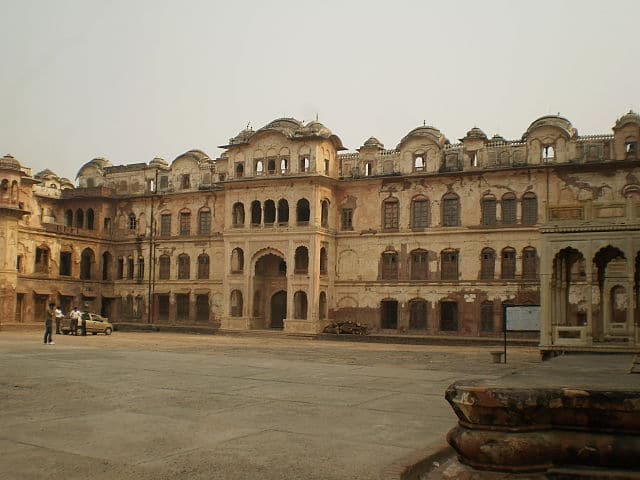
Known to have been built by the Kushan Emperor Kanishka during the 1st century AD, The Quila Mubarak is one of the oldest forts in India. The fort is notable for being the final resting place of Razia Sultan, the first female monarch of Delhi who was incarcerated here.
47. Jallianwala Bagh, Amritsar
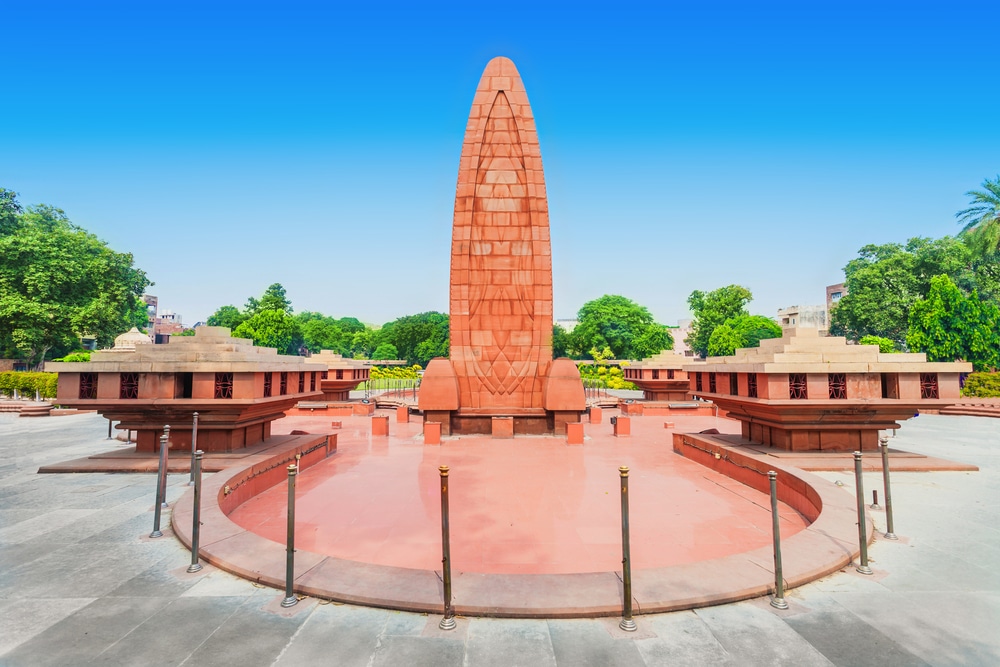
One of the major sites of the Indian struggle for Independence, the Jallianwala Bagh is a monument of National importance. It was here that the British officials opened fire on a rather peaceful Indian crowd including women and children.
48. Chhatrapati Shivaji Maharaj Vastu Sangrahalay, Mumbai
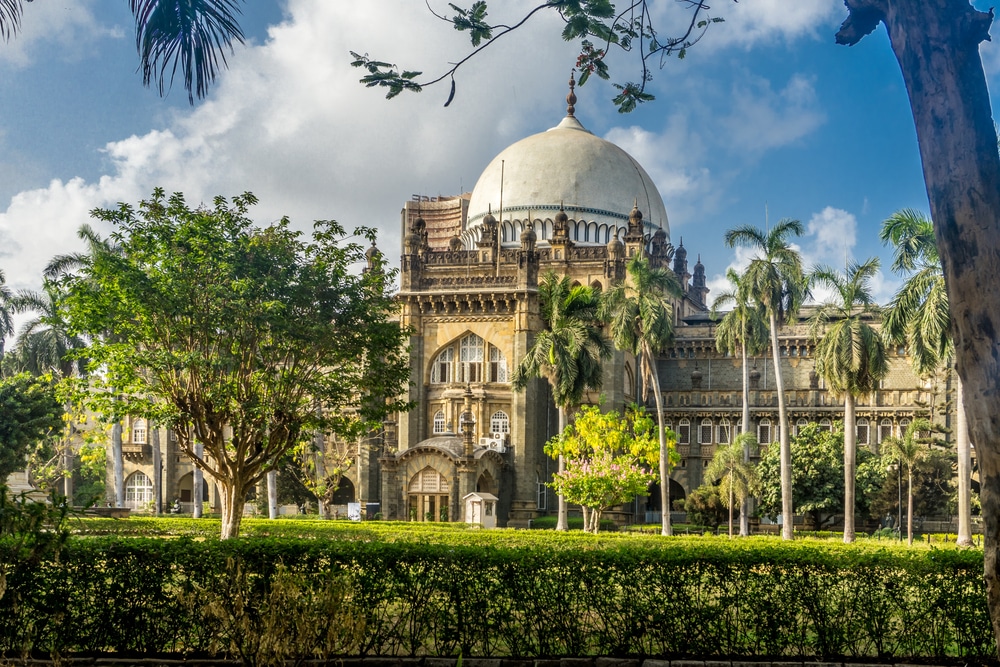
The building was initially built as the residence of the Prince of Wales who visited India in 1904. After his departure, the building was turned into a museum to promote the arts and crafts of India. Chhatrapati Shivaji Maharaj Vastu Sangrahalay is one of the largest museums in India and is known for its extant collection of artefacts and archaeological findings that provide a view of the country’s history.
49. Lake Palace, Udaipur
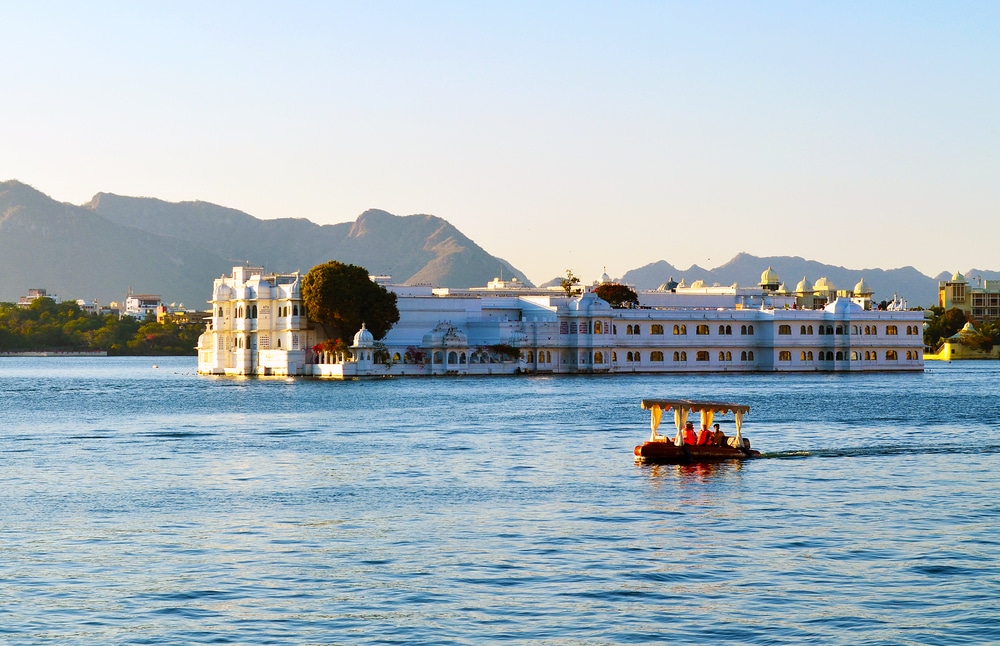
Marketed as one of the most romantic luxury hotels in India, Lake Palace was constructed by Maharana Jagat Singh II of Mewar in the mid-18th century.
50. Ghats and Old City of Pushkar, Pushkar
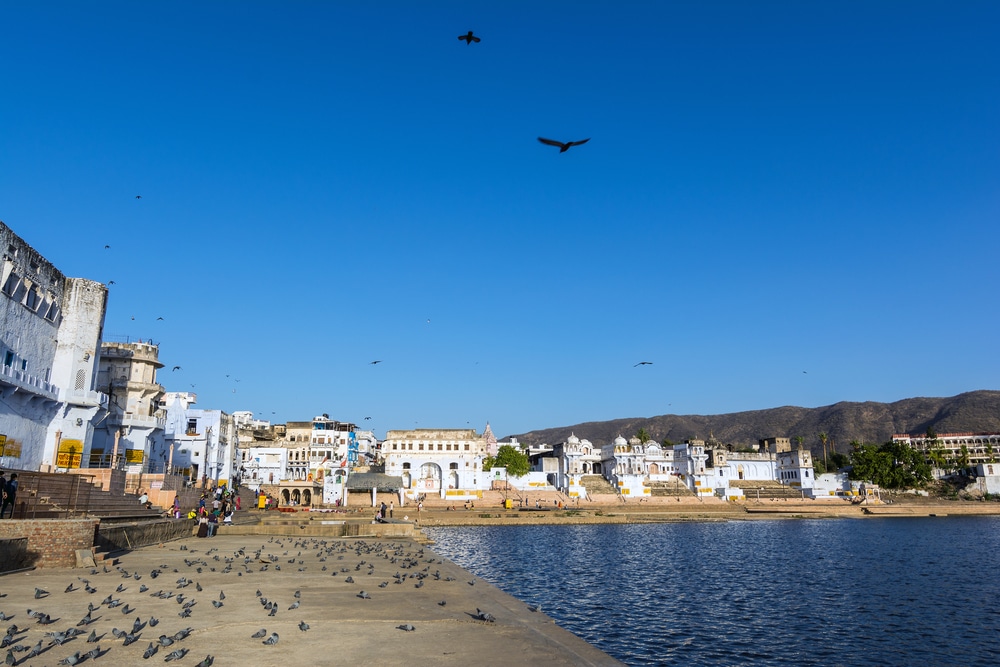
The holy town of Pushkar is one of the most revered places by the Hindus and is often called the ‘King of pilgrimage sites’. The lake is said to have been created by the blessings of Lord Brahma and the surrounding city is one of the oldest in India.
51. Ranakpur Jain Temple, Ranakpur
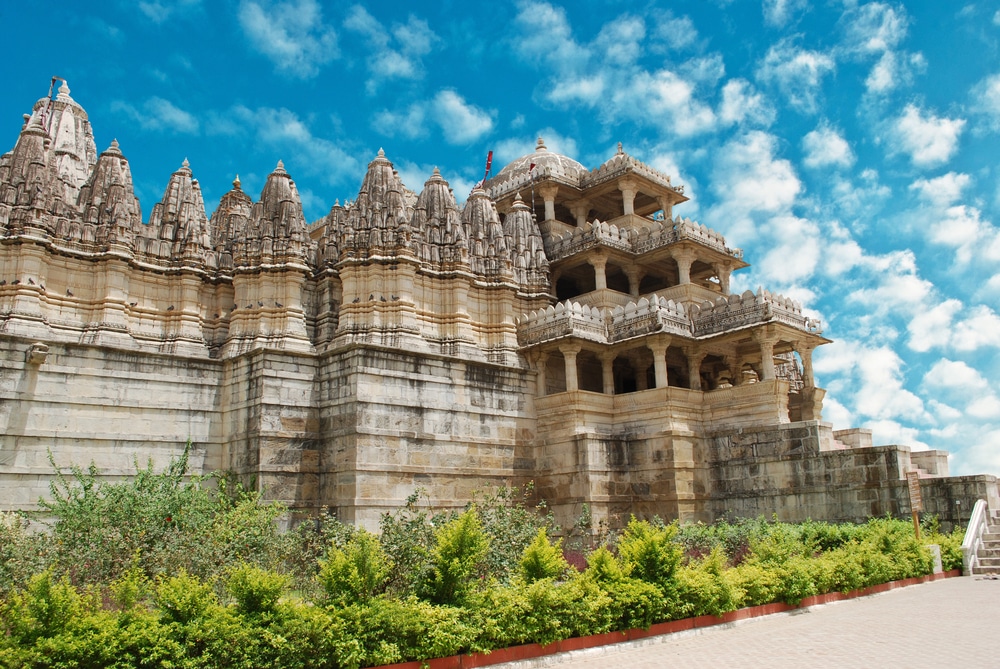
One of the finest examples of the Maru-Gurjara Architecture, The Ranakpur Jain Temple is located in the Pali district of Rajasthan. The temple was constructed in 1437, under the patronage of the Maharana of Mewar.
52. Bada Imambara, Lucknow
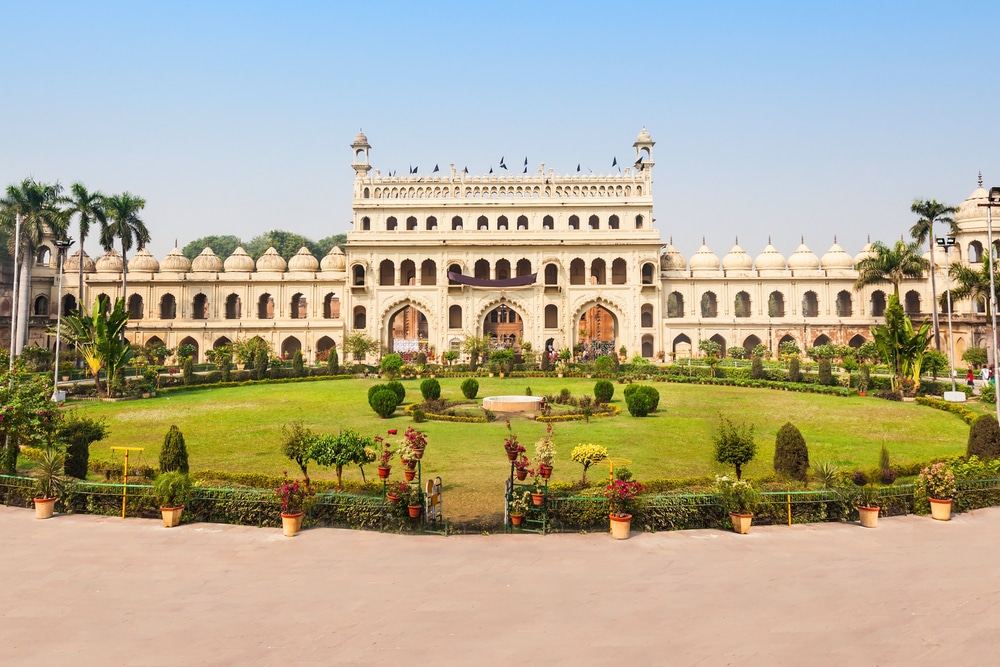
Constructed in the late 18th century, Bada Imambara in Lucknow is one of the largest Shia monuments in India. The monument is also famous for its maze-like labyrinth called ‘Bhulbhulaiya’ which contains 489 identical doorways.
53. Fatehpur Sikri, Agra
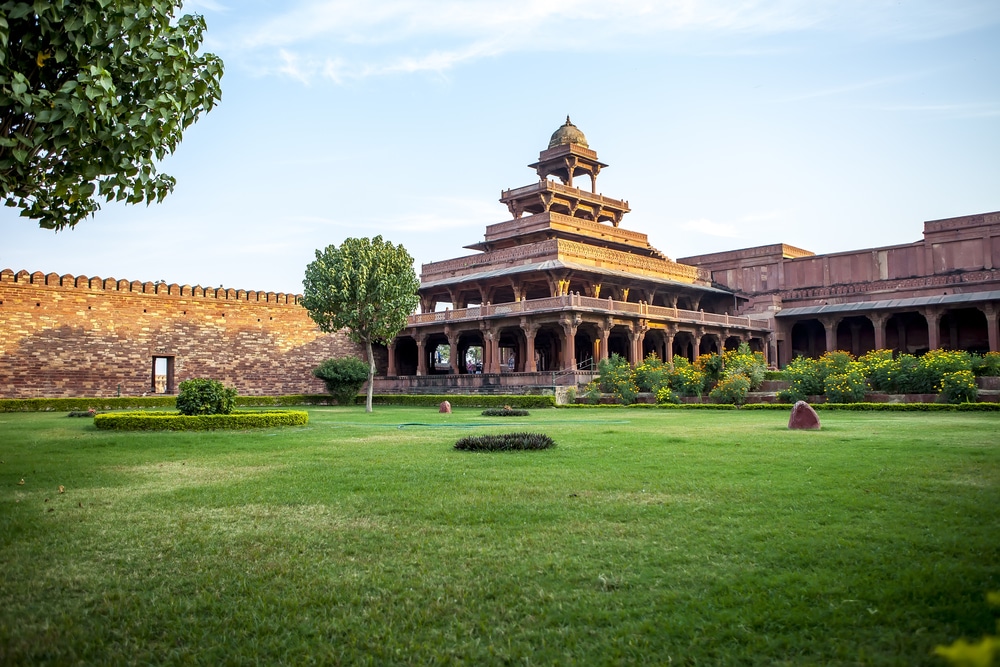
Fatehpur Sikri is a historic town located near Agra in the state of Uttar Pradesh. It was built by the famous Mughal Emperor Akbar as the capital of his empire. The city was abandoned later due to water shortage and fear of invasion by the nearby Rajput states.
54. Humayun’s Tomb, Delhi
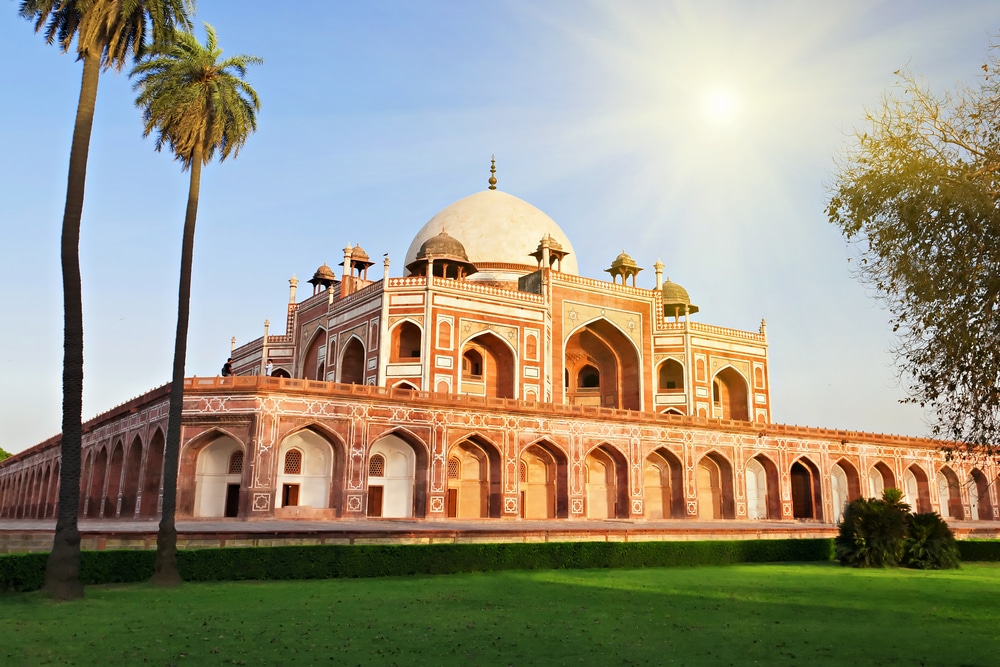
Humayun’s tomb was built in 1572 by the Mughal Empress Beda Begum. The construction of the monument was overseen by Akbar and is one of the first garden mausoleums in India.
55. The Great Stupa, Sanchi
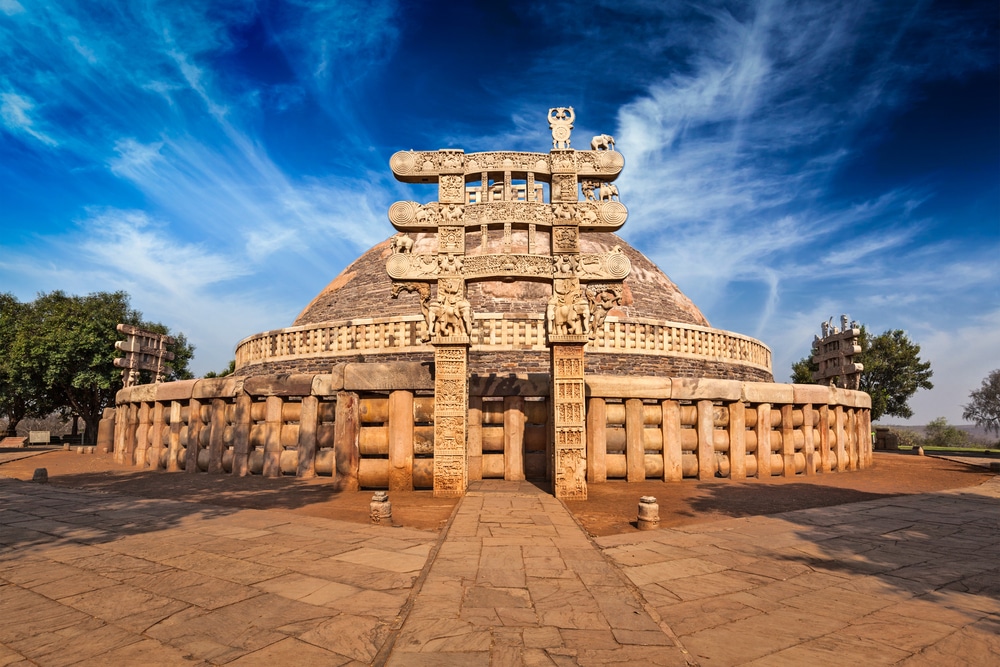
One of the few surviving examples of Mauryan-era buildings, The Great Stupa is located in Sanchi, Madhya Pradesh. Being built over the relics of Lord Buddha, it was also a major pilgrimage site for the Buddhists.
56. Jantar Mantar Observatory, Jaipur
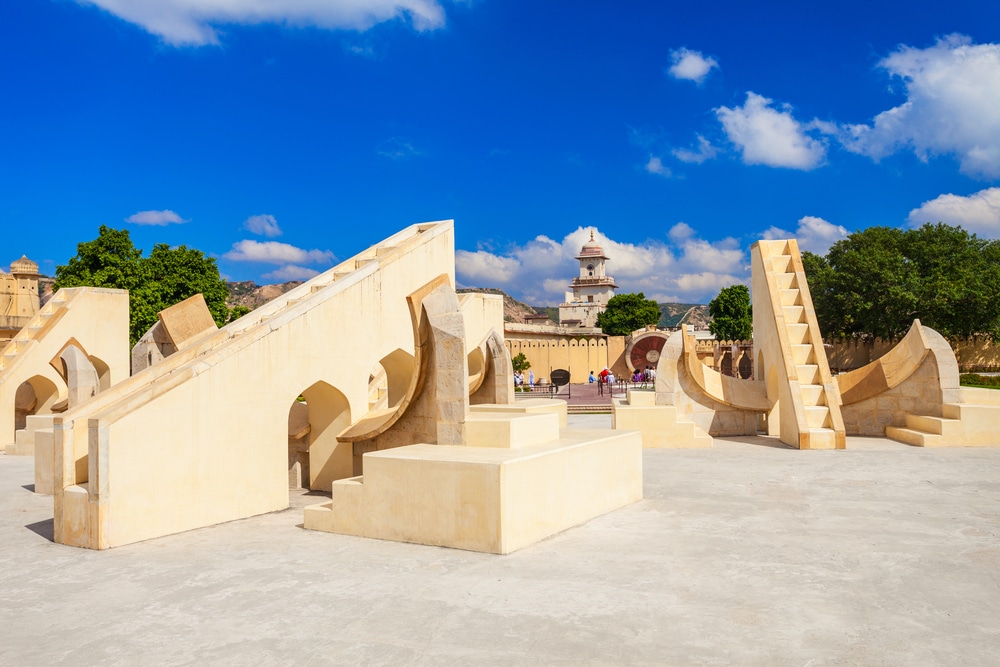
Jantar Mantar in Jaipur is one of the 5 astronomical observatories in India, built by Sawai Jai Singh II of Jaipur. The observatory complex is located in the centre of the walled city, close to the City Palace and Hawa Mahal.
57. The Great Living Chola Temples, Thanjavur
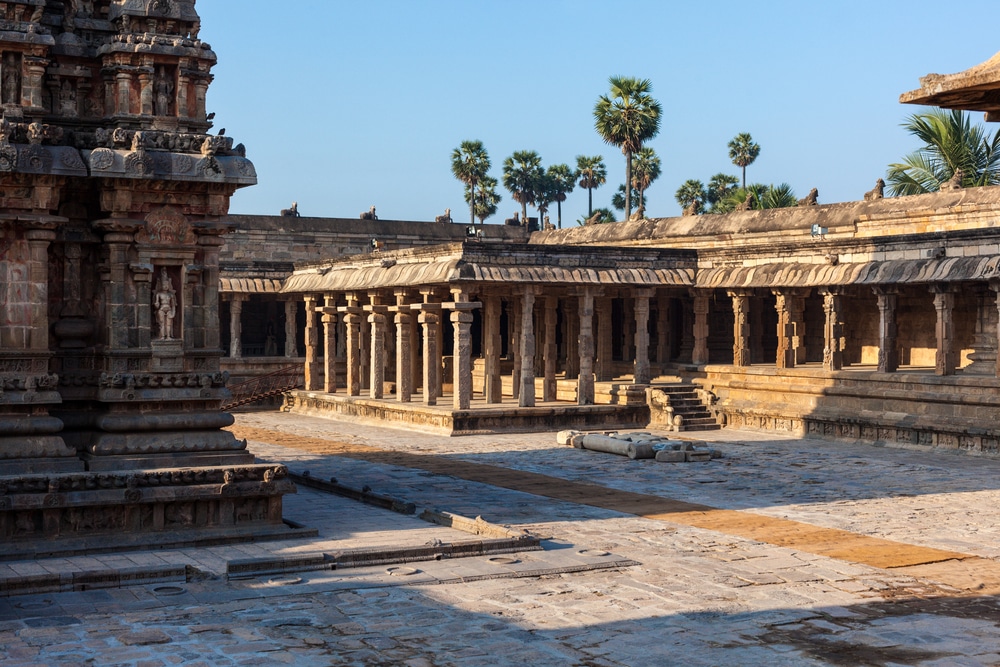
Built during the 11th and 12th centuries, the Living Temples at Thanjavur is a UNESCO World Heritage Site in Tamil Nadu. The construction of the temples is attributed to the Chola Dynasty who ruled southern India from 200-1246 AD.
58. Mahabalipuram, Kanchipuram
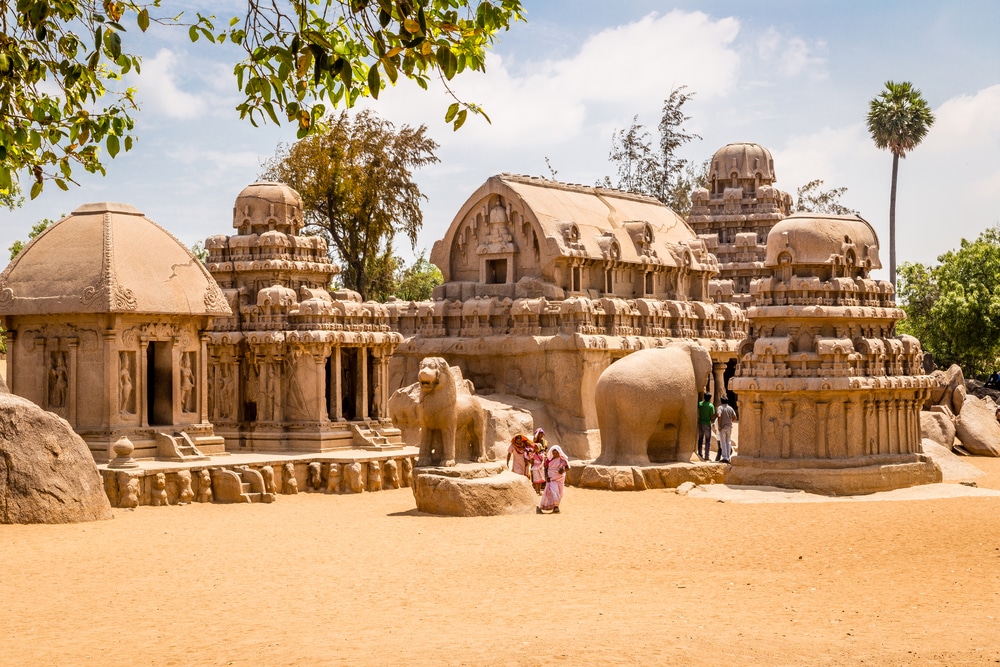
Mahabalipuram is an ancient port city that houses several monuments and buildings from the Pallava Era. The group of monuments is also classified under the UNESCO World Heritage Site and contains various temples, rock-cut sculptures, megaliths and cave temples that date between the 1st and 9th century AD.
59. Agra Fort, Uttar Pradesh
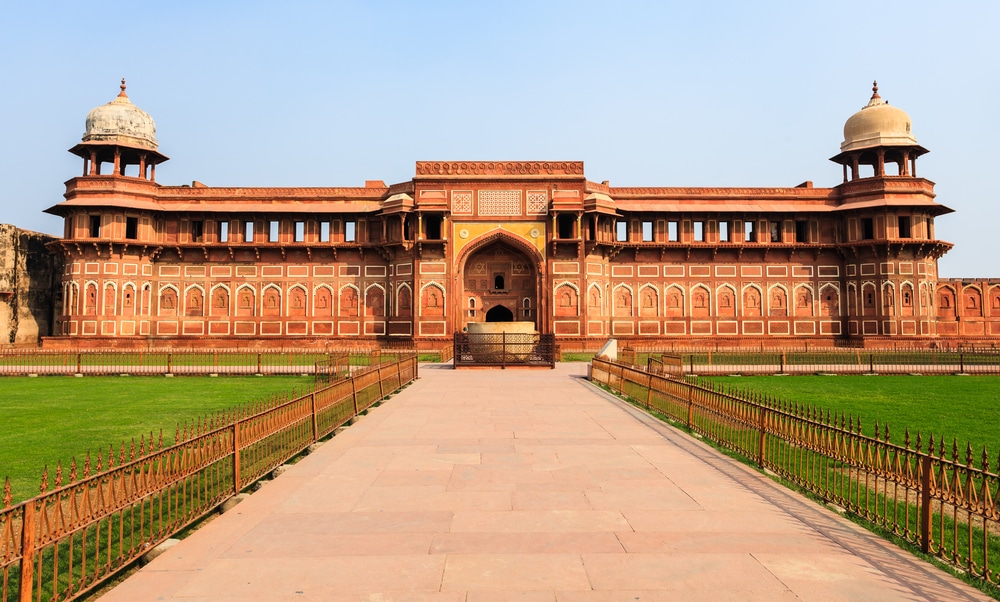
The red fort of Agra (not to be confused with the Red Fort of Delhi), was built by the Mughal emperor Shah Jahan after his ascension to the Mughal throne. Agra Fort was also the final resting place of Shah Jahan when he was imprisoned by his son Aurangzeb.
60. Cave Temples, Badami
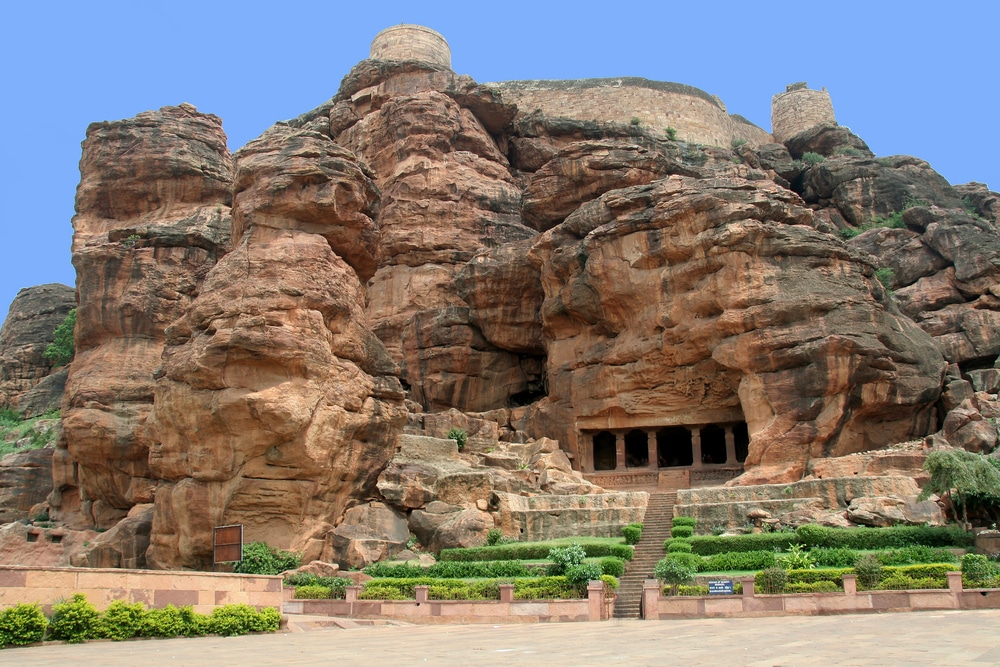
Located in Badami, Karnataka – The cave temples were built during the 6th and the 8th centuries by the Badami Chalukyas. The caves are also a part of UNESCO World Heritage Sites and are a major tourist attraction in Karnataka.
61. Nalanda University, Bihar Sharif
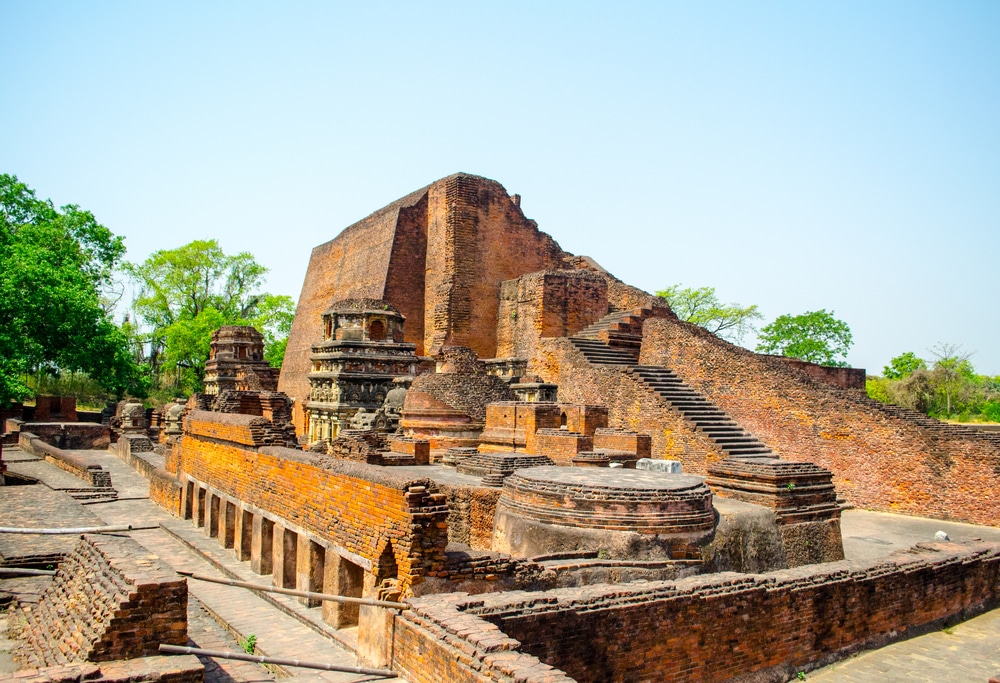
Nalanda is one of the Archeological gems of India. The site has been linked with Gautama Buddha, Mahavira and Ashoka and flourished as a centre of learning under the Gupta Empire.
62. Junagarh Fort, Bikaner
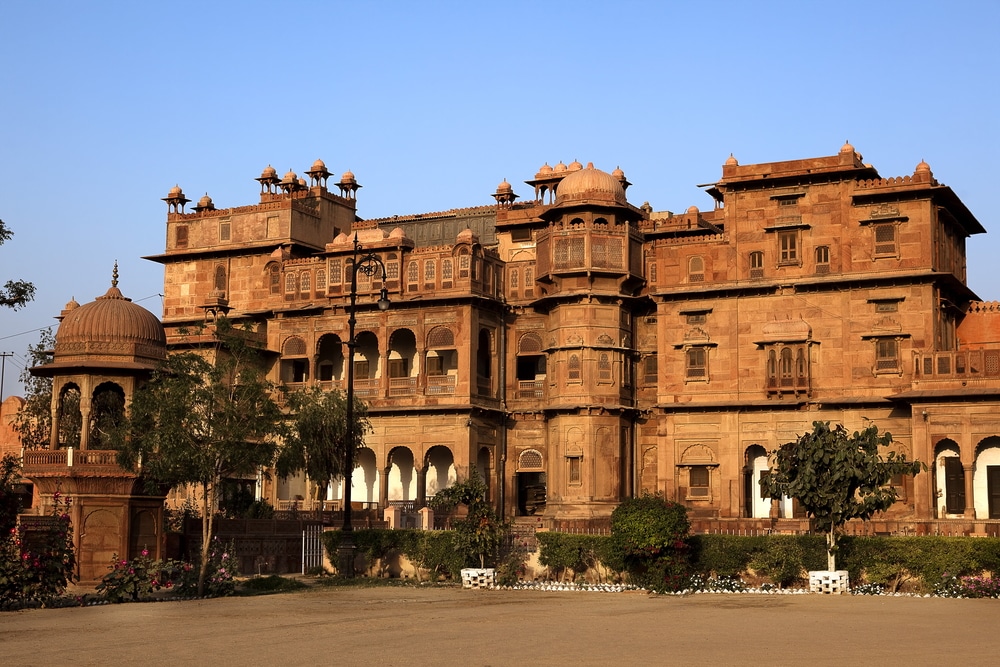
The Junagarh Fort is located in heart of the old city of Bikaner. The fort was first built during the reign of Rao Bika who founded the city of Bikaner in the 15th century.
63. Cooch Behar Palace, Cooch Behar
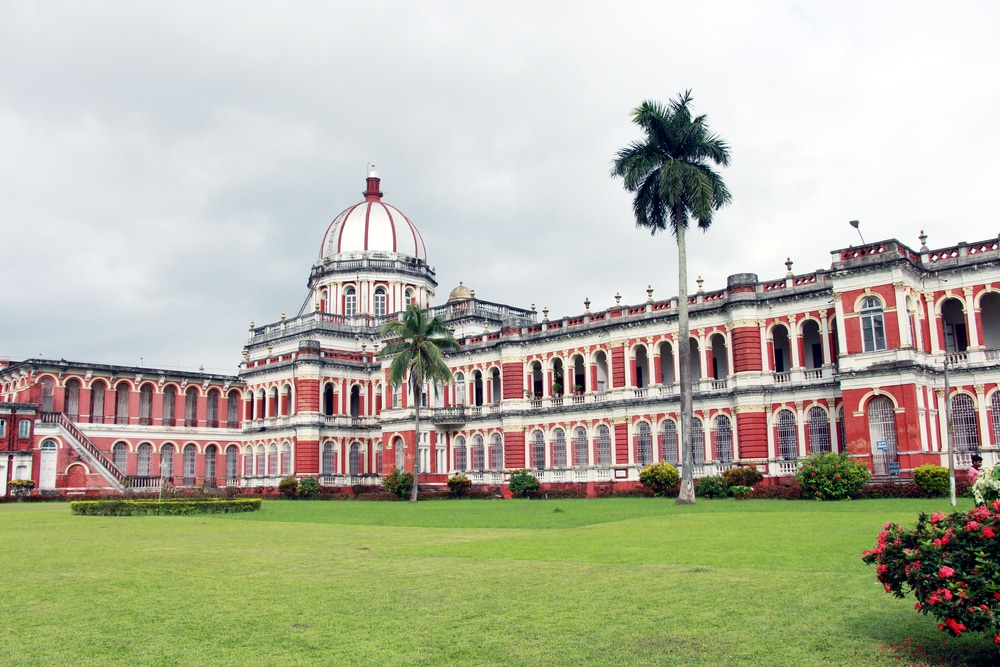
Modelled after the Buckingham Palace of London, the Cooch Behar Palace is located in Cooch Behar, West Bengal. The construction was commissioned by the Maharaja of Cooch Behar in 1887.
64. Nizamat Imambara, Murshidabad
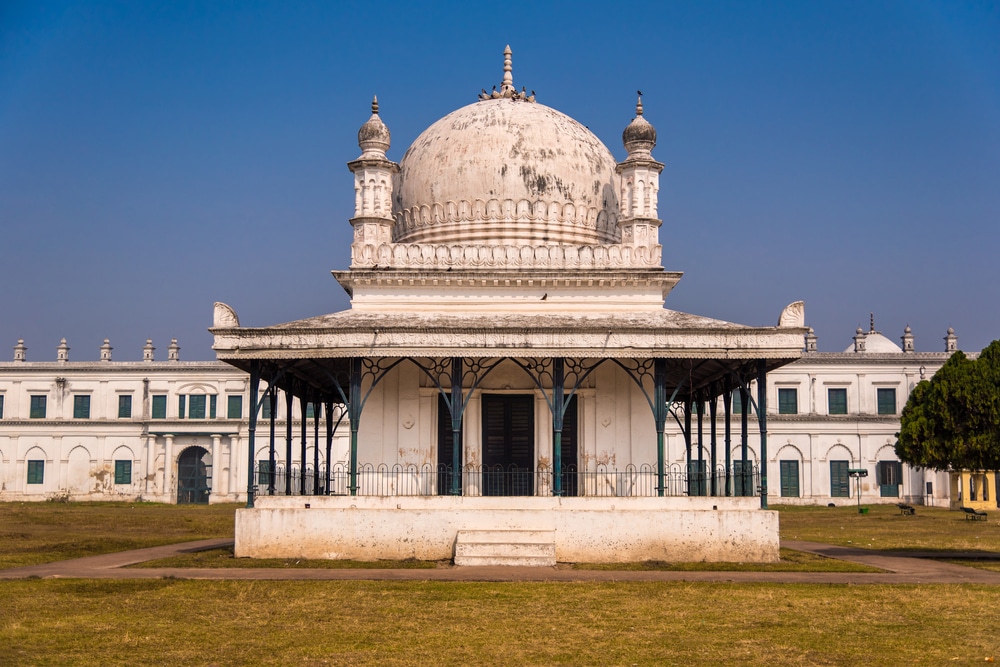
The largest Shia congregation hall in India, Nizamat Imambara was built by the Nawab of Bengal in 1847 in Murshidabad.
65. Belur Math, Belur
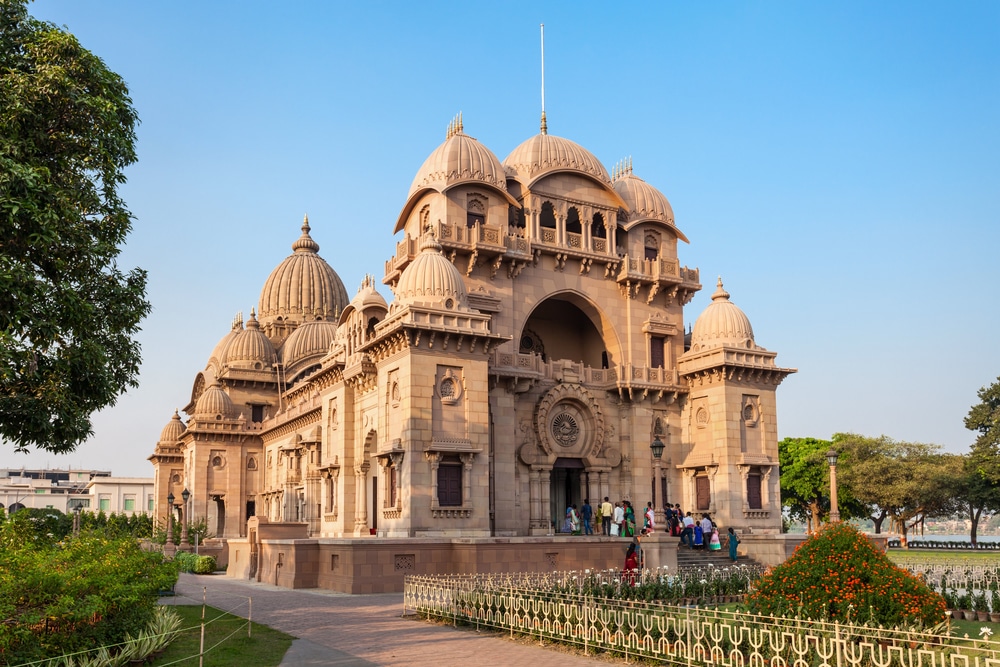
Belur Math is also the headquarters of the Ramakrishna Mission. It was founded by Swami Vivekananda and is one of the most important institutions for spiritual learning.
66. St. Paul’s Cathedral, Kolkata
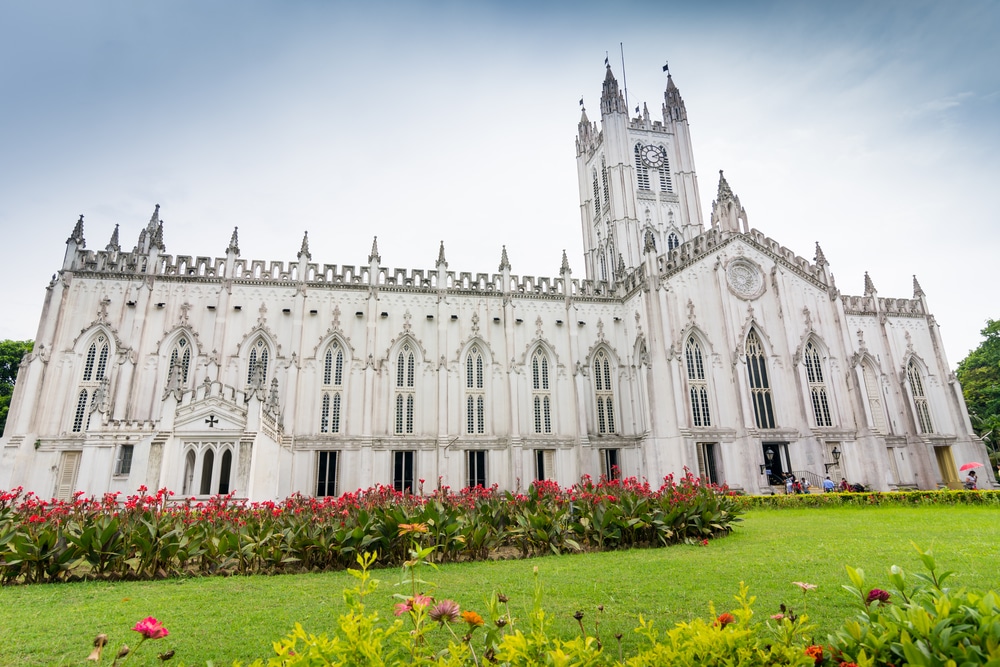
The Angelical St. Paul’s Cathedral was built in 1847 and displays a remarkable Gothic Revival architectural design. The building suffered massive damage during an earthquake in 1934 and was rebuilt with a new design.
67. Akbar’s Tomb, Agra
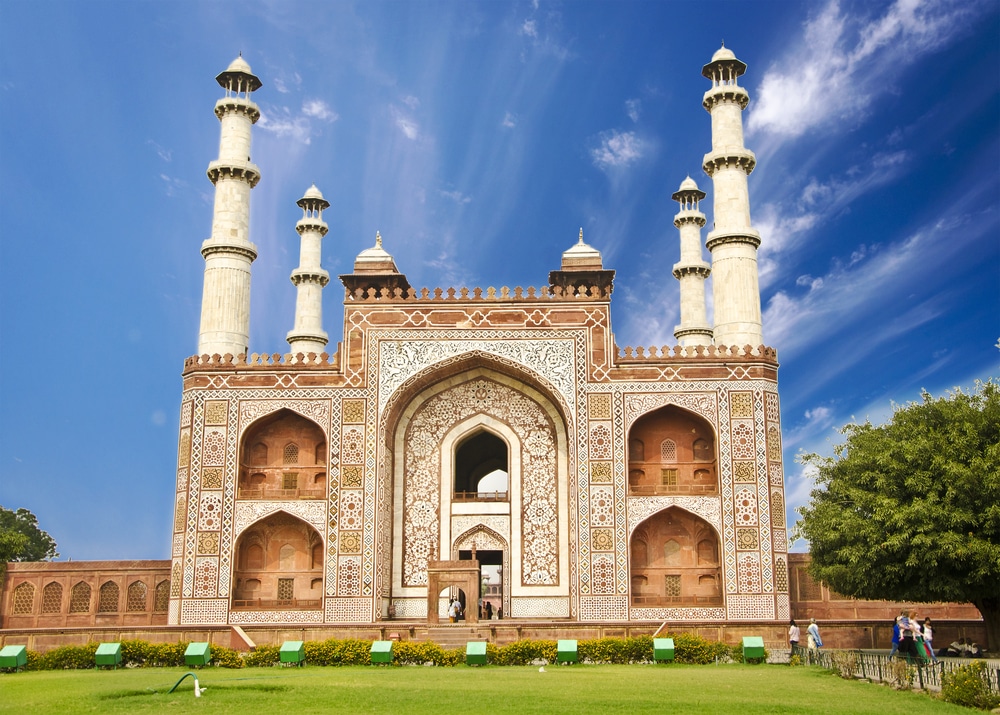
Known to be the final resting place of the Great Mughal emperor Akbar was constructed in 1605 and was completed in 1613. The construction was started by Akbar himself and was finished by his son Jahangir who succeeded him as the Mughal Emperor.
68. Chota Imambara, Lucknow
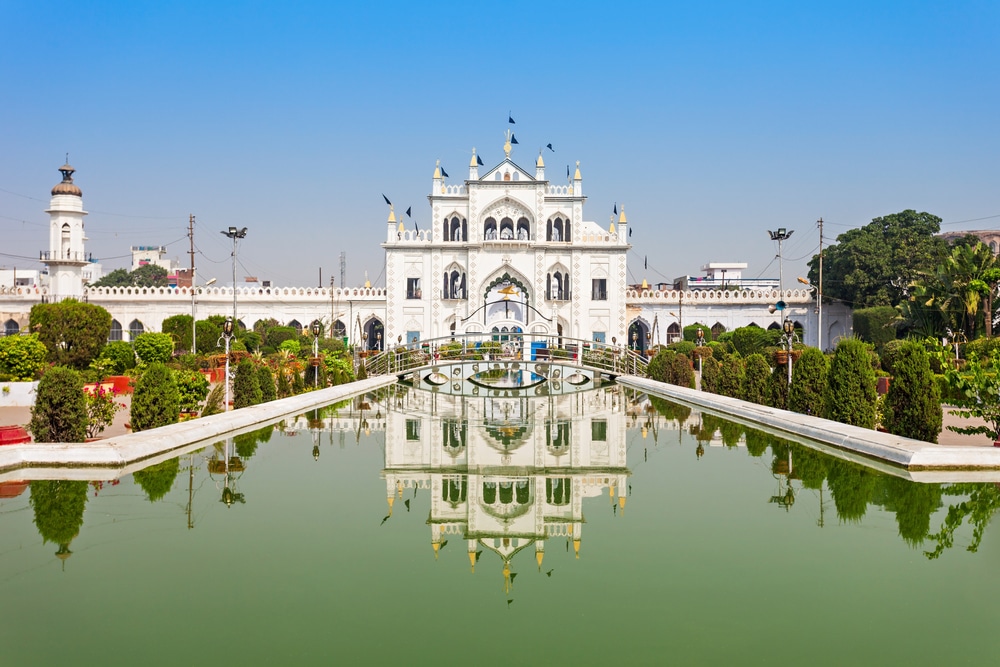
Hussainabad Imambara, the Chota Imambara was built by the Nawab of Awadh and is located in Lucknow. Located in close proximity to the larger Bara Imambara, the Chota Imambara is also referred to as the Palace of Lights due to its gilded dome and enchanting decorations during Muharram.
69. Sundarbans National Park, South 24 Parganas
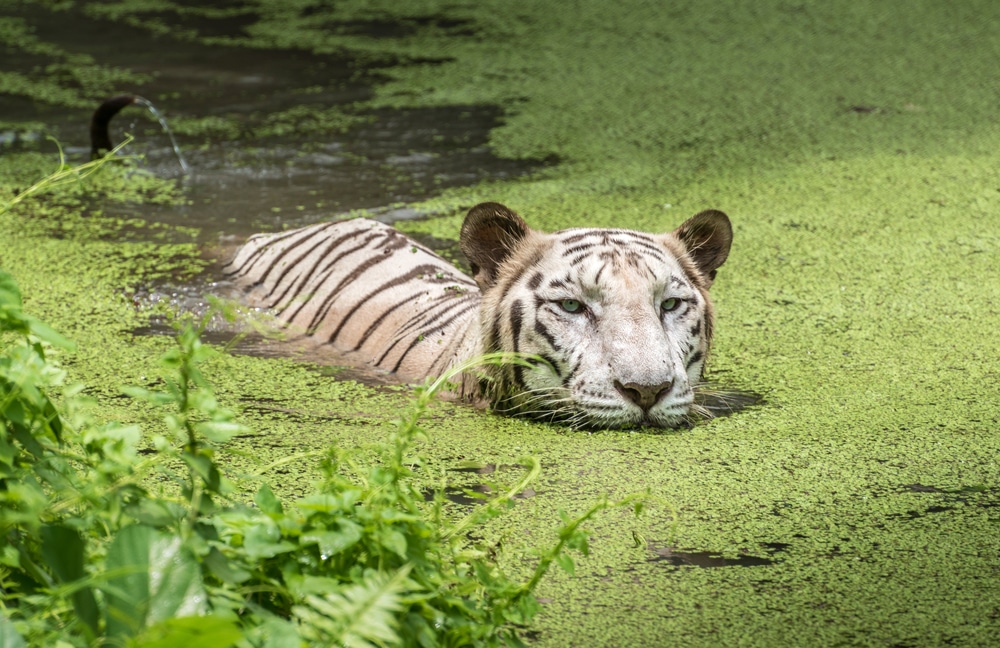
The Sundarbans National Park is one of the major habitats of the Bengal Tiger and a large number of wildlife and plant species. The terrain at Sundarbans mostly comprises of deltas and river channels covered with mangrove forests. The forests of Sundarbans are also known for a teeming population of saltwater crocodiles.
70. Makkah Masjid, Hyderabad
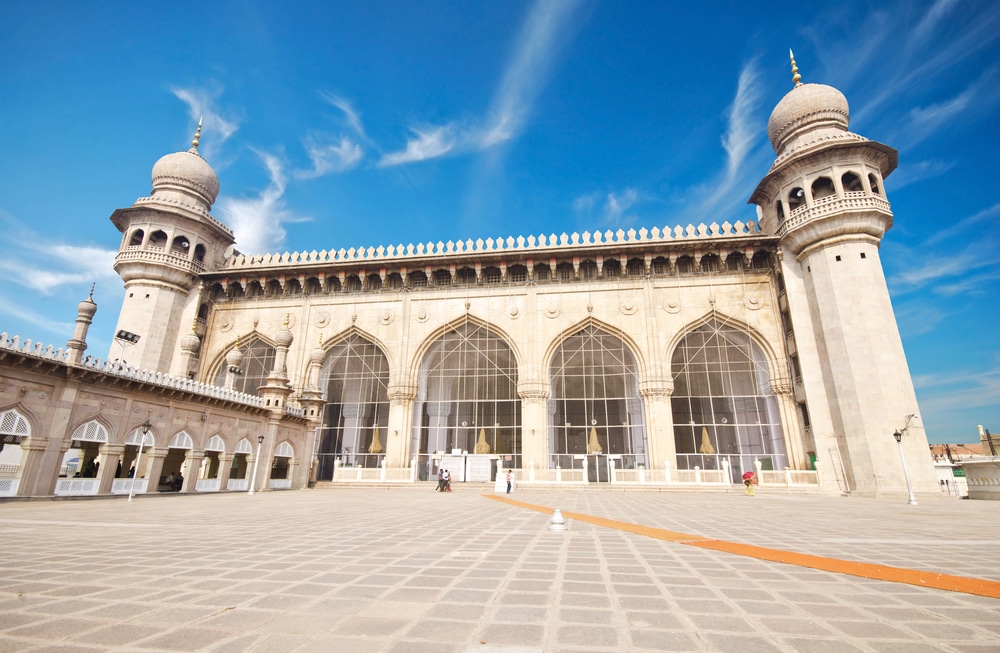
One of the oldest mosques in Hyderabad and India, the Makkah Masjid is also one of the largest Islamic centres of worship in India. The bricks of the mosque are said to have been built with the soil brought by the rulers of the Qutub Shahi Dynasty.
71. Ramanathaswamy Temple, Rameswaram
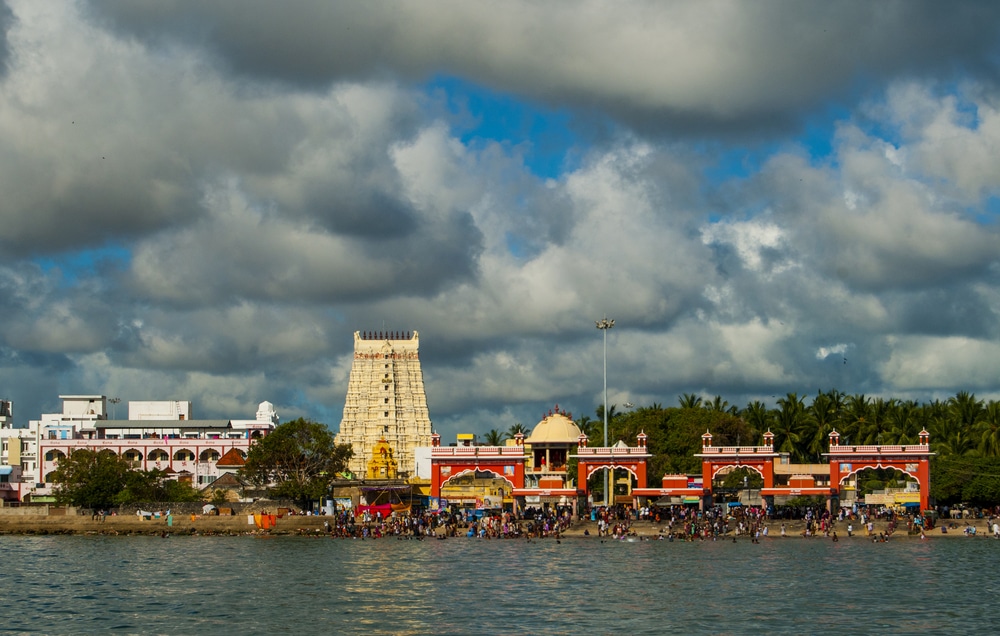
The Ramanathaswamy Temple also houses one of the 12 Jyotirlingas in India. The temple is believed to mark the site where Lord Rama prayed to Lord Shiva following his victory against Ravan, the demon king of Lanka. The temple is also famous in Rameswaram for its long corridors with more than 1200 pillars.
72. Basilica of Our Lady of Good Health, Velankanni
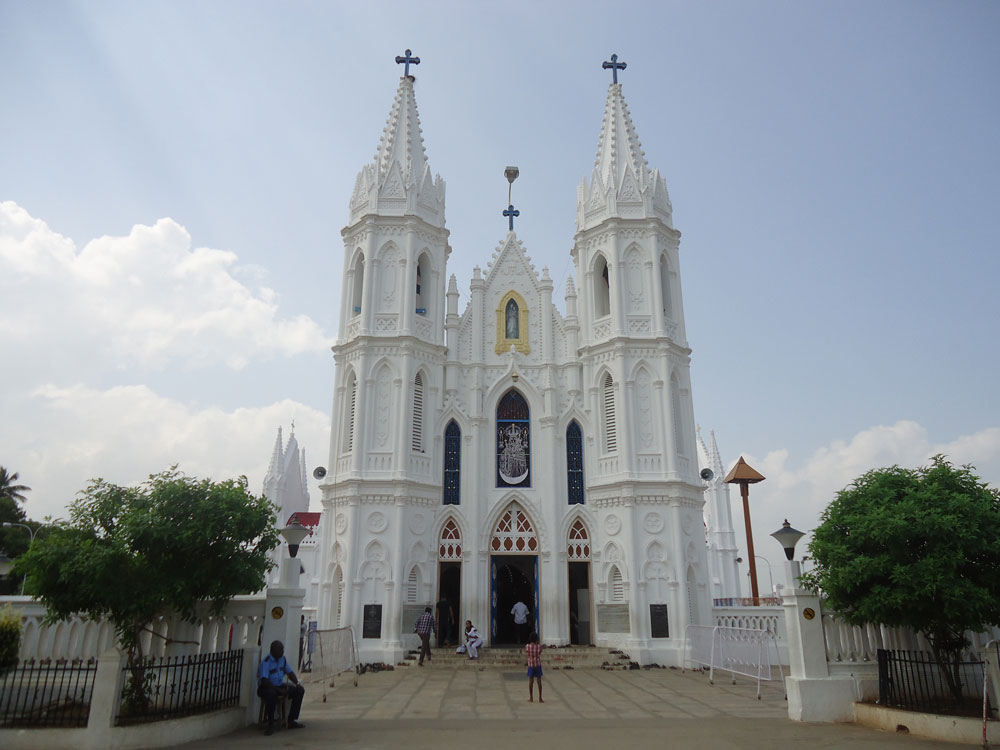
The Roman Catholic Basilica is located in Velankanni, Tamil Nadu and is also nicknamed the ‘Lourdes of the East’. Several reports of supposed miracles have been attributed to this place, especially during the 16th century making it a major pilgrimage centre for the Christians in India.
73. Marina Beach, Chennai
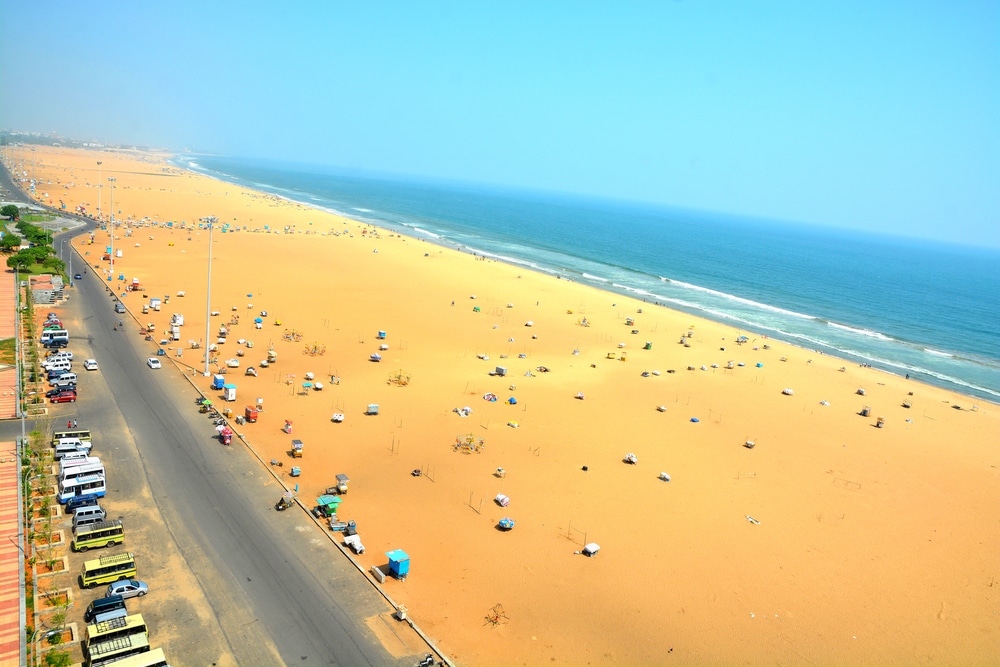
One of the longest beaches in the world, Marina Beach is a major tourist attraction in Chennai and sees thousands of visitors on a daily basis. The beach was developed only after the construction of the Madras Harbor in 1881 when the British Governor of Madras commissioned the construction of a promenade near the shoreline.
74. Gagron Fort, Jhalawar
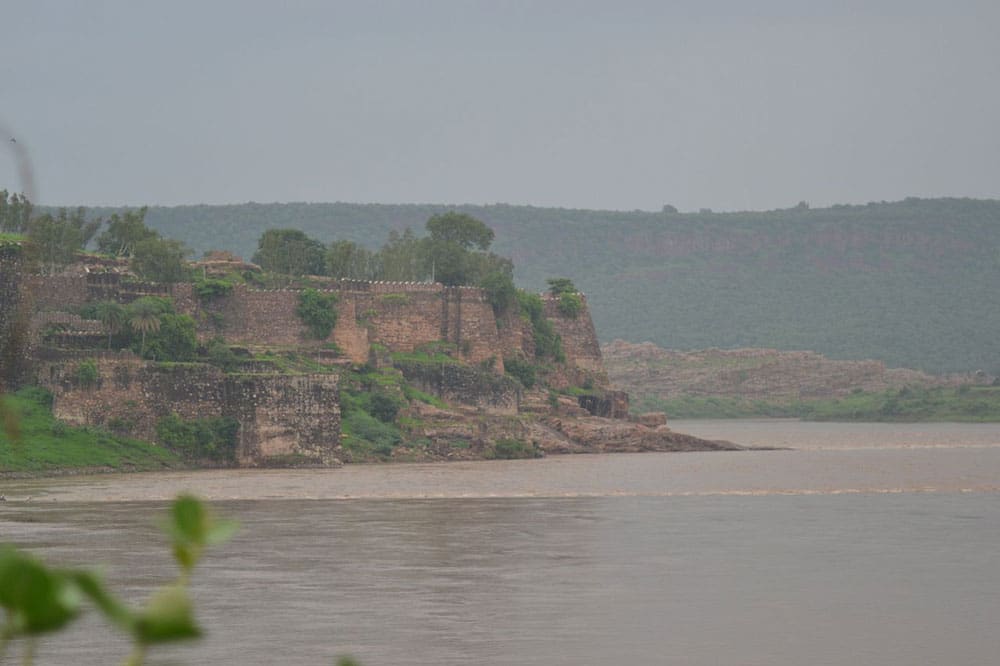
Bounded on three sides by Rivers, the Gagron Fort is also a UNESCO World Heritage site and is located in the Jhalawar district, Rajasthan. The fort was constructed by the chieftains of the Doda Rajput clan in the 8th century but was conquered numerous times by various monarchs until it was granted as a gift to the Maharaja of Kota by Aurangzeb.
75. Sariska Tiger Reserve, Alwar
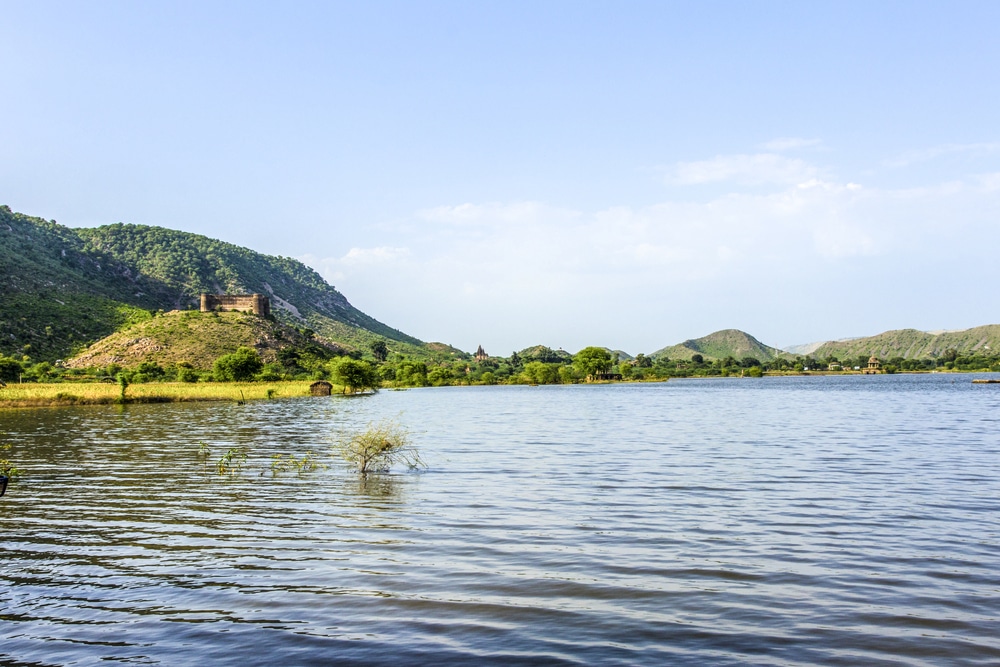
Located near the foothills of the Aravalli Range, The Sariska Tiger Reserve is famous for its population of the Bengal Tiger and other wildlife species. It is also home to the Sariska Palace, which was used as a hunting lodge by the Maharaja of Alwar. The forested area also contains other attractions such as Pandupol temple and the Kankwadi Fort.
76. Gateway of India, Mumbai
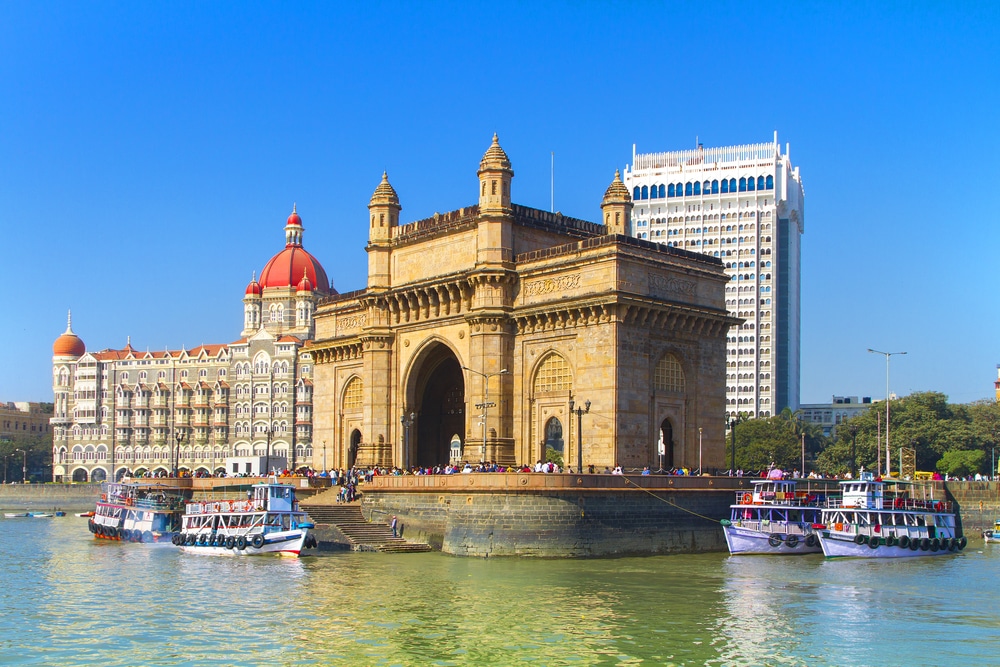
The Monument was built during the British Raj in India to mark the visit of King George V and Queen Mary in 1911. The 26 meters tall gateway is located at the tip of the Apollo Jetty and is one of the prominent buildings to be seen while entering India by Sea.
77. Kumbhalgarh Fort, Rajsamand
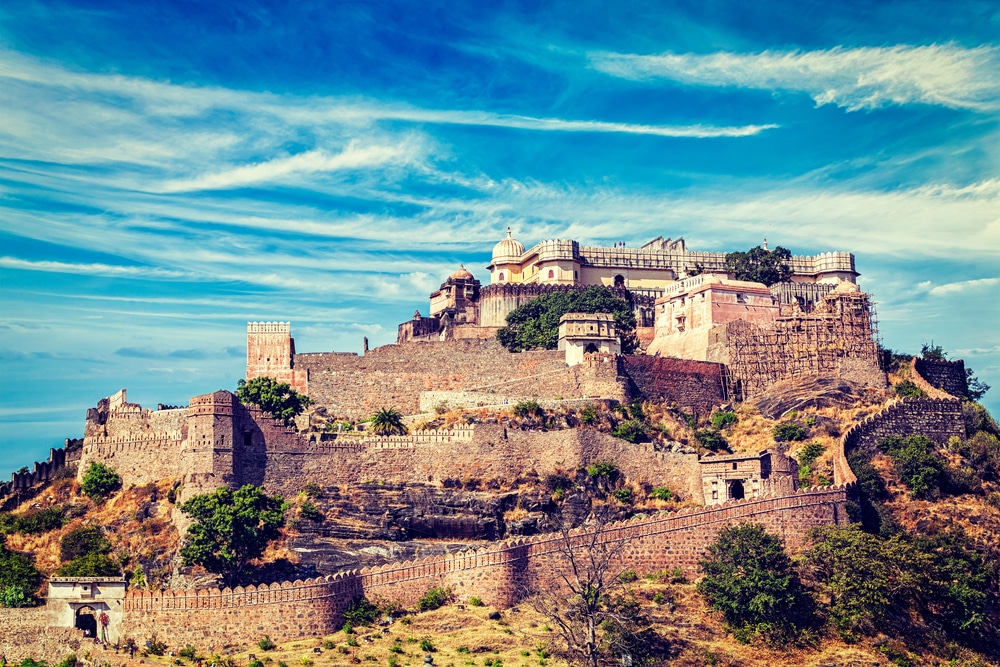
Bound by the second largest wall after the Great Wall in China, the Kumbhalgarh Fort is a UNESCO World Heritage Site built during the 15th century. The fortress contains more than 300 temples, surrounded by 36-kilometre long walls that are around 15 feet in width and is often nicknamed ‘The Great Wall of India’.
78. Ranthambore National Park, Sawai Madhopur
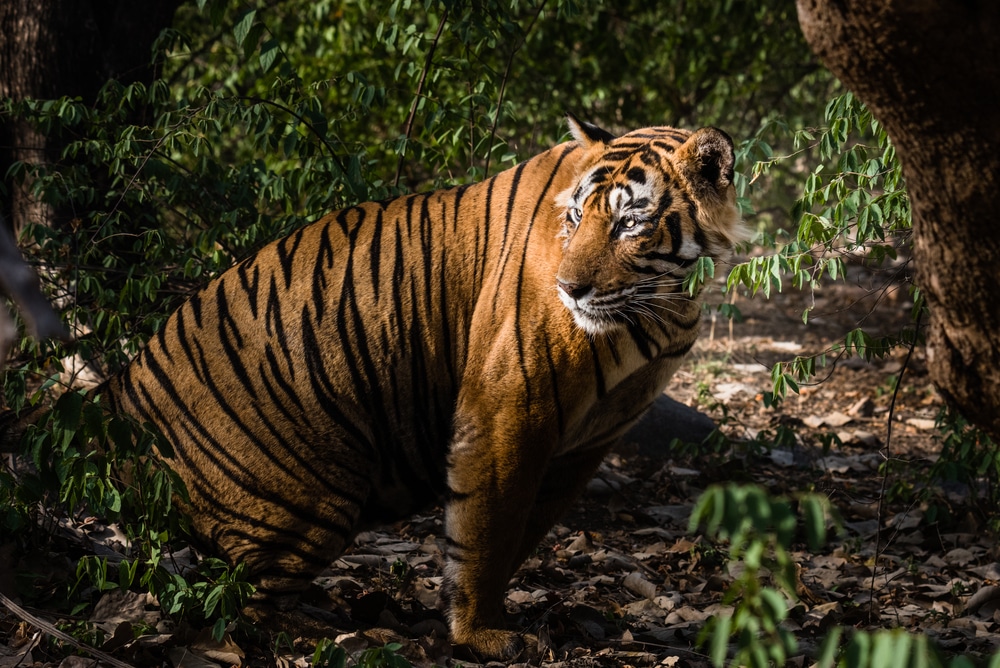
The Ranthambore National Park is situated in the Sawai Madhopur district of Rajasthan. It is surrounded by the Chambal and the Banas rivers and contains the historic fort of Ranthambore built during the 10th century.
79. Mehrangarh Fort, Jodhpur
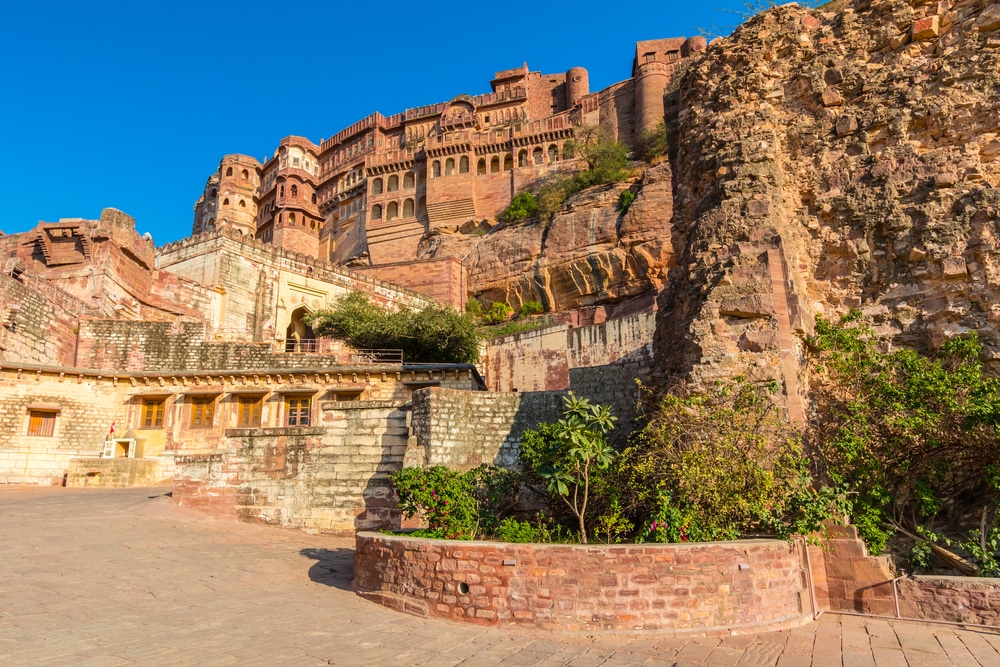
Built in 1459 as the new capital of Marwar, The Mehrangarh Fort is located atop a hill, right above the historic city of Jodhpur. The fortress is one of the few, which never fell to the invading armies and is exemplary of the imperial might of the Rathore Rajputs.
80. Munnar Hills, Idukki
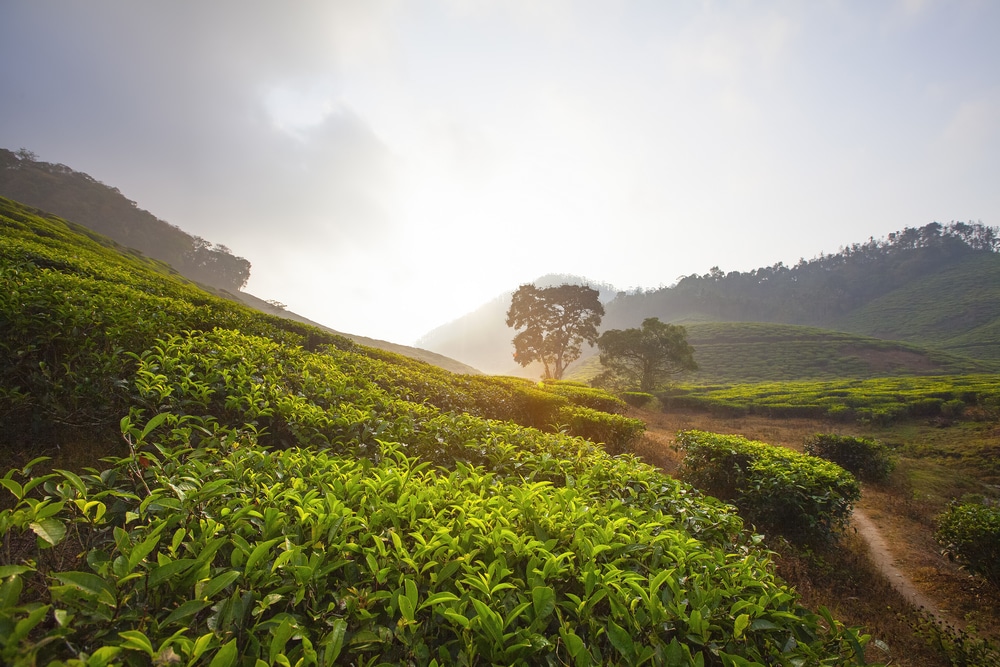
The green hills of Munnar are located in the Idukki district of Kerala amidst the Western Ghats Mountains. Placed at an elevation of approximately 1,600 meters above sea level, Munnar is a major hill station in Kerala.
81. Loktak Lake, Moirang
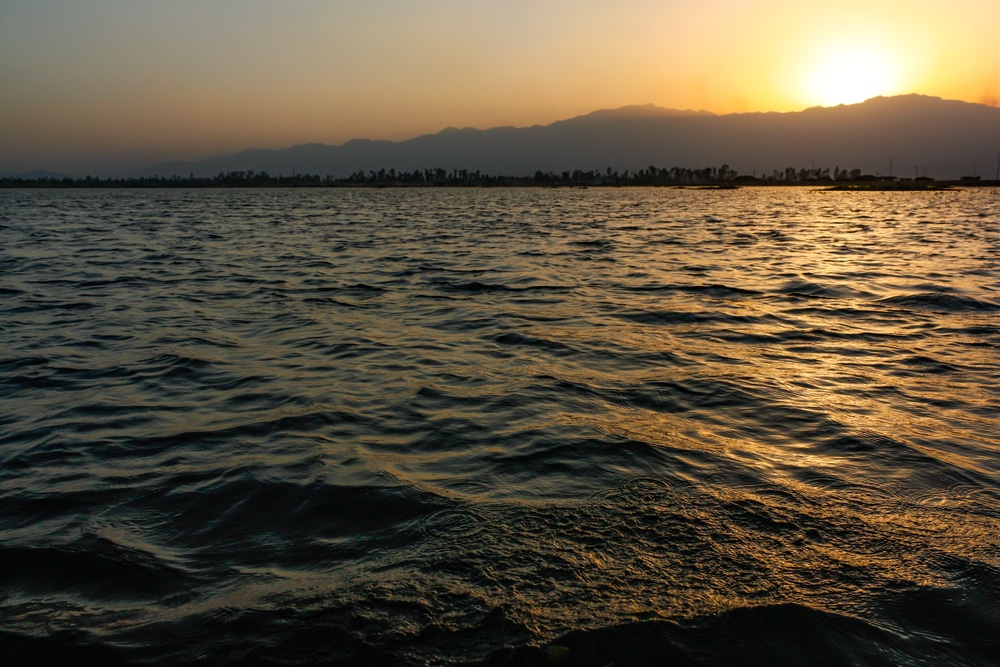
Loktak Lake is situated near the town of Moirang in Manipur and is the largest freshwater lake in North-Eastern India. The lake is known for its several floating islands including the largest, which is home to the Keibul Lamjao National Park.
82. Kodaikanal Lake, Kodaikanal
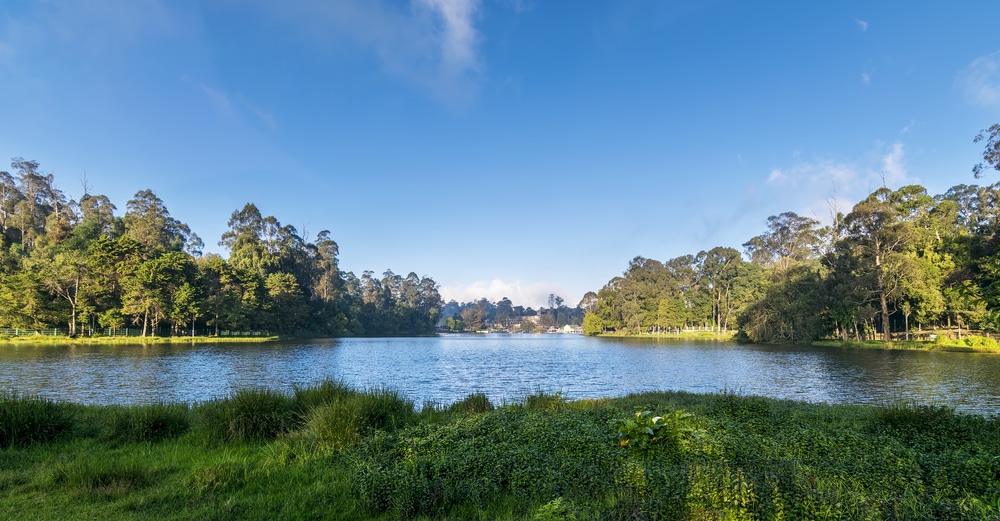
The lake is located in the heart of the scenic hill town of Kodaikanal and serves as a major tourist attraction in Kodaikanal. The construction of the lake is attributed to the former collector of Madurai Sir Vere Henry Levinge, who commissioned the construction in 1863.
83. Nainital Lake, Nainital
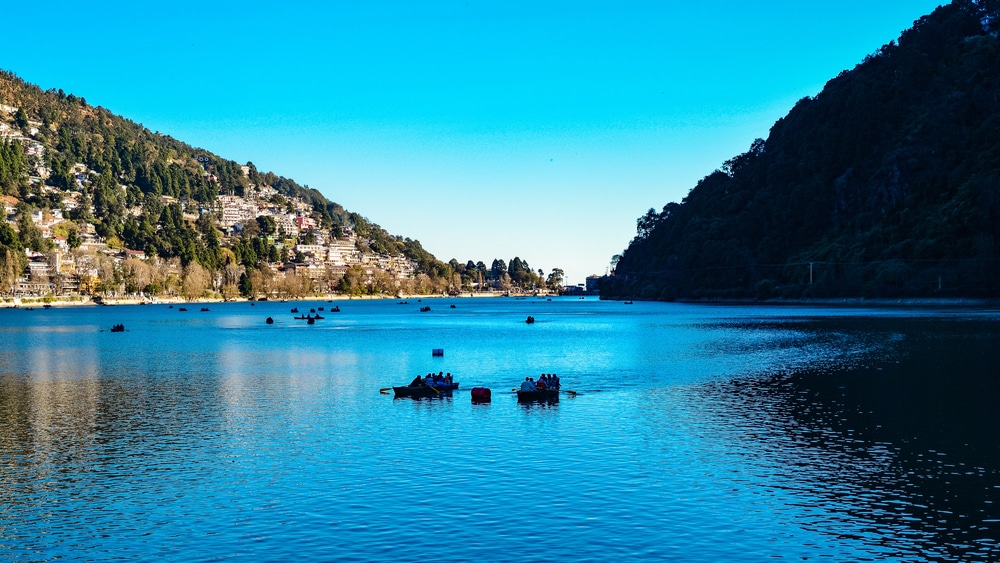
Nainital Lake is located in the Nainital District of Uttarakhand and serves as the major tourist attraction in the hill town. One can engage in a number of activities such as boating, Yachting and various exhibitions and festivals that are organized near the banks of the Nainital Lake.
84. Jaigarh Fort, Jaipur
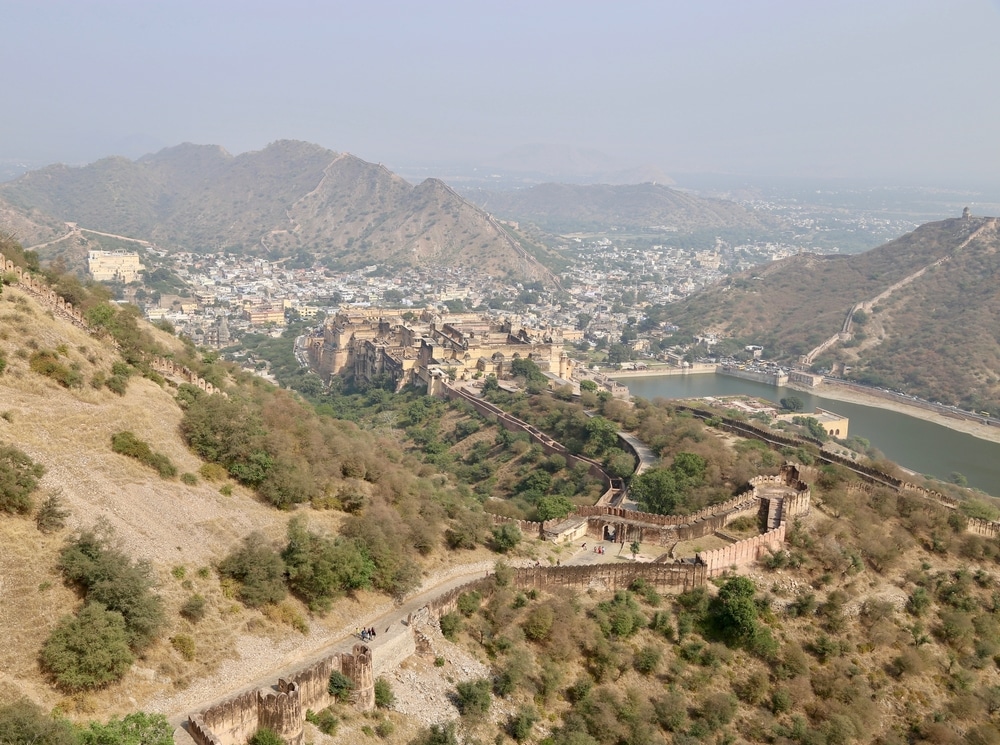
Housing the world’s largest cannon on wheels, the Jaigarh Fort was built in 1726, by Sawai Jai Singh II of Jaipur. The construction of the fort was done in order to protect the Amber Fort from the invading army and is located 400 meters above the Amber Palace.
85. Jim Corbett National Park, Nainital
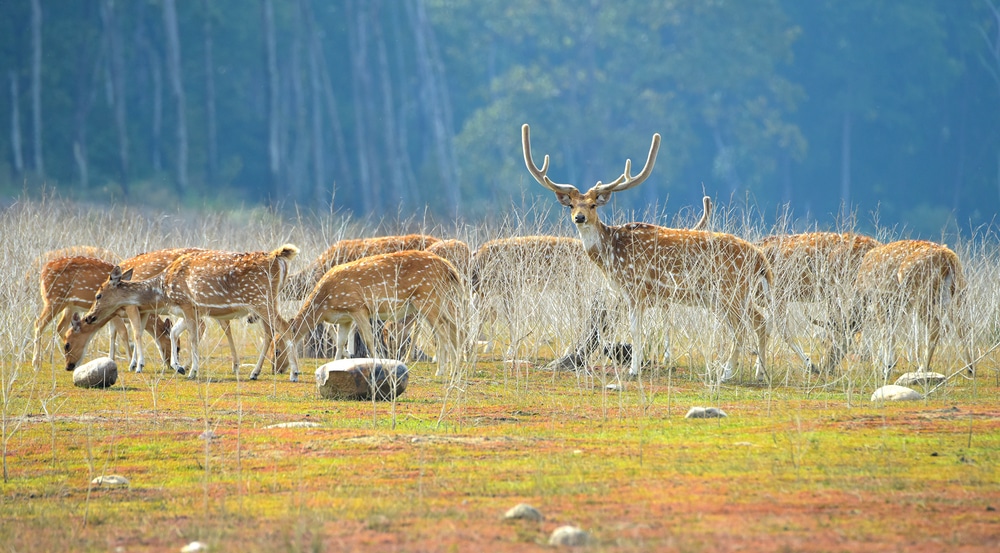
Jim Corbett National Park is the oldest protected region in India and is a major stronghold of the Bengal Tiger. Located in Nainital, Uttarakhand the Jim Corbett National Park was established in 1936 and is openly funded by the World Wildlife Fund and is famous for its vast species of flora and fauna.
86. Dharamshala, Kangra
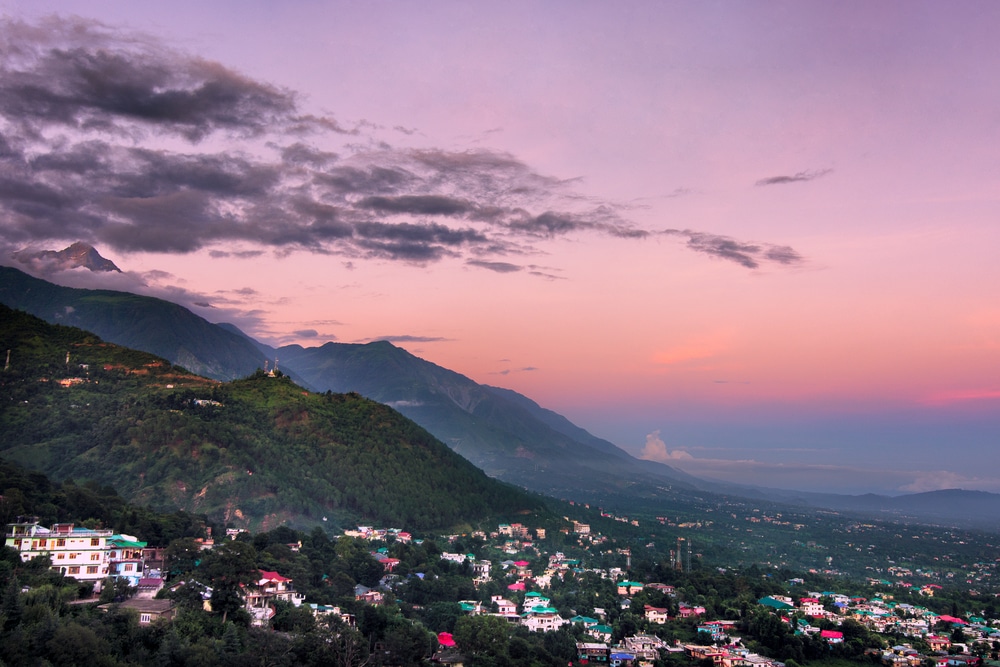
Located in Kangra district, Himachal Pradesh, Dharamshala is the seat of the Dalai Lama and also the headquarters of the Tibetan Government in exile. A majority of the population here belongs to the Tibetan exiles and hence is also known as mini Tibet. The town contains several monasteries, scenic views of the Himalayas and various other tourist attractions.
87. Laxmi Vilas Palace, Vadodara
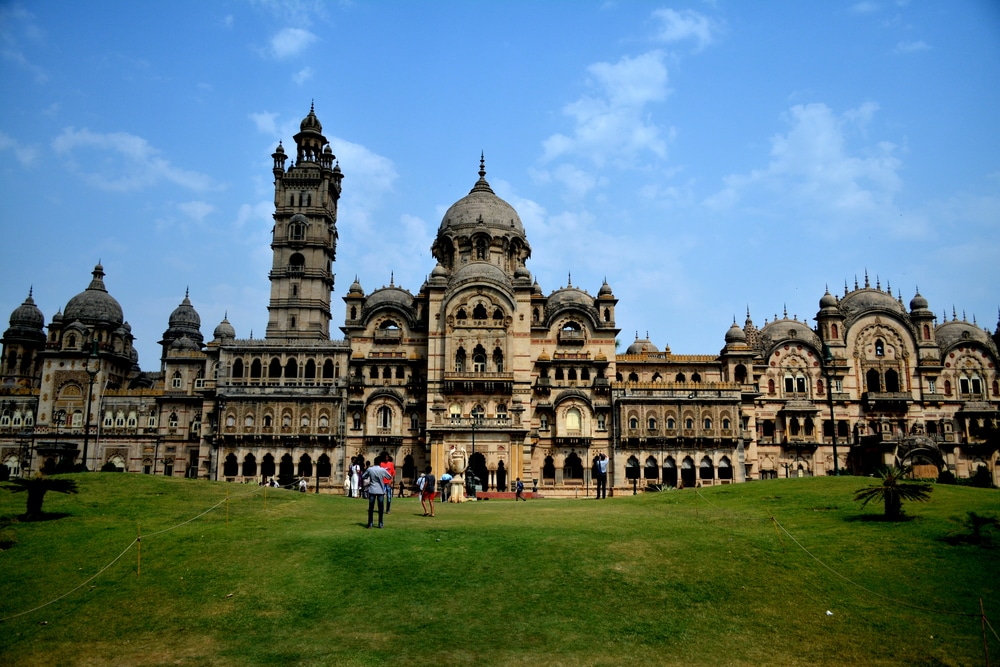
The Laxmi Vilas Palace of Vadodara is one of the largest private residences in the world. Its construction was commissioned by Maharaja Sayajirao Gaekwad III who was a Maratha chieftain and the King of Baroda state.
88. Gir National Park, Junagarh
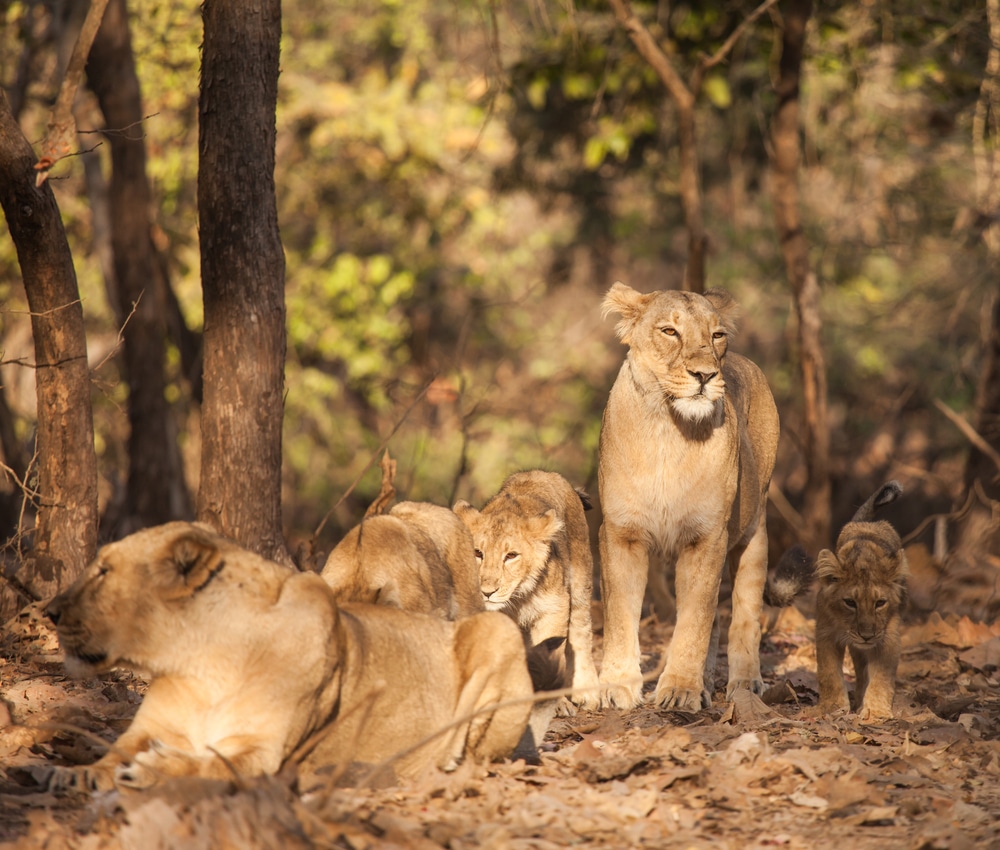
The Gir National Park is famous for its thriving population of Asiatic Lions and is a major protected wildlife reserve in the State of Gujarat. The forests were once the hunting reserves of the royal family of Junagarh who later played a pivotal role in the conservation of lions in the region. Apart from the Lions, the forests of Gir are also home to a varied species of animals, birds and reptiles.
89. Marine National Park, Gulf of Kutch
The first National Marine Park in India, the Marine National Park is located in the Gulf of Kutch near Jamnagar in Gujarat. Spread across more than 150 sq kilometres, the Marine National Park is known for its abundant coral reefs that surround the 42 islands that form the protected area.
90. Tughlaqabad Fort, Delhi
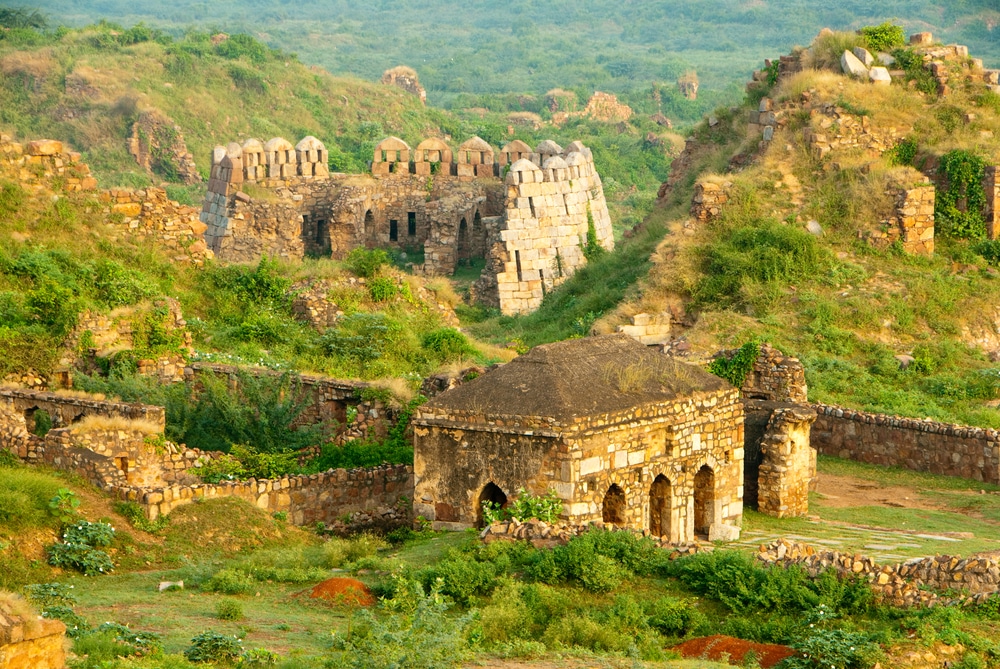
Located in the national capital city of Delhi, the Tughlaqabad Fort was built in 1321, by Ghiyas-ud-din Tughlaq who founded the Tughlaq dynasty.
91. Pattadakal, Bagalkot
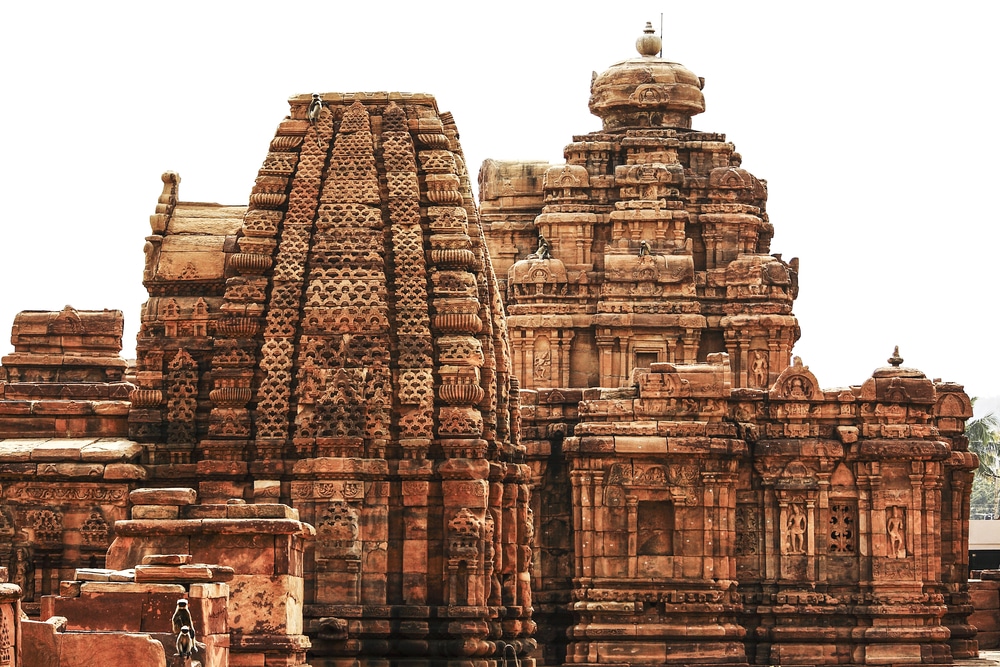
Known as the capital of the Chalukya Dynasty, the group of monuments at Pattadakal is also a UNESCO World Heritage Site. Despite of being built by the south Indian kingdoms, the architectural styles displayed here cross various styles such as Nagara, Dravidian, Rekha and Prasada in their designs.
92. Bishnupur Temples, Bankura
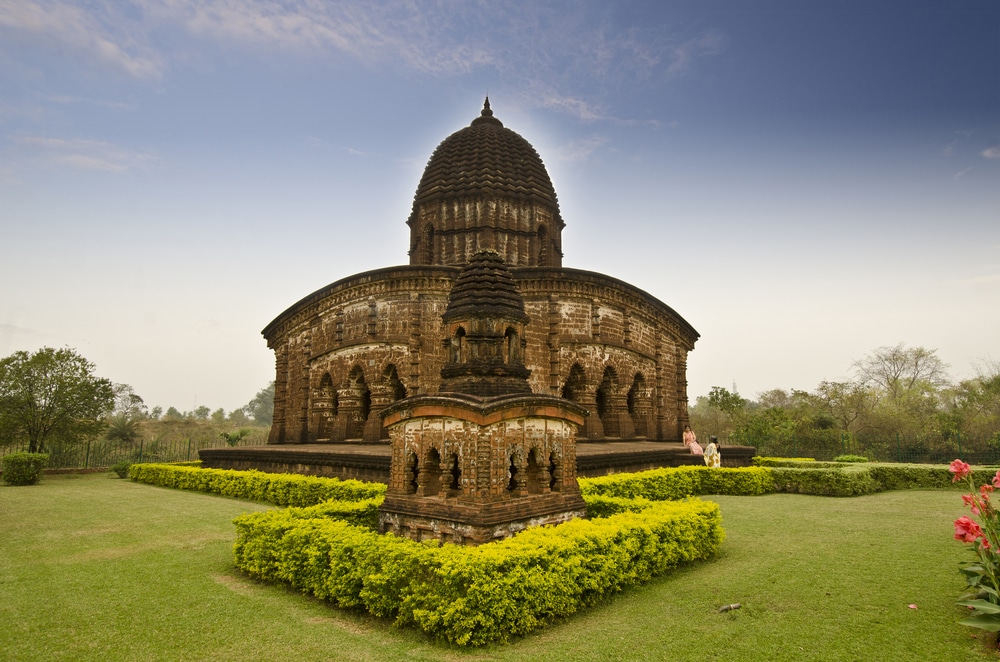
The town of Bishnupur flourished during the reign of the Malla Kings in the 18th century. The most famous example of their patronage is the several terracotta temples that are located here.
93. Monuments at Mandu, Dhar
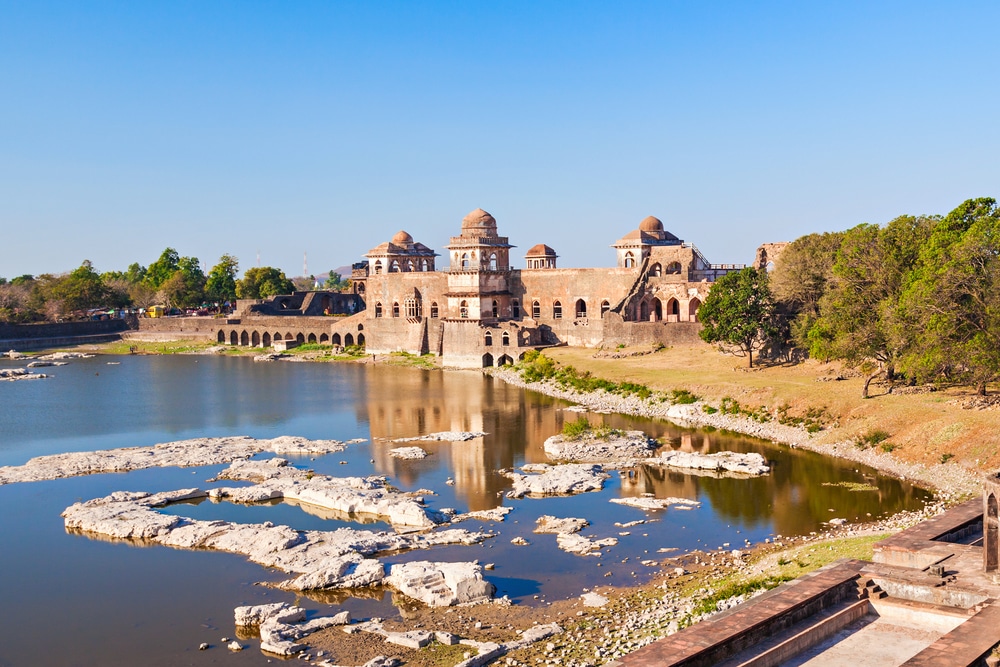
Mandu or Mandavgarh is located in the Dhar district of Madhya Pradesh. It was said to have been established in the 6th century BC and later came under the reign of the Parmara Kings. The city was fortified by Raja Bhoj in the 10th century but was later captured by the Delhi Sultanate and the Mughals.
94. Shalimar Bagh, Jammu and Kashmir
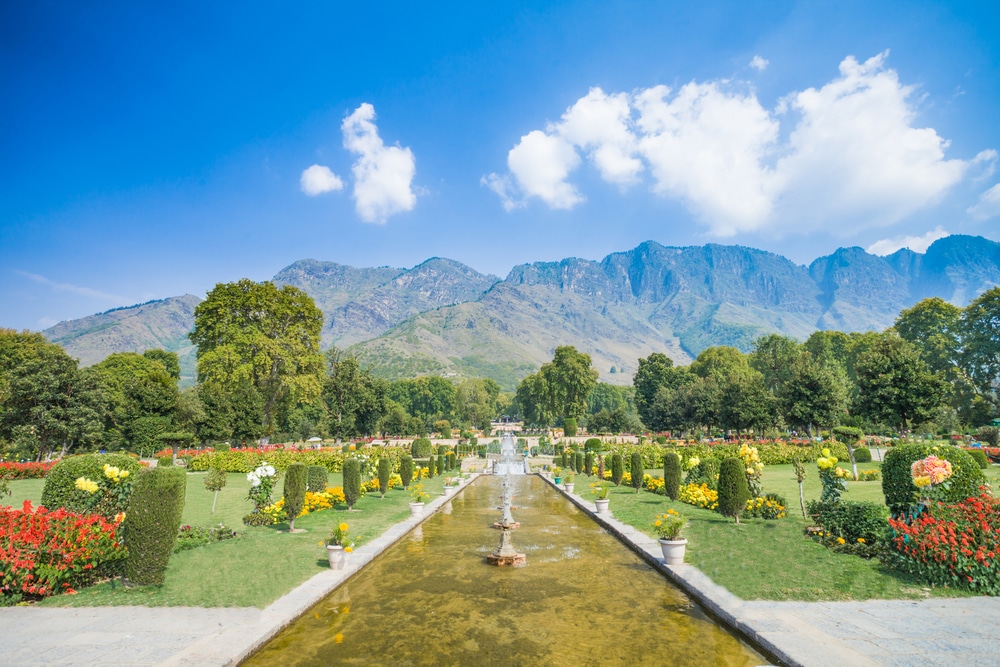
The Shalimar Bagh is the largest of all terraced gardens built by the Mughals in India and is located in Srinagar, Jammu and Kashmir. The garden is located near the picturesque Dal Lake and was built by the Mughal Emperor Jahangir during the 17th century.
95. Lotus Temple, Delhi
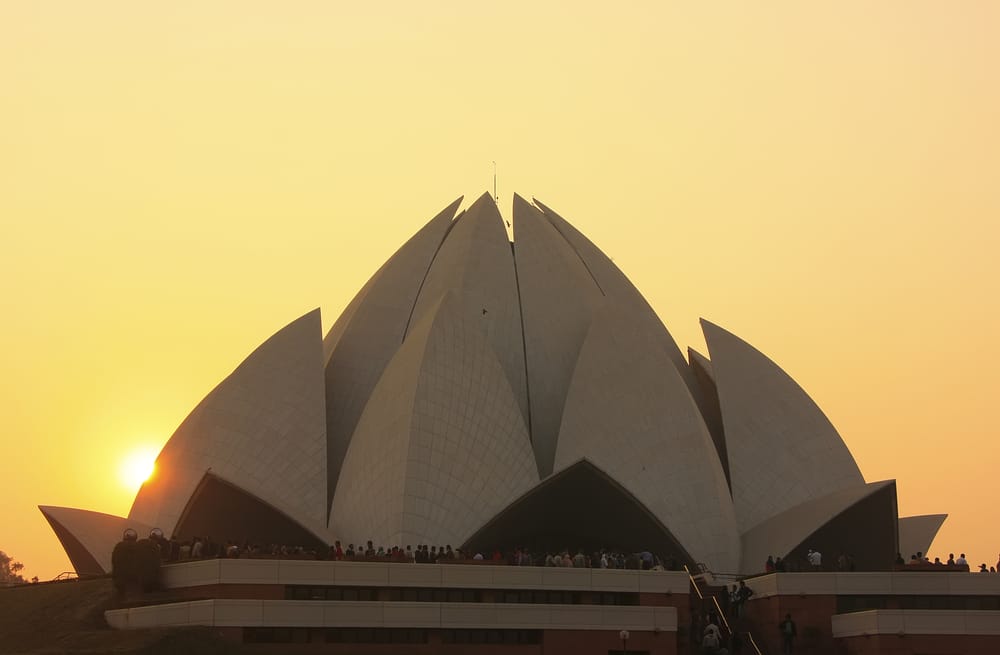
The Lotus Temple is an exquisite work of architecture built in 1986. The design of the building resembles a budding lotus flower and is thus called the Lotus Temple.
96. Kakatiya Temple, Warangal
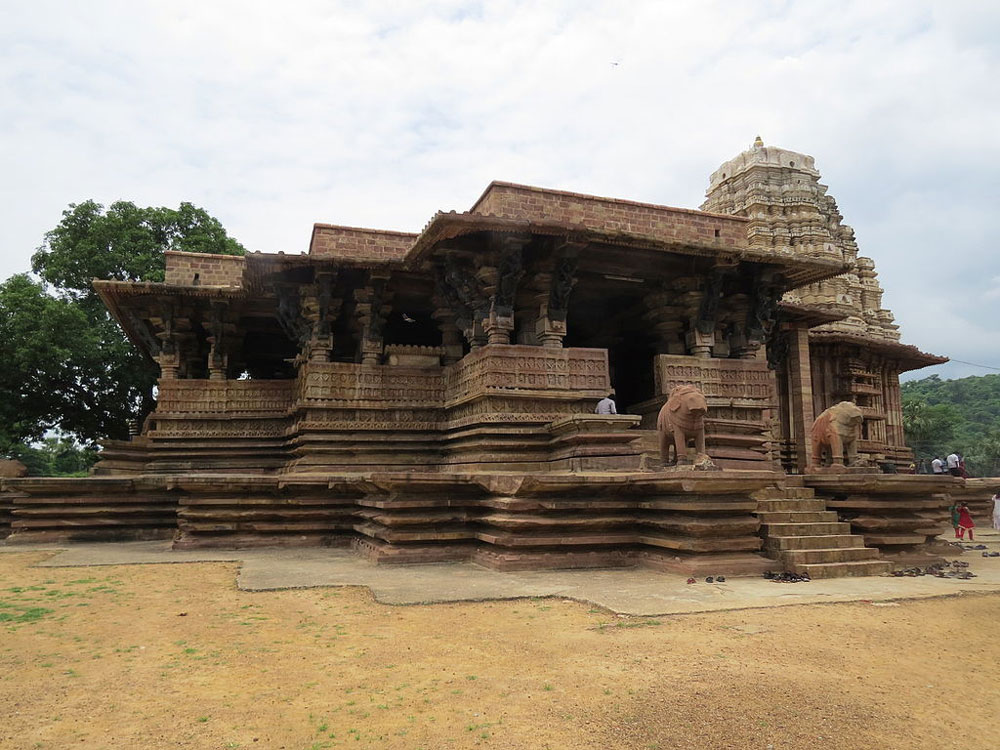
The monument is also referred to as the ‘Thousand Pillar Temple’ built by the Kakatiya Dynasty in the 12th century AD. The temple complex in Warangal houses several lingams, and 3 shrines dedicated to the Hindu deities Surya, Shiva and Vishnu and is surrounded by a picturesque garden. Although it was desecrated by the Tughlaqs, it was restored by the efforts of the state government.
97. Silent Valley National Park, Palakkad
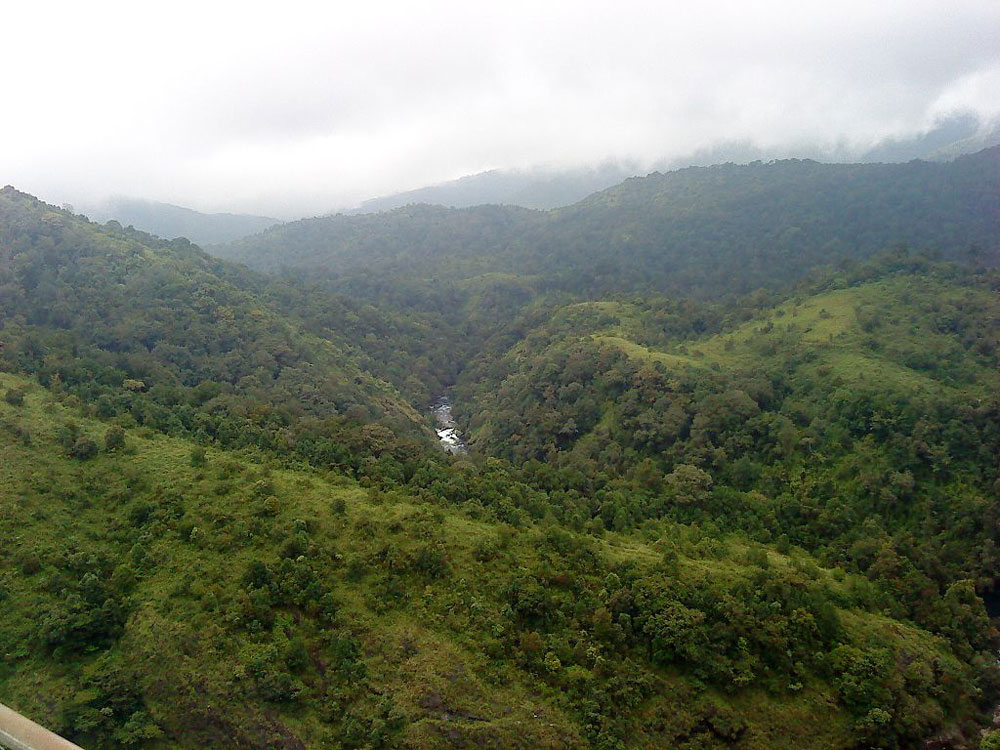
Indian epic Mahabharata, the forests of Palakkad are now preserved as the Silent Valley National Park in the state of Kerala. Located in the Western Ghats, the forests are also a part of the Nilgiri Biosphere Reserve and are famous for their vast collection of flora and fauna.
98. Srirangapatna, Mandya
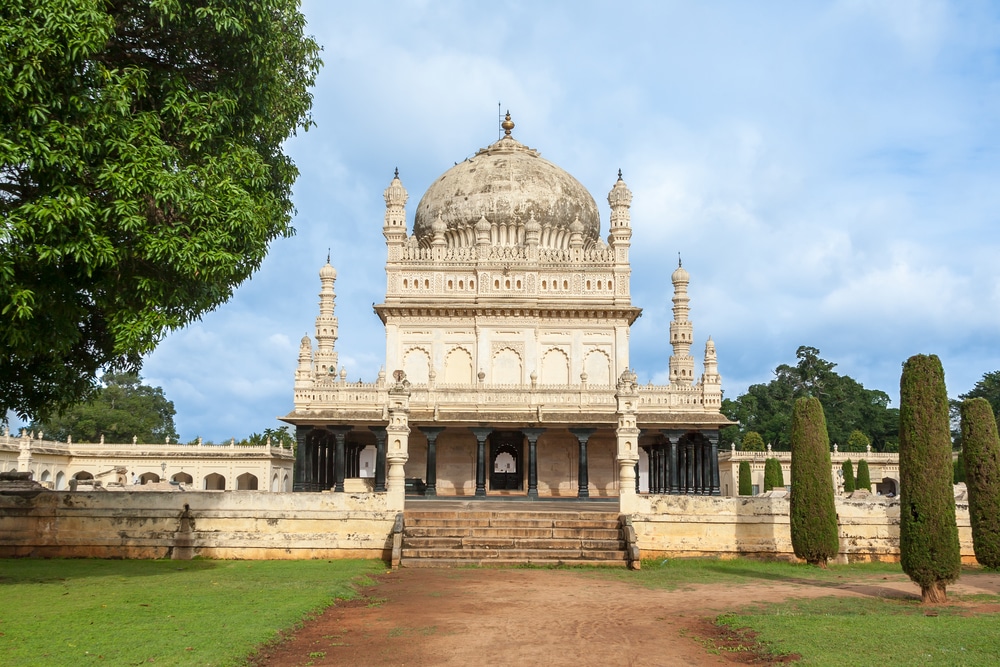
Located near the city of Mysore, Karnataka, Srirangapatna is home to the ancient Ranganathaswamy Temple, making it a major pilgrimage site for the Hindus. The building of the temple is attributed to the Ganga Dynasty but was later improved and expanded by the kings of the Hoysala and Vijaynagar empires. The city is also home to the Shivansamudra waterfalls, which are the 2nd largest in India.
99. Purana Qila, Delhi
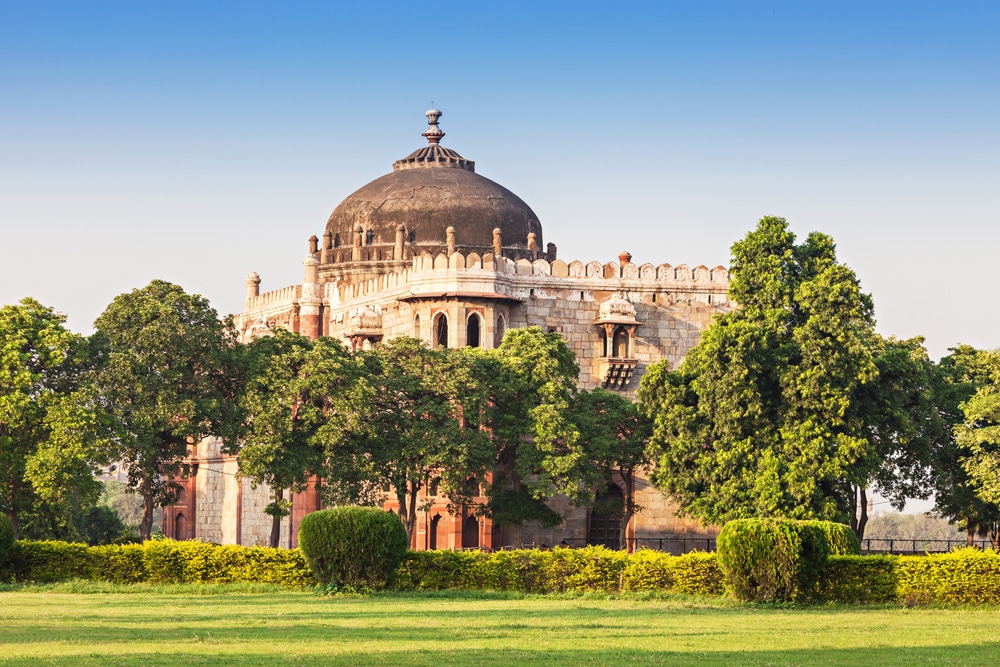
Purana Quila is the supposed site of Indraprastha, an ancient city built by the Pandavas. The site came under the control of the Mughal conqueror Humayun but was seized by Sher Shah Suri, who built and extended the fortifications to its present state and was known as the 6th historic kingdom of Delhi.
100. Chittorgarh Fort, Chittaur
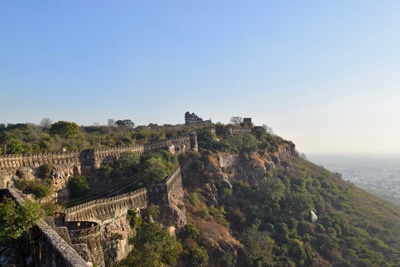
Chittorgarh is a UNESCO World Heritage Site and also has the largest fort in India. It was built by the rulers of the Mauryan dynasty and was later ruled by the Rajputs of Mewar for nearly 800 years who expanded it to its current state.


